GA DENS







issue get maximum


Using grasses for texture and movement



WATER WISE
An Australian family garden led by sustainability

Who wants grey? She�eld ,s blooming city streets
9 RAISED PLANTERS FOR EASY GROWING


Abutilon add a touch of the exotic

PLANTING IDEAS • BEAUTIFUL GARDENS • EXPERT ADVICE g i
u s i e t ma im
ss

Sculptures, water features and sundials made uniquely for you davidharber.co.uk | +44 (0) 1235 859300 New York | London | Dubai
We’ve reached peak holiday season and with it the perfect moment to enjoy our gardens and outside spaces. There’s much talk about the additional demands we now put on our gardens – spaces to entertain, outdoor kitchens and gyms, mindful sanctuaries – and that’s before we’ve even started growing anything, or taken into account current climate concerns.
By way of inspiration this issue, we’re highlighting five gardens that each show ingenuity and style in bringing small spaces to life (page 51) for their owners. From a tucked-away city corner, to a surprising urban jungle, the melding of hard and soft landscaping ensure these spaces are used to the full. Plus we ask each of the gardens’ designers to give us their top tips when it comes to tackling small spaces (pages 72).
We don’t, of course, all have access to our own garden. So how do we adapt our cityscapes and parks to widen access to green spaces? Our Gardening Talent profile this month is with Georgia Smith (page 29), who works on London’s Bankside to bring areas of planting wherever possible – be it sunflowers in a tree pit, or a pocket park amid the mix of offices and homes. Her aim is to enliven community ties through a connection to nature.

With much the same intent, Nigel Dunnett’s involvement in Sheffield’s Grey to Green scheme has seen swathes of glorious planting lining city roads (page 74). Not only eye catching, the planting is resilient, offers new pathways and stopping points for pedestrians, and is constructed to mitigate the risks of flooding.

We hope you enjoy the issue and find inspiration to improve our precious outdoor spaces.
EDITOR
Website gardensillustrated.com
Instagram @gardens_illustrated
Twitter @GdnsIllustrated
Facebook @gardensillustrated


Welcome
RICHARD BLOOM
Discover the planting highlights bringing colour to Sheffield’s city streets, page 74.
STEPHANIE MAHON,
JOHN CAMPBELL
AUGUST 2022 GARDENSILLUSTRATED.COM 3
�ontents
Places
32 Singularly Dutch A small garden in the Netherlands with a planting style that is distinctively of its place
74 Colouring in the city How Nigel Dunnett is turning the grey streets of Sheffield green
84 Motion picture A coastal garden that skilfully blends a mix of ornamental grasses to form a fluid and soothing patchwork
90 Nature and nurture Kathleen Murphy’s Australian garden is a masterclass in how to create a sustainable family space
Plants
20 Plantsperson’s favourites Gravetye Manor’s head gardener Tom Coward chooses his top ten plants for August
42 Plant profile: Abutilon Plantsman John Hoyland selects the best of these exotic-looking plants
Small gardens
52 Tales of the unexpected Lush planting and a meandering path create a sense of mystery in a long city garden
56 Cornered by nature Clever design ideas turn a small, corner into an inviting space
60 Mood enhancer A bright and airy seaside garden that is guaranteed to lift the spirits
64 Deceptively simple Designer
Sheila Jack has created a family woodland-inspired plot that’s a peaceful social space
68 Urban jungle Exotic planting helps transport the owners of this small garden back to the Kerala of their childhoods
72 Designers’ tips for small gardens Five designers offer their tips for making the most of limited space
People
29 Gardening talent Meet Georgia Smith of Better Bankside, who is working to green London’s streets
82 Who’s who Tijana Blanusa the head of the RHS’s Ecosystem Services Research Programme, on why you really should plant a hawthorn hedge
122 Gardens immemorial
Capturing the essence of a garden in words and pictures is notoriously difficult, but that doesn’t stop columnist Alice Vincent trying

Design
97 Design update Including news of a new Roman garden at The Newt in Somerset and the 2022 International Garden Festival at Domaine de Chaumont-sur-Loire
102 Sourcebook Nine of the best raised planters
Regulars
3 Welcome 6 Contributors
Palm
AUGUST 2022
ROBERT MABIC
ideas for small gardens
The constant gardener Benjamin Pope sets out the essential August jobs to ensure
garden looks great all year 30 Subscription offer Save when you subscribe to the digital edition of Gardens Illustrated 111 Books New books on the folklore of fungi and an almost love story between two 20th-century garden makers 116 Crossword and back issues
Next issue What’s coming up in our September issue 4 GARDENSILLUSTRATED.COM AUGUST 2022
11 Dig in This month: news of plans to restore a 70-year-old
House and the second Beth Chatto Symposium 17 Kitted out with space-saving
26
your
121
SEE PAGE 30
COV E R I M AGE COVER IMAGE
Small London garden by Alister Thorpe
ON T H E COV E R ON THE COVER
Small gardens, page 51
Abutilons, page 42
Who wants grey?, page 74
Using grasses, page 84
Water wise, page 90
Raised planters, page 102
EV E EVE N T S A N D NTS AND OFFE R S OFFERS
• Download any of our expert online talks from the latest Gardens Illustrated

Masterclass series – page 8
• Save money when you subscribe to the digital edition of Gardens Illustrated – page 30
Subscribe & save
out a digital subscription to Gardens Illustrated
take
Our packaging
copies of Gardens Illustrated are now delivered in paper wrapping instead of recyclable plastic polywrap. This paper wrap is 100% recyclable and made from sustainably sourced paper. Please recycle in your kerbside recycling bin. We would love to hear your feedback, please contact us at paperwrap@immediate.co.uk Hot colours pack a vibrant punch in this small Dutch garden, page 32.
Subscriber
Contributors























Noel Kingsbury

Noel visits a cleverly designed and richly planted garden in the Netherlands, page 32. “This is a garden that embraces colour while also reflecting a distinctly Dutch heritage of design too.”
Sonya Patel Ellis

Sonya explores a Miria Harris-designed small garden, page 56. “I love how Miria curated nature to transform this tiny corner into a green oasis and sensory al fresco dining area.”
Marnie Hawson

Marnie photographs the private family garden of Australian designer Kathleen Murphy, page 90. “I love Kathleen’s gardens so much that I got her to design one for my house.”

CONTRIBUTING EDITORS






James Basson
James lives in the South of France where he runs Scape Design, a practice specialising in low-maintenance and dry gardens. He is a fervent advocate for creating sustainable landscapes. The winner of four Chelsea Gold medals, he was awarded Best in Show in 2017.



Fergus Garrett
Fergus was appointed head gardener at Great Dixter by Christopher Lloyd in 1993. He is passionate about passing on his knowledge through student programmes at Dixter and worldwide lectures. He was awarded an RHS Associate of Honour in 2008 and an RHS Victoria Medal of Honour in 2019.
Anna Pavord
Anna’s books include her bestseller The Tulip and most recently Landskipping. For 30 years she was The Independent’s gardening correspondent. In 2000 the RHS awarded her the Veitch Memorial Medal. She lives and gardens in Dorset.


Dan Pearson
Dan is one of the UK’s best-known garden designers, familiar to many through his gardening columns in the Observer magazine. Eight of his gardens, including the Tokachi Millennium Forest in Japan, have won awards and he was awarded Best in Show for his garden at Chelsea in 2015.


Sarah Price
Sarah is one of the UK’s most sought-after garden designers who gained worldwide recognition for her designs for the 2012 London Olympic Park. She won Gold at Chelsea in 2012 and 2018, and was GMG Garden Columnist of the Year in 2016 for her design series in Gardens Illustrated


ANDREW MONTGOMERY ANDREW MONTGOMERY P L A N T S U P P O R T S & Garden Artefacts Beautiful designs for perennials, roses, shrubs & climbers Made in England www.leanderplantsupports.co.uk Tel. 01773 550495 01473 328272 • sales@s chsupplies.c o.uk • w w w.s chsupplies.c o.uk G a r d e n Wat e r e r s & S p r ay e r s Contact us today for a FREE brochure featuring over 200 British products, or visit our website to find out more. M A D E I N B R I TA I N SCH manufacture a vast selection of robust garden waterers & sprayers, perfect for areas far from your fixed water source. Estate & Garden Waterers Hanging Basket Waterers Indoor Watering Units Indoor Units Small Sprayers Towed Sprayers Towed Push Sprayers Push
CARMEL KING
GA R DENS

HOW TO GET IN TOUCH WITH US TOUCH
Subscription enquiries and back issues
UK 03330 162114
USA/CANADA 1 866 464 8103 (TOLL-FREE)
REST OF THE WORLD +44 1604 973722
UK buysubscriptions.com/contact buysubscriptions.com/gardensillustrated
USA/CANADA GILcustserv@cdsfulfillment.com, britsubs.com/garden

UK/REST OF THE WORLD Gardens Illustrated, PO Box 3320, 3 Queensbridge, Northampton NN4 7BF.
USA/CANADA Gardens Illustrated, PO BOX 37495, Boone, IA 50037-0495 USA.
Advertising enquiries
+44 (0)117 300 8805 heather.golden@ourmedia.co.uk
Editorial enquiries
+44 (0)117 300 8622 gardens@gardensillustrated.com
Gardens Illustrated, Our Media Ltd (an Immediate Group Company), Eagle House, Bristol BS1 4ST.
Syndication & Licensing
Gardens Illustrated is available for licensing and syndication. +44 (0)117 300 8787 emma.brunt@ourmedia.co.uk
App support
For App support please visit apps.immediate.co.uk/support
We abide by IPSO’s rules and regulations. To give feedback about our magazines, please visit ourmedia.co.uk, email editorialcomplaints@immediate.co.uk or write to Katherine Conlon, Our Media Ltd (an Immediate Group Company), Eagle House, Bristol BS1 4ST.

MAGAZINE CONTACTS
EDITORIAL
Editor Stephanie Mahon
Deputy editor Sorrel Everton
Art director David Grenham
Deputy art editor Niki Goss
Production editor Juliet Giles
Digital editor Daisy Bowie-Sell
Commissioning content editor Veronica Peerless
Editorial and digital assistant Molly Blair
Botanical adviser Dr James Compton
Thanks this issue Hilary Brown, Jodie Jones, Rosemary Smith, Rosanna Morris, Abigail Whyte
ADVERTISING
Group advertising manager Laura Jones 0117 300 8509 laura.jones@ourmedia.co.uk


Portfolio advertising manager Heather Golden 0117 300 8805 heather.golden@ourmedia.co.uk
Senior brand sales executive Mia Dorrington 0117 300 8266 mia.dorrington@ourmedia.co.uk
Brand sales executive Mica Enwright 0117 300 8756 mica.enwright@ourmedia.co.uk
Advertising designer Parvin Sepehr
INSERTS
Laurence Robertson +353 (0)876 902208
CIRCULATION, MARKETING, PROMOTIONS, PRESS & PR
Newstrade manager John Lawton
Subscriptions director Jacky Perales-Morris
Direct marketing manager Aimee Rhymer
Buyer Karen Flannigan
PR & Outreach Manager for Comms Emma Cooney emma.cooney@ourmedia.co.uk
MANAGEMENT
Chief executive officer Tom Bureau
Group managing director Our Media Andy Marshall
Managing director Our Media Marie Davies
Head of brand marketing Rosa Sherwood
Publishing assistant Lara Von Weber
SYNDICATION & LICENSING
Director of licensing & syndication Tim Hudson
PRODUCTION
Production director Sarah Powell
Group production manager Louisa Molter
Production co-ordinator Georgia Tolley
Jan-Dec 2021 49,146* *Combined print and digital sales Time to change trousers? Genus trousers are here for long days of graft in the garden. Your secateurs will be at hand in stab-proof pockets, whilst waterproof kneepads and technical fabrics will keep you comfortable for longer. www.genus.gs • 0203 617 1166 ® The Royal Horticultural Society. The Royal Horticultural Society, and its logo, are trade marks of The Royal Horticultural Society (Registered Charity No 222879/SC038262) and used under licence from RHS Enterprises Limited. www.andrewkaysculpture.co.uk 07740 306412 Free UK delivery LIFE SIZE ANIMAL SCULPTURE
Standard subscription rates: UK £64.87 per annum; Eire and Europe �79 for 13 issues; rest of the world US$112 for 13 issues. Distribution Frontline, Peterborough. US distribution Source IPD/Speedimpex. Email intlquery@seymour.co.uk Printed in the UK by William Gibbons Ltd. Gardens Illustrated (ISSN 0968-8920) (USPS 015-608) is published 13 times a year (monthly with a Summer issue in June) by Our Media Ltd (an Immediate Group Company), Eagle House, Bristol BS1 4ST, UK. Distributed in the USA by NPS Media Group, 2 Corporate Drive, Ste. 945, Shelton, CT 06484. Periodical postage paid at Shelton, CT and additional mailing offices. POSTMASTER: Send address changes to Gardens Illustrated PO Box 37495, Boone, IA 50037-0495. Unsolicited manuscripts, artwork or transparencies are accepted on the understanding that the publishers incur no liability for their storage or return. The contents of this magazine are fully protected by copyright and may not be reproduced without permission. The Gardens Illustrated cover is printed on 250gsm FSC Amadeus produced in Belgium by Burgo. The Immediate Media Company Limited is working to ensure that all of its paper is sourced from well-managed forests. This magazine can be recycled for use in newspapers and packaging. Please remove any gifts, samples or wrapping and dispose of it at your local collection point. All prices are correct at time of going to press. © Our Media Ltd (an Immediate Group Company) 2022. Member of the Audit Bureau of Circulation. ISSN 0968-8920.
THIS MAGAZ NE IS OWNED MAGAZINE AND PUBLISHED BY
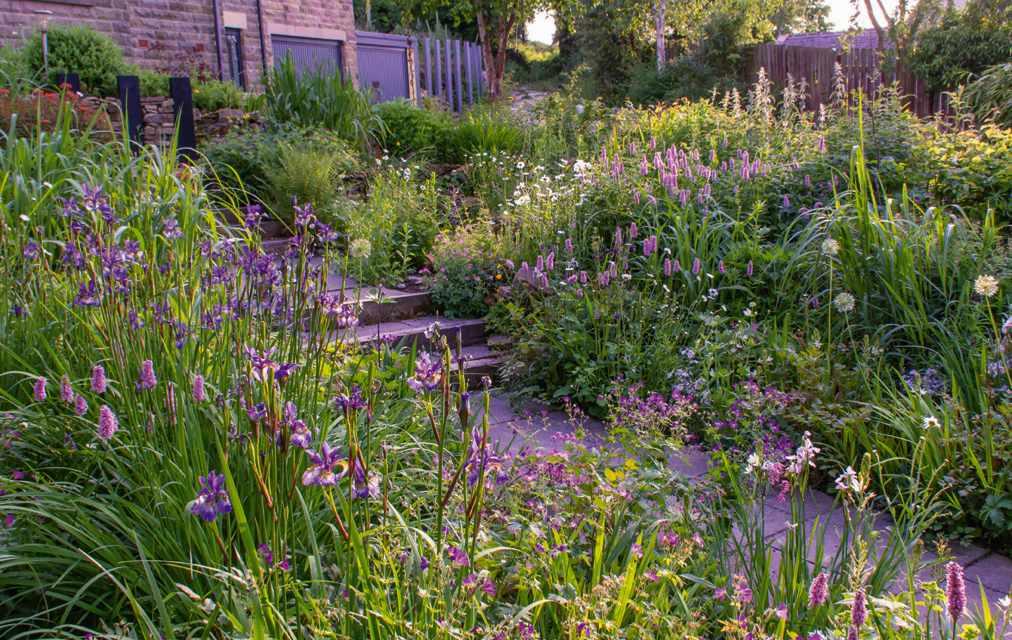




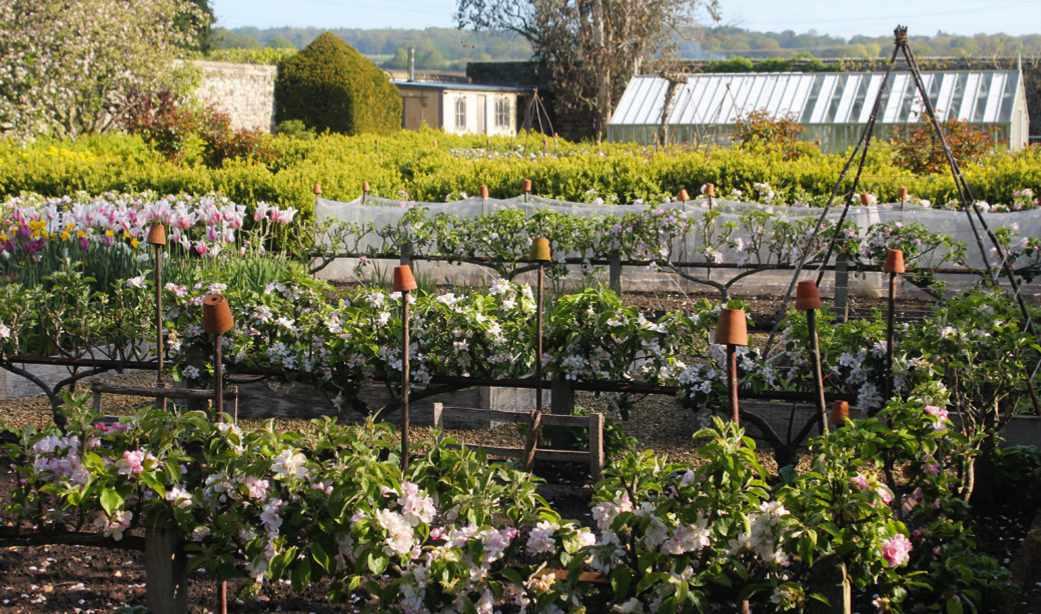

ANDREW MONTGOMERY, CRISTIAN BARNETT, MATTHEW J. THOMAS. How to design a sustainable garden WITH JULIET SARGEANT GARDEN DESIGNER AVAILABLE TO DOWNLOAD AND WATCH NOW Learn from some of the UK’s leading gardeners and designers in our 2022 series of Masterclass talks – all available to download and watch now Masterclass ONLINE £15 EACH How to grow a productiveyear-roundgarden WITH BENJAMIN POPE HEAD GARDENER AND COLUMNIST Sponsored by How to create plantinglong-seasonschemes WITH NIGEL DUNNETT, GARDEN DESIGNER AND PROFESSOR OF PLANTING DESIGN AND URBAN HORTICULTURE, UNIVERSITY OF SHEFFIELD gardensillustrated.com/masterclass
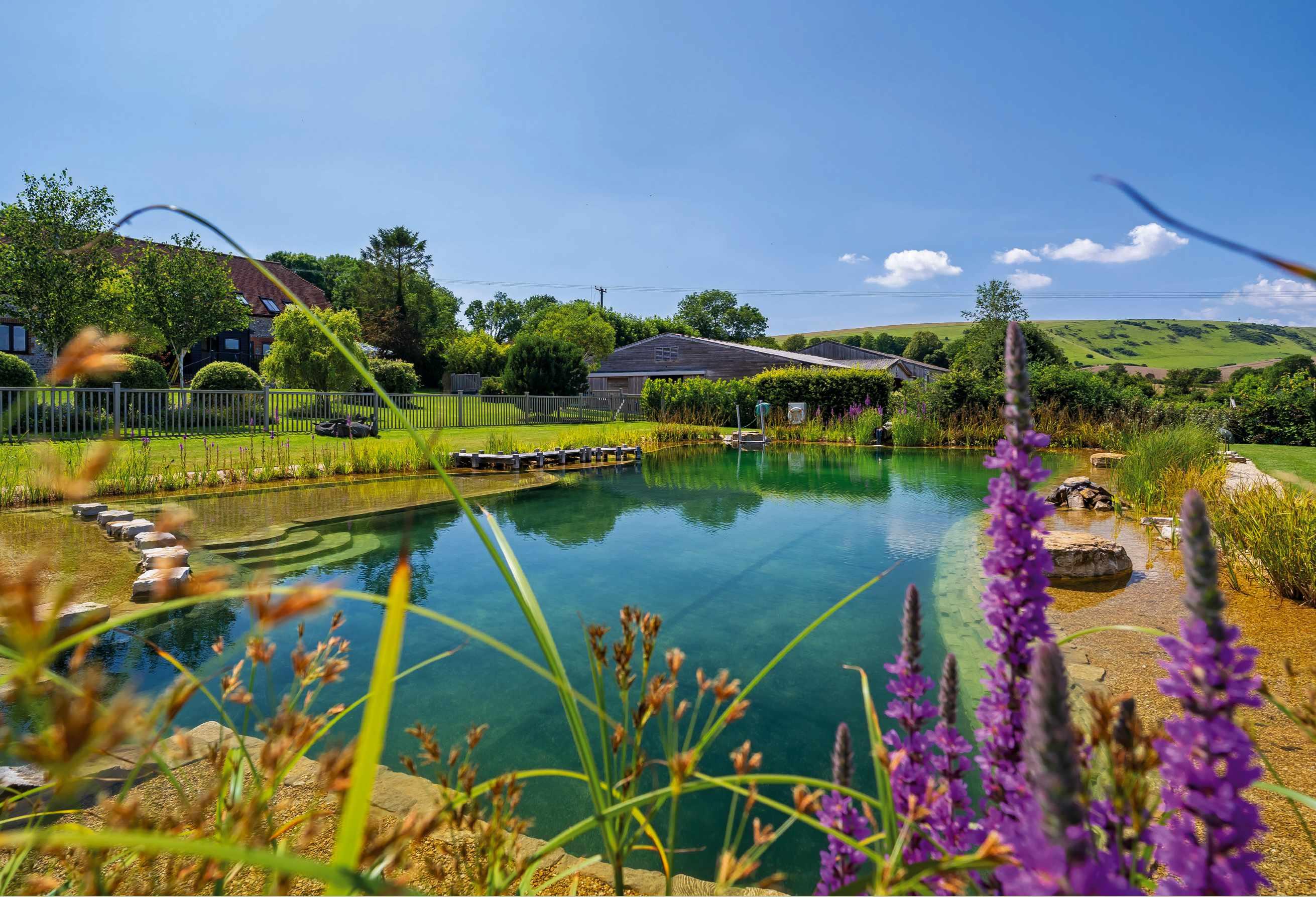

TIMELESS CLOTHING AND EQUIPMENT FOR MEN AND WOMEN, ALWAYS MADE BY HAND IN THE UK.
carriercompany.co.uk

DIG IN
What’s new, what’s growing and what’s going on this month
Platinum fronds
Back in 1952, the year of HM The Queen’s accession to the throne, greenhouse manufacturer Hartley created a beautiful Victorian-style Palm House for Brighton & Hove Council to house tropical plants. In the ensuing 70 years the Palm House, which sits at the entrance to the Stanmer Park Estate’s walled garden, has sadly fallen into disrepair while the walled garden itself has been given a new lease of life. Thanks to a £5.8 million grant from the Heritage Lottery Fund for the restoration of Stanmer Park’s
landscape, the walled garden has been redeveloped by Plumpton College to become One Garden Brighton – a space where visitors can take inspiration from a series of themed gardens, and also learn some new skills. Now to mark The Queen’s Platinum Jubilee, One Garden Brighton is launching an appeal to restore the ornate glasshouse to its previous glory. The target is to complete the work and open the glasshouse to the public by 2024, when it will be renamed the Jubilee Palm House. onegardenbrighton.com
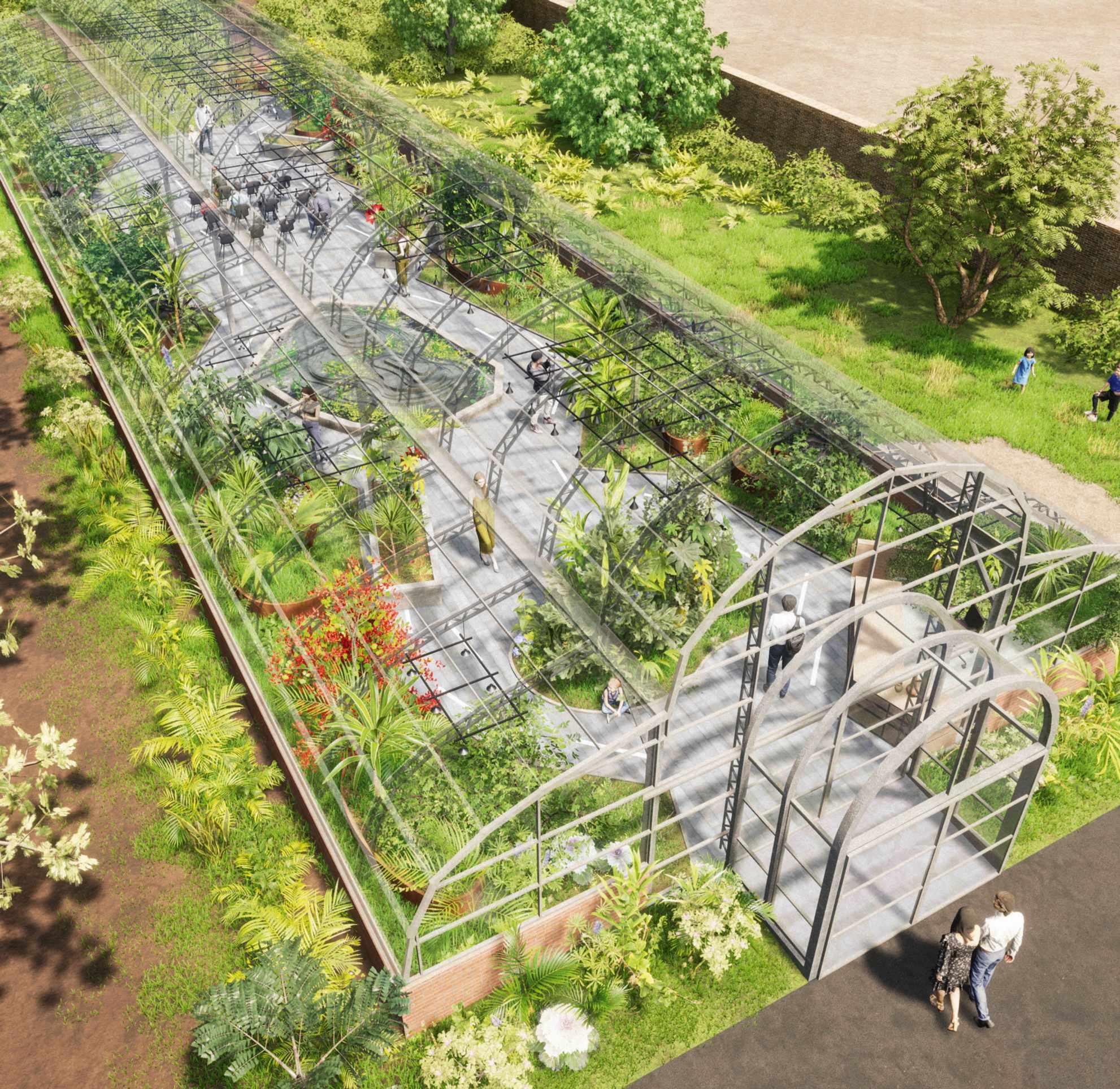
ONE GARDEN BRIGHTON AUGUST 2022 GARDENSILLUSTRATED.COM 11
News
COMPILED BY MOLLY BLAIR
FAIRY HIGHLIGHTS
Many garden lovers will know Pensthorpe in Norfolk for its Piet Oudolf-designed Millennium Garden, which is wonderfully atmospheric in winter. Now the 700-acre nature reserve has a new garden attraction to weave a little magic throughout the year. The Glade Sculpture Garden features evergreen trees, grasses, ferns and wildflowers. The focal point is a bespoke sculpture of a fairy Alula (above right) surrounded by three towering dandelion sculptures, all by artist Robin Wight. Dotted throughout the space are mosaics from Primrose Mosaics and Katie Green, and glass sculptures by Jenny Pickford (shown above). Admission to the park starts at £12.95. pensthorpe.com
Pretty in pink
If you’re searching for a new plant to add months of bright colour to your borders, look out for the new Geranium ‘Kelly Anne’. Similar to the ever-popular Geranium Rozanne (= ‘Gerwat’), this compact, low-maintenance hardy geranium has bright-pink flowers with a paler centre and dark-pink veins, and flowers from late spring to the first frost. It won’t be widely available until next year but you can find it now at Crocus with prices starting at £7.99. crocus.co.uk
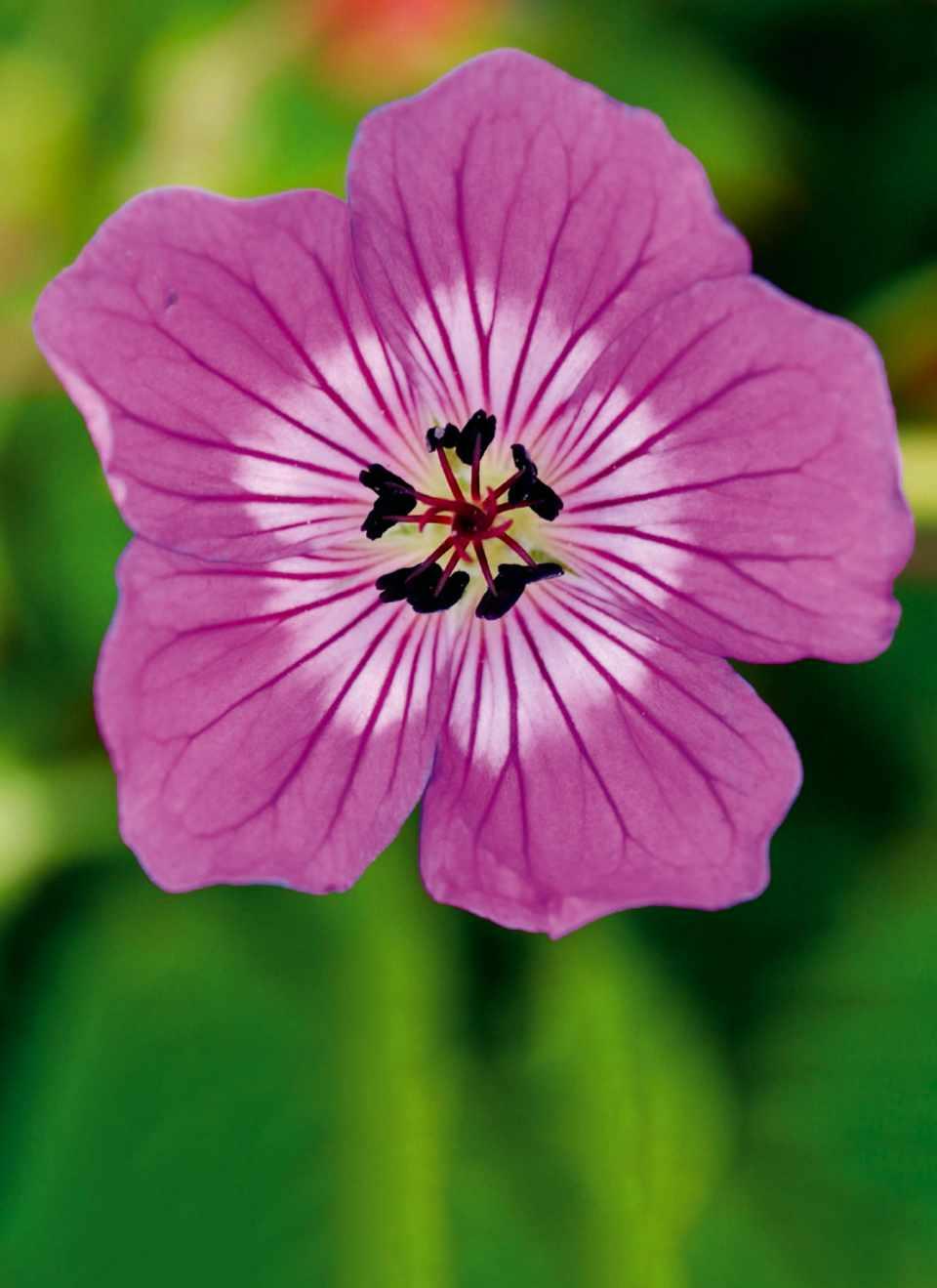
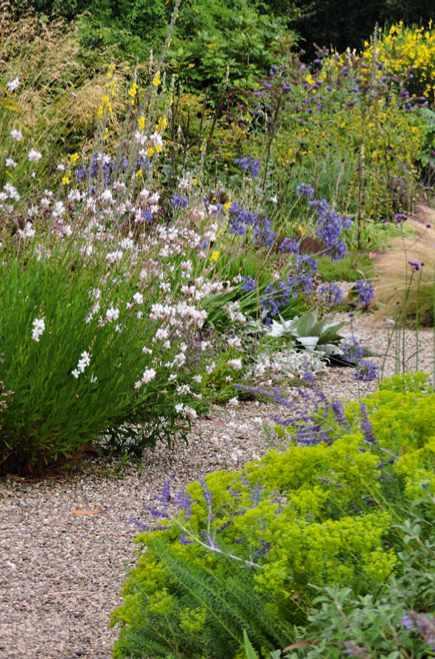
HEAD SPACE
Don’t miss the second Beth Chatto Symposium – Rewilding the Mind at the University of Essex. Hosted by designer Arit Anderson, the two-day symposium aims to generate a better understanding of the benefits of using plants in an ecological and sustainable way. Speakers include Fergus Garrett, Dave Goulson, Sarah Price, Tom and Sue Stuart-Smith, and Adam Hunt. 1-2 September. Tickets cost £350, which includes a garden party at Beth Chatto Gardens. bethchatto.co.uk
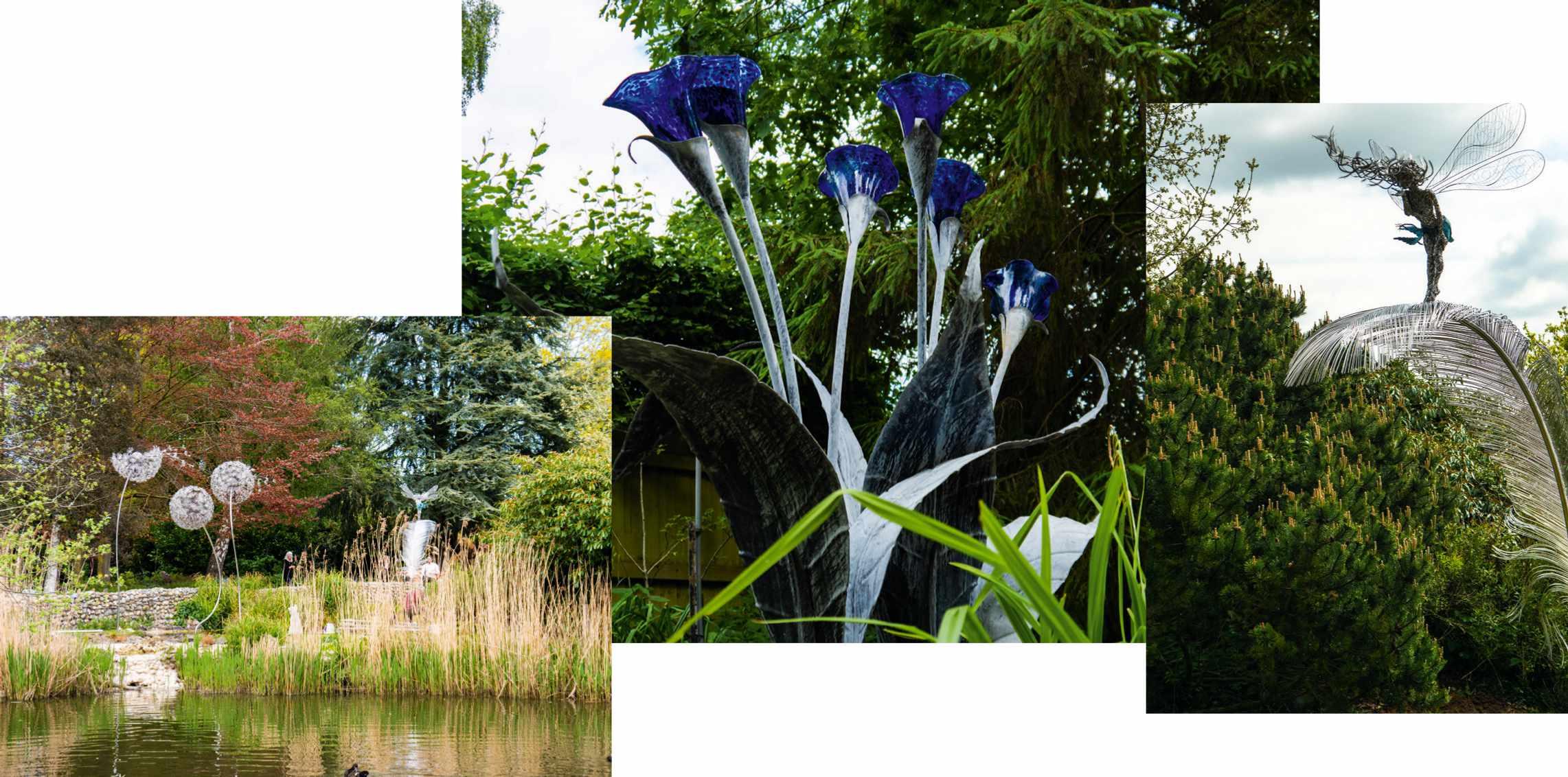

BETH CHATTO
PENSTHORPE
Pushing the boat out
Earlier this year, you may have seen Chris Beardshaw’s Gold medal-winning RNLI garden (right) at the RHS Chelsea Flower Show. Chris is now helping the charity raise much-needed funding for its life-saving work with the launch of a new campaign: RNLI Gardens. Anyone can sign up to host a garden-focussed fundraiser, whether that be a tea party or plant sale in your garden, a family barbecue, or even a picnic in the park, and encourage their guests to donate to the charity via a fundraising page. You’ll find plenty of ideas for events, as well as a wealth of materials, from invitation cards to RNLI bunting, to help make your summer event a success at rnli.org/gardens
3 FOR THE GARDEN… SHADE SOLUTIONS
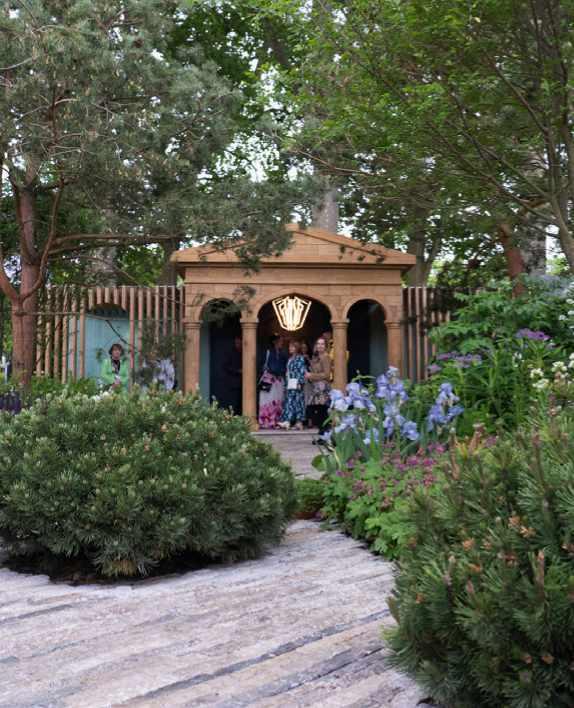
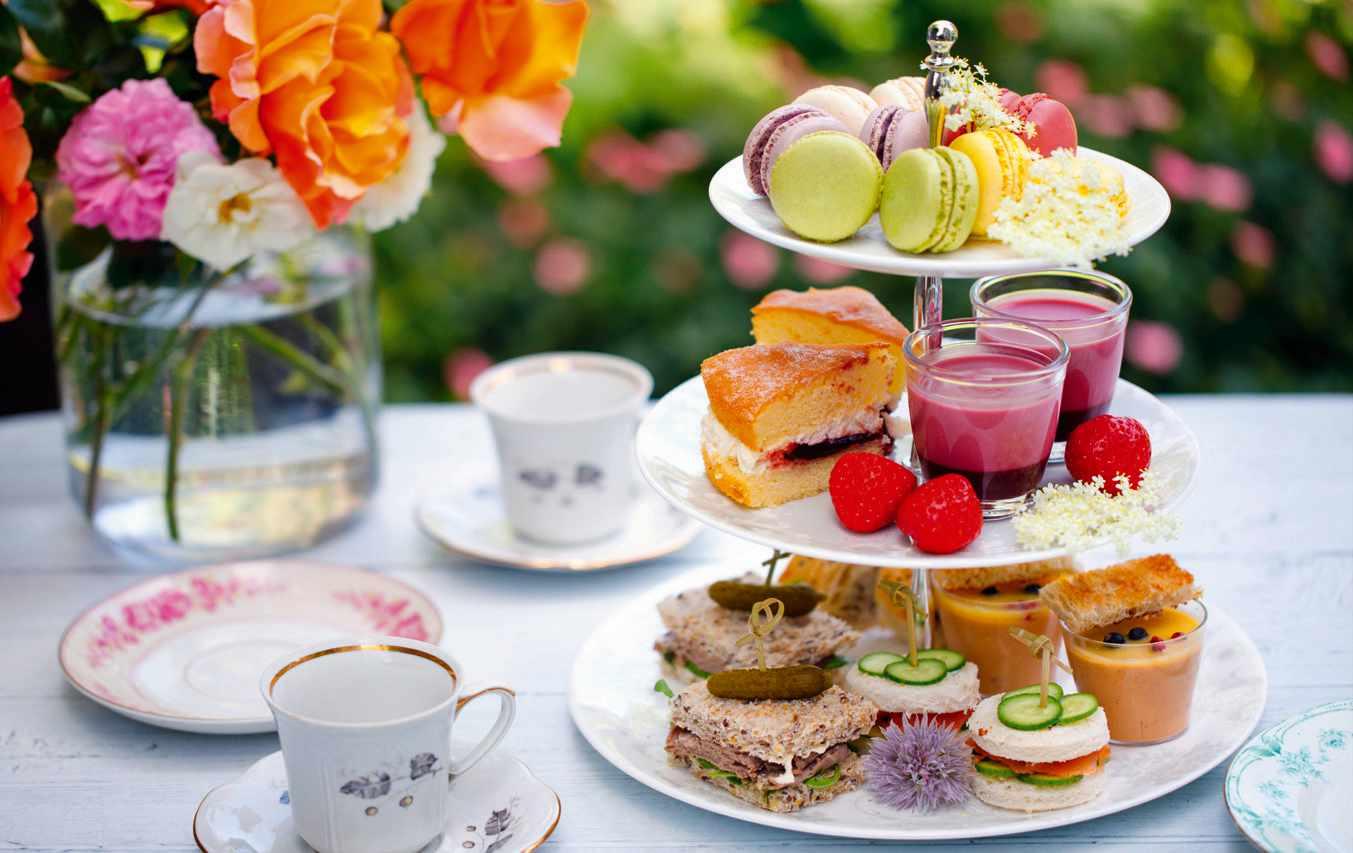
Végétal features designs from the Chaumet archives, including Joseph Chaumet’s hellebore, primrose and dianthus designs for brooches, c. 1890


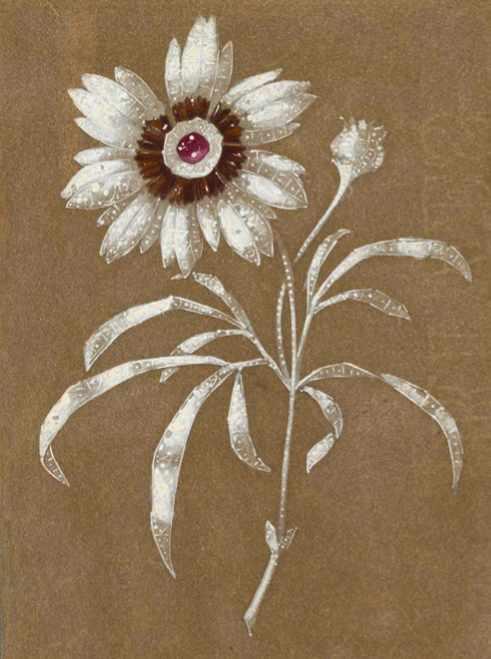
Beauty in nature
Should you be planning a trip to Paris this summer be sure to catch the final few weeks of Végétal – L’École de la beauté, at the Palais des Beaux-Arts. Held in conjunction with jewellers Maison Chaumet, the exhibition invites visitors to look at nature through the universal prism of art and beauty. It’s been created as an imagined herbarium by botanist Marc Jeanson, and includes artworks in different media, including paintings, textiles, furniture and jewellery from Chaumet and other houses. Until 4 September. beauxartsparis.fr
ADJUSTABLE
3m Freestanding Parasol, oyster, £120, John Lewis & Partners, johnlewis com

LOUNGING
Premium Beach Tent, Lauren’s navy stripe, £297 Business & Pleasure Co 0800 587 7645 amara com

ORNATE
Aretha Octagonal Parasol, green, from £965, East London Parasol Company, eastlondonparasols.com
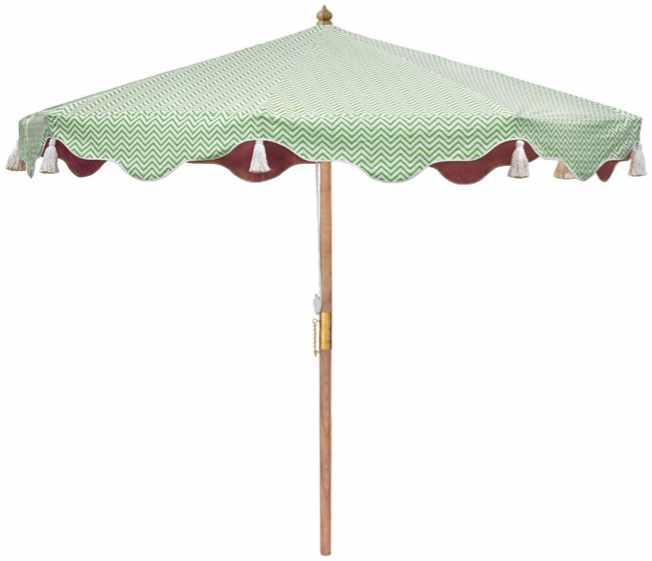
AUGUST 2022 GARDENSILLUSTRATED.COM 13 MAISON
CHAUMET ARCHIVES
RNLI, SHUTTERSTOCK
DIARY: AUGUST
1 Tracey Emin: I Lay Here For You
Jupiter Artland’s newest permanent artwork, Tracey Emin’s I Lay Here For You (right), forms the centrepiece of a new exhibition. Alongside the new 6m bronze, sited by Emin in a beech grove, will be new works presented by the artist in Jupiter’s indoor gallery spaces. Until 2 October, 10am-4pm. Included in garden admission of £10. Jupiter Artland, Bonnington House, Steadings, Wilkieston, Edinburgh EH27 8BY. Tel 01506 889900, jupiterartland.org
2 Flower Farm Tour
Take a guided tour with Georgie Newbery from Common Farm Flowers around the farm’s seven acres of garden and cut flower patches and learn more about how a flower farm works. 10 August, 12pm and 6pm. £15. Common Farm Flowers, Barrow Lane, Charlton Musgrove, Somerset BA9 8HN. Tel 01963 32883, commonfarmflowers.com
3 Forest Bathing at the National Botanic Garden of Wales
Join a guided forest bathing session and mindfully immerse your senses among the trees to enjoy the benefits this brings to mind, body and soul. Forest bathing, which has its roots in Japan, has been shown to have wide-ranging benefits, including reducing stress and anxiety while increasing concentration and creativity. 16 August, 10.30am-12pm. £25. National Botanic Garden of Wales, Middleton Hall, Llanarthne, Carmarthenshire SA32 8HN. Tel 01558 667149, botanicgarden.wales
4 Morning Summer Garden Design Walk – LCGD
Join Andrew Fisher Tomlin and Andrew Wilson, directors of the London College of Garden Design, on a walking tour of RHS Garden Wisley that will explore and analyse many of its design features. 16 August, 10.30am-1pm. £65. RHS Garden Wisley, Surrey GU232 6QB. Tel 01483 762955, lcgd.org.uk
5 Rosemoor Flower Show
The season’s floral celebrations continue in North Devon this month with the RHS Garden Rosemoor Flower Show. Featuring live demonstrations and music alongside specialist nurseries and knowledgeable growers. 19-21 August, 10am-6pm. From £22.95. RHS Garden Rosemoor, Great Torrington, Devon EX38 8PH. Tel 01805 624067, rhs.org.uk
6 Introduction to Dry-stone Walling
Try your hand at creating a dry-stone wall on this one-day introductory course with professional waller John Hulbert at RHS Harlow Carr. Sturdy shoes or boots and tough gloves advisable. 20 August, 10am-4pm. £69. RHS Garden Harlow Carr, Crag Lane, Harrogate, North Yorkshire HG3 1QB. Tel 01423 565418, rhs.org.uk

7 Late Summer Plant Fair
Hole Park Gardens, which usually opens only on Wednesdays and Thursdays, will be opening its gates for a special Saturday plant fair in August. Nurseries including Pineview Plants and Rose Cottage Plants will be in attendance and the tea rooms will be serving lunch and cakes. 21 August, 11am-4pm. £10. Hole Park, Benenden Road, Rolvenden, Cranbrook, Kent TN17 4JA. Tel 01580 241344, plant-fairs.co.uk
8 Summertime
Relax with a picnic in the grounds of opera garden West Green House and enjoy a lunchtime concert of easy-listening classics, including Gershwin’s famous lullaby from Porgy and Bess 27 August, 12pm. £47. West Green House Gardens, Thackham’s Lane, nr Hartley Wintney, Hook, Hampshire RG27 8JB. Tel 01252 848676, westgreenhouse.co.uk
9 Glyndebourne Open Gardens
Twelve acres of gardens surrounding the famous East Sussex opera house will be open to the public for one weekend in September. Highlights include the heavily scented Urn Garden and the sunken Bourne Garden. 3-4 September, from 11am. £12. Glyndebourne, Lewes, East Sussex BN8 5UU. Tel 01273 815000, glyndebourne.com
10 Landscape Trade Show
Register now for the industry trade show LANDSCAPE, which brings together garden designers, landscape architects and more from across the UK and beyond. 28-29 September, 10am-5pm. National Exhibition Centre, North Avenue, Birmingham B40 1NT. landscapeshow.co.uk
All information is correct at time of going to press, but may be subject to change. Tickets for events may be limited and may have to be booked in advance. Please be sure to check all opening times and advice on any local restrictions before travelling.
1414 GARDENSILLUSTRATED.COM AUGUST 2022
DIG IN EVENTS
JAMES BELLORINI
COMPILED BY MOLLY BLAIR AND ANNIE GATTI
2 9 10 6
1
RHS/ LEE BEEL
COMMONFARMFLOWERS.COM
ALAN POLLOK MORRIS COURTESY JUPITER ARTLAND

rhinogreenhouses.co.uk 0800 694 1929 Welcome the joys of spring from within your very own Rhino greenhouse. Ultra-strong and beatifully engineered to provide everything you need on your gardening journey, it’s the perfect space to protect and grow your plants as the days get longer and nature blossoms back into life.

@torc_pots www.torcpots.com
KITTED OUT
Stylish and space-saving ideas for small gardens

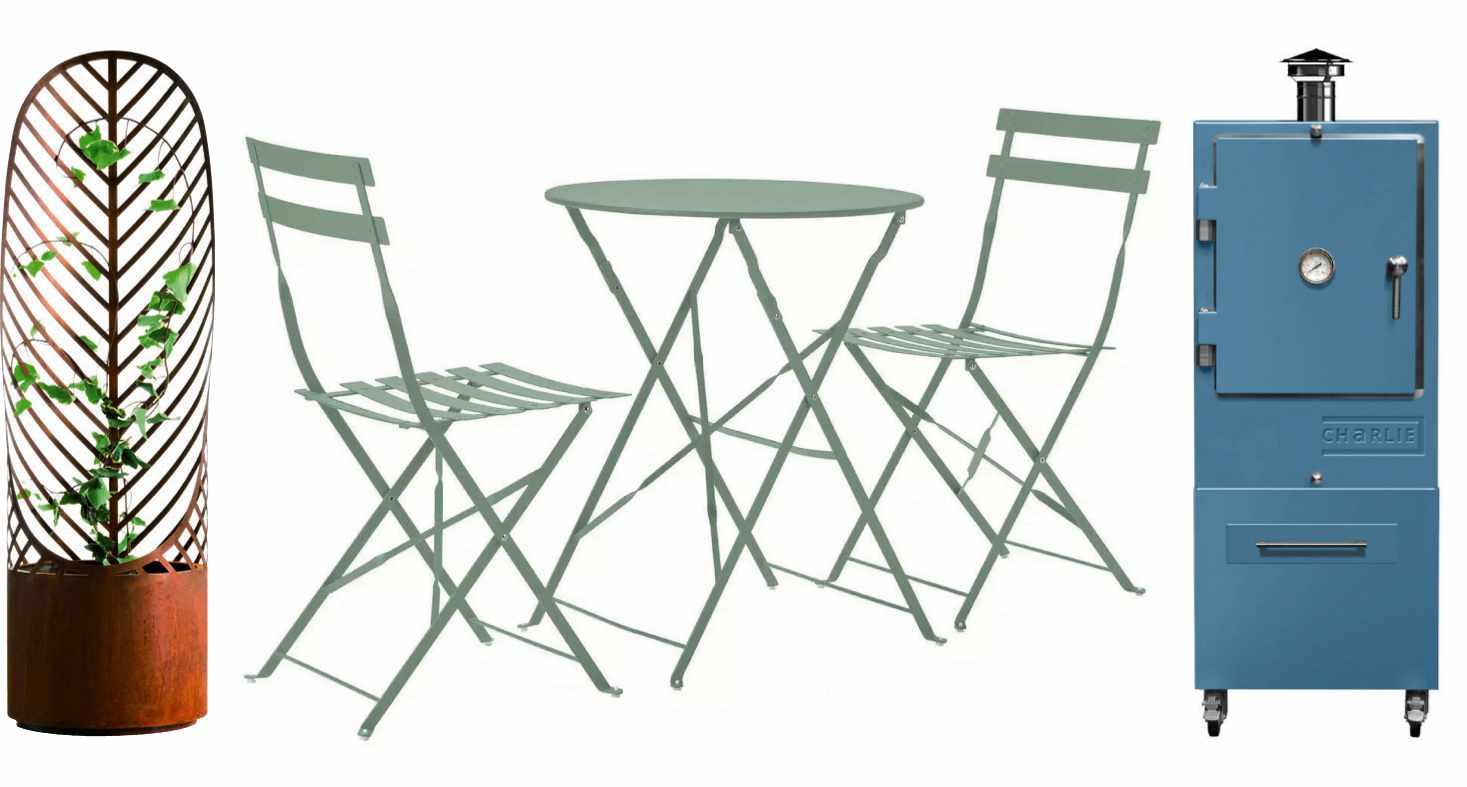 COMPILED BY NIKI GOSS
COMPILED BY NIKI GOSS
3908

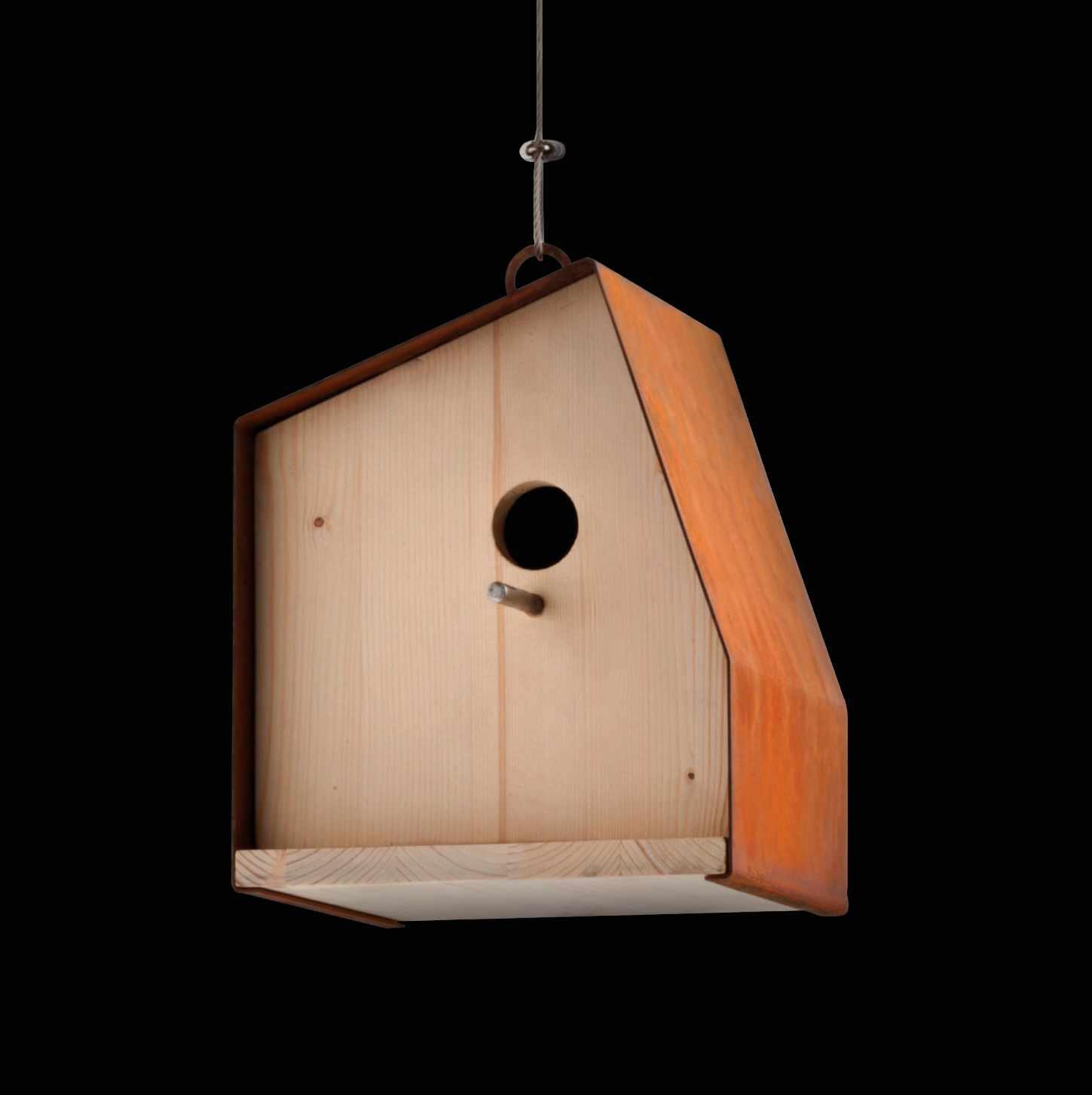
AUGUST 2022 GARDENSILLUSTRATED.COM 17
DIG IN SHOPPING
1. Nest House No.1 Bird House, bleached spruce and Corten steel, W 20cm x D 18cm x H 26cm, £621, 020 3908 5605, houseofdome.com
2 4 3 5 6 1 8 7
2. Tabletop Pizza Oven, compact, £395, 0330 333 2123, coxandcox.co.uk 3. Siesta Hammock Bench, green, W 190cm x D 65cm x H 95cm, £1,221, 020
5605, houseofdome.com 4. Water Resistant Garden Cushion, ferns, 45cm x 45cm, £19.99, 0161 511 9959, celinadigby.co.uk 5. Florenity Verdi Potting Table, natural, W 70cm x D 41cm x H 112cm, £154.99, 0333 103 6677, robertdyas.co.uk 6. Charlie Outdoor Charcoal Oven, blue marlin, £4,950, 020 3326 9464, charlieoven.com 7. Eve 2 Seater Folding Bistro Set, sage green, £67, 0345 640 2020, argos.co.uk 8. Screen-pot 1 Plant Outdoor Planter, Ø 44cm x H 146cm, £1,138, 020 3908 5605, houseofdome.com
7739 1869,

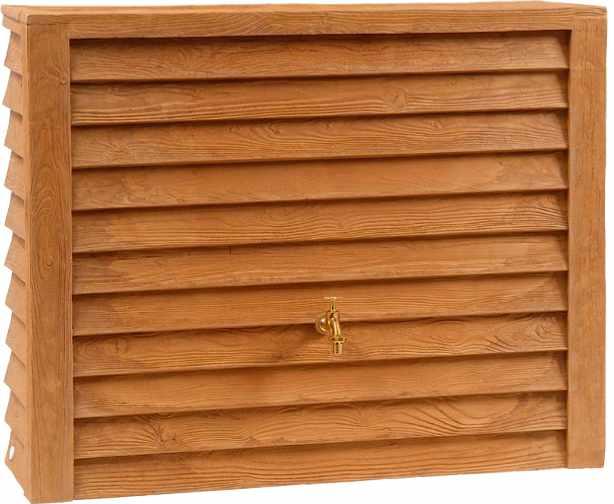

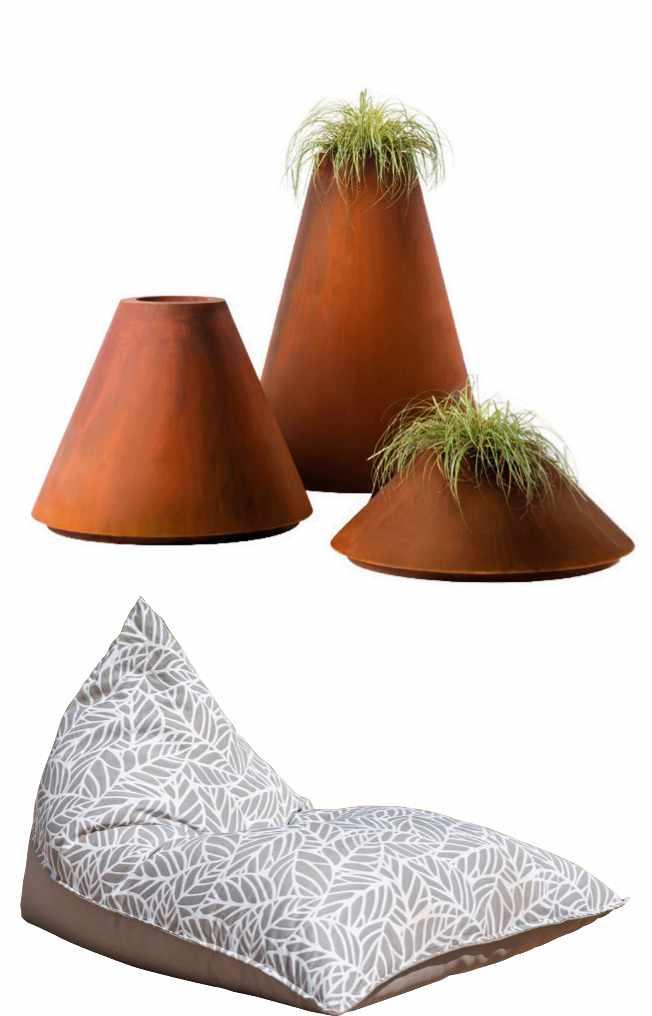


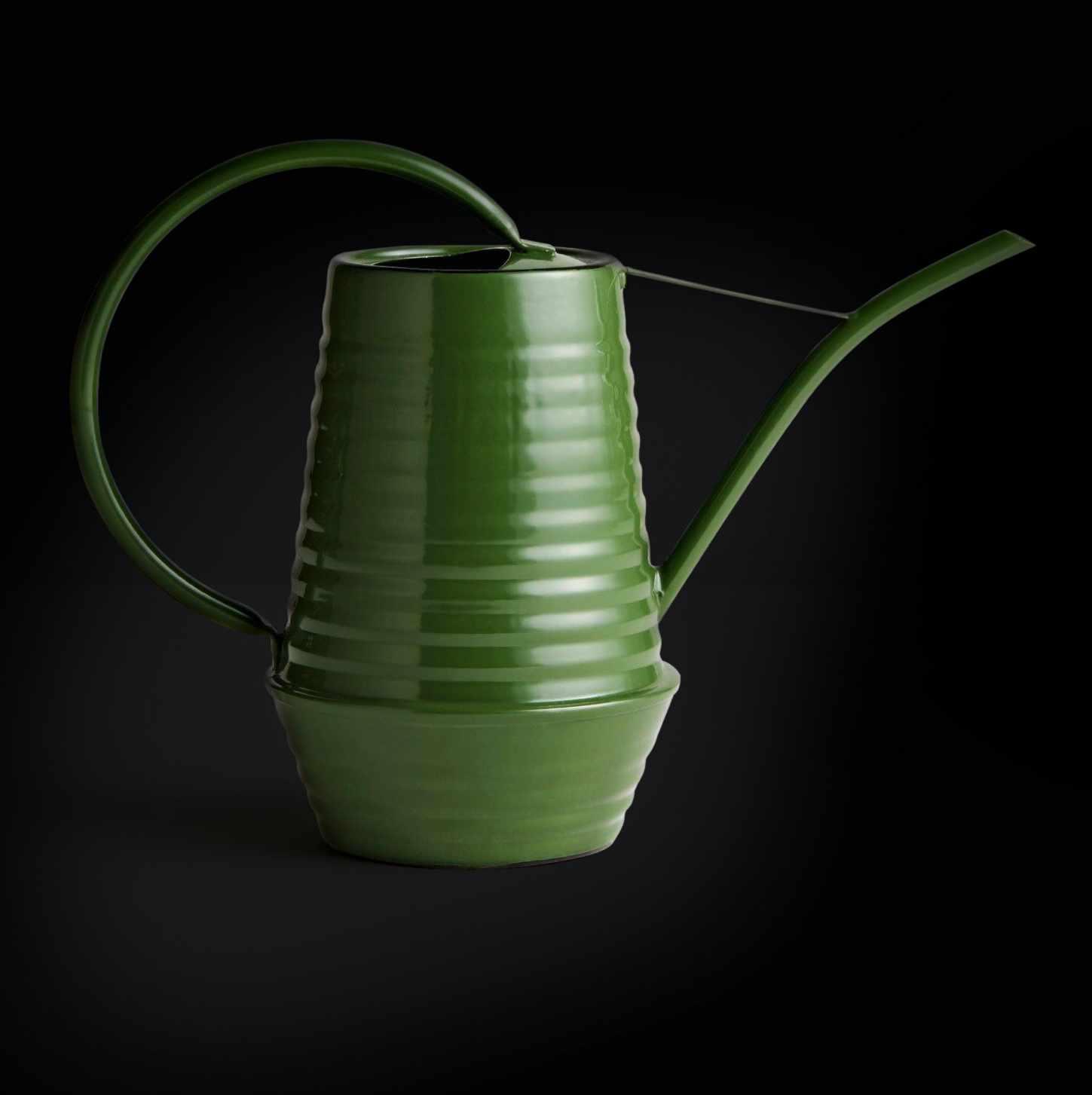 1. Metal Watering Can, French green, 0.9L, £16, toa.st 2. Conique Outdoor Planters, Corten steel, Ø 80cm x H 27cm, £1,138, Ø 80cm x H 62cm, £1,190, Ø 80cm x H 102cm, £1,241, 020 3908 5605, houseofdome.com 3. Indoor Outdoor Bean Bag Lounger, palm pumice, £290, 01580 753903, armadillosun.com
4. Woody Wall Tank Space-saving Water Butt, 350L, tap included, W 124cm x D 40cm x H 100cm, £399.99, 01608 661500, garantiauk.co.uk
1. Metal Watering Can, French green, 0.9L, £16, toa.st 2. Conique Outdoor Planters, Corten steel, Ø 80cm x H 27cm, £1,138, Ø 80cm x H 62cm, £1,190, Ø 80cm x H 102cm, £1,241, 020 3908 5605, houseofdome.com 3. Indoor Outdoor Bean Bag Lounger, palm pumice, £290, 01580 753903, armadillosun.com
4. Woody Wall Tank Space-saving Water Butt, 350L, tap included, W 124cm x D 40cm x H 100cm, £399.99, 01608 661500, garantiauk.co.uk
18 GARDENSILLUSTRATED.COM AUGUST 2022 DIG IN SHOPPING 2 3 4 5 6 7 8 1
5. Cosiscoop Basket Fire Lantern, olive, Ø 26cm x H 31cm, £150, 0330 433 9899, ruma.co.uk 6. Standing Water Feature, round, glass fibre concrete with treated beech wood legs, Ø 32cm x H 33cm, £150, 0330 333 2123, coxandcox.co.uk 7. Plant Rack, lockable wheels, W 100cm x D 35cm x H 170cm, £660, 020
scp.co.uk 8. Roam Ultra Portable Smart Speakers, sunset, olive and wave, W 6.2cm x D 6cm x H 16.8cm, £179, sonos.com

C O L O U R , F R A G R A N C E & B L O O M S A L L S U M M E R L O N G F E A T U R E D R O S E : R O A L D D A H L ( A u s o w l i s h ) d a v i d a u s t i n r o s e s . c o . u k C R E A T E A N I N S T A N T G A R D E N W I T H E N G L I S H R O S E S S C A N F O R R o a l d D a h l E n g l i s h S h r u b R o s e
DAHLIA ‘MAGENTA STAR’
This is one of the best single-flowered dahlias, with generous magenta blooms that stand out perfectly against its soft-purple foliage and almost-black stems. It can, however, be tricky to grow, so it’s best to lift the tubers in the autumn for winter storage. These can be divided and planted in spring, although we usually get most success by forcing tubers in late winter under glass and harvesting basal cuttings from these mother plants. It is important to get strong tubers for overwintering so we always do this by growing some stock in the kitchen garden. AGM*.
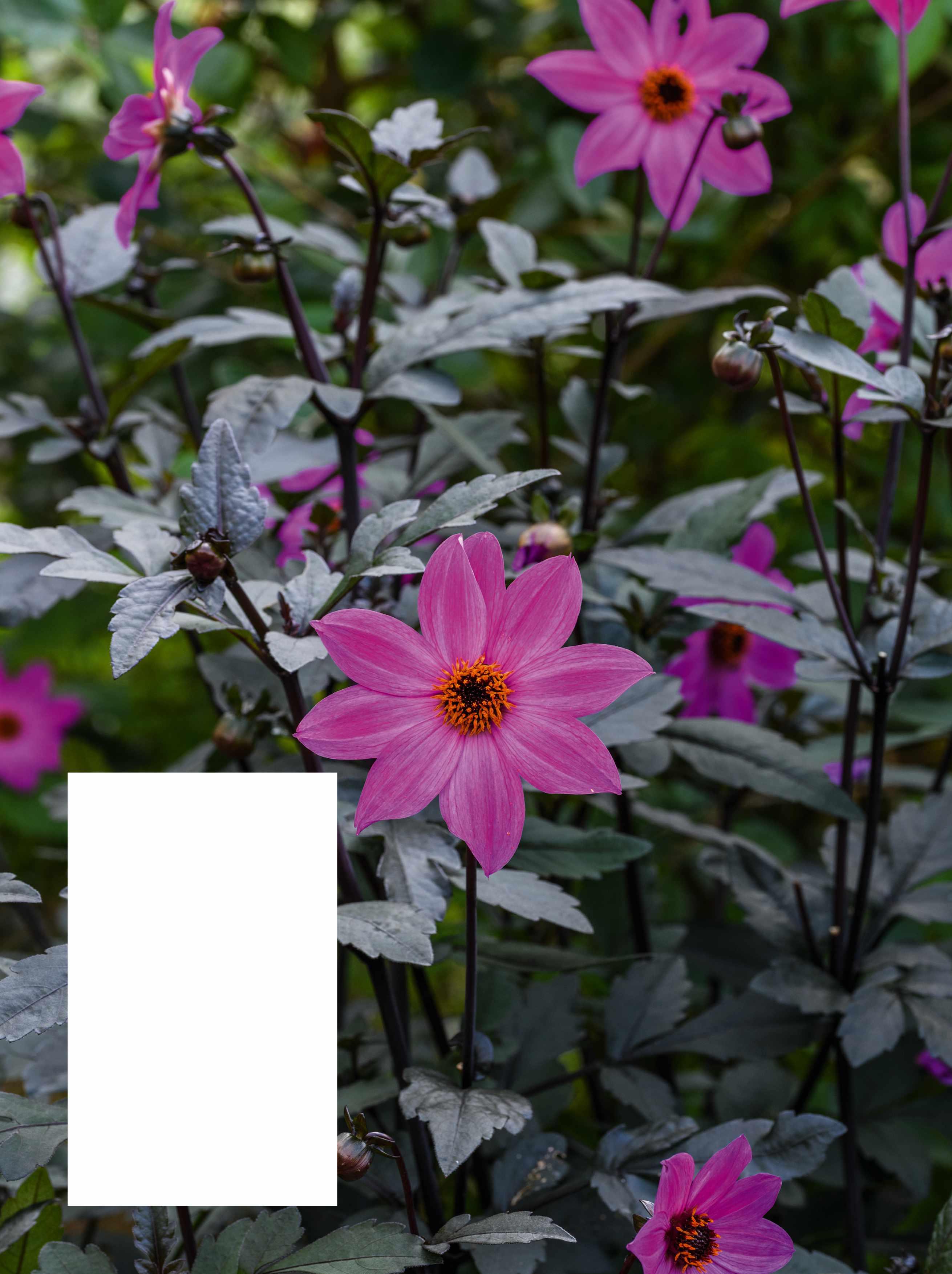
Height and spread 1.5m x 1.5m.
Origin Garden (species Mexico and Central America).
Conditions Fertile soil; full sun.
Hardiness RHS H3, USDA 8a-11†
Season of interest June – November.
August plants
WORDS TOM COWARD PHOTOGRAPHS JASON INGRAM

PERSICARIA ORIENTALIS
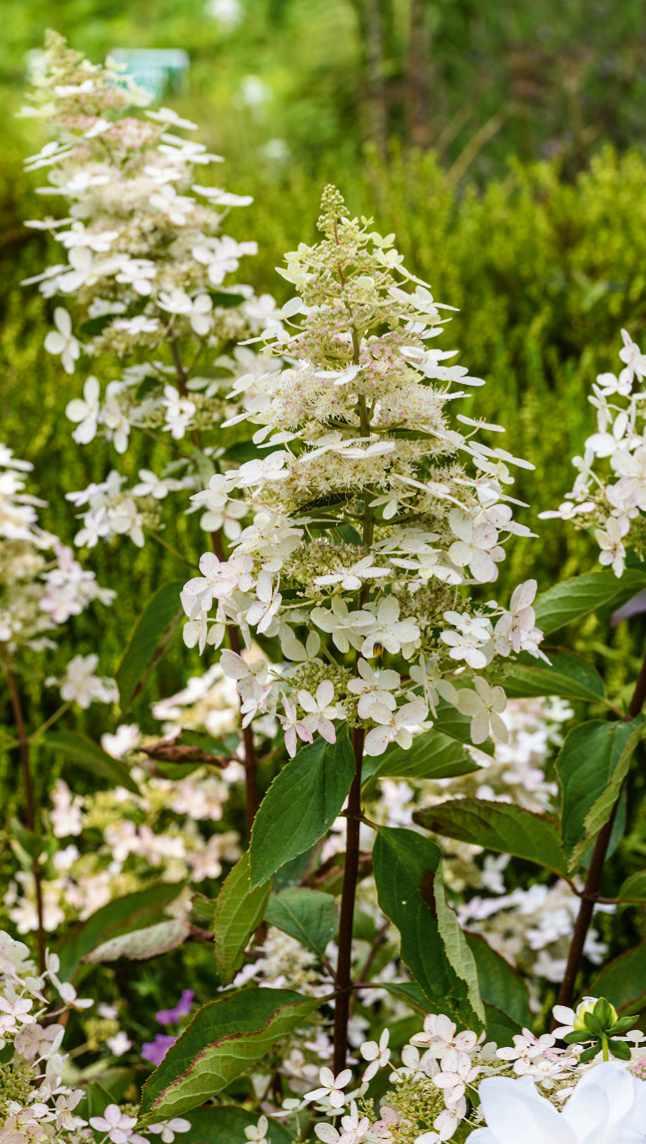
With the wonderful common name of kiss-me-over-the-garden-gate, this striking annual persicaria will always grab your attention. It will self-seed freely, with its distinct, heart-shaped-leaved seedlings appearing in the borders in April and May. Its shiny black seeds need cold treatment before germinating so sowing is best done in autumn, leaving the seed tray in the cold frame for a spring germination. Its tall, arching habit demands that it is staked and it is fun to weave through planting, slipping it into the tightest gaps at the back of the border.

Height and spread 1.5m x 30cm.
Origin East and southeast Asia, Australia.
Conditions Moisture-retentive soil; full sun. Performs best when sheltered from strong winds.
Hardiness RHS H7, USDA 4a-8b.
Season of interest August – November.
PENNISETUM MACROURUM

The African feather grass is a very attractive perennial from South Africa with mounds of fine, evergreen foliage and tall, waving stems sporting interesting bottlebrush-like flowers. It spreads slowly through stolons but in some parts of the world, such as New Zealand, it is voracious and has become a noxious weed. Thankfully, it behaves itself in our climate, offering a distinctive vertical feature in the border with a translucent quality, adding special movement to any planting. It makes a very pretty element when run through dense groups of asters. AGM.
Height and spread 1.5m x 50cm.
Origin South Africa.
Conditions Free-draining soil; full sun.
Hardiness RHS H3, USDA 8a-10b.
Season of interest Foliage all year round, flowers from July,
HYDRANGEA PANICULATA ‘BIG BEN’
An excellent selection with large panicles opening greenish-white, turning white and then maturing to deep pink. It also has a wonderful fragrance. It will grow into a broad, spreading shrub, although we keep ours more compact by pruning back the new growth to a permanent framework at the end of winter. Not only does this control the shrub’s size but it will also increase the size of the flowers. Makes an interesting combination when planted with Cleome hassleriana ‘Helen Campbell’. AGM.
Height and spread 2m x 2m, depending on pruning.
Origin China.
Conditions Moist but well-drained soil; full sun or partial shade. Feed after pruning. Hardiness RHS H5, USDA 3a-8b.
Season of interest August – November.
DIG IN PLANTSPERSON’S FAVOURITES
*Holds an Award of Garden Merit from the Royal Horticultural Society. † Hardiness ratings given where available.
Tom’s effusive summer borders encompass a huge range of colour and form, from a velvety-red clematis and a starry lilac aster, to wafting grasses and a tiny waterlily
Tom Coward is head gardener at Gravetye Manor in West Sussex gravetyemanor.co.uk
AUGUST 2022 GARDENSILLUSTRATED.COM 21
CHARLIE HOPKINSON





Sky above, earth below CPF��TG YKVJKP� ELECTRIC GAS WOOD BURNING MULTI-FUEL 01952 200 444 | OCTMGVKPI"EJCTNVQPCPFLGPTKEM�EQ�WM | YYY�EJCTNVQPCPFLGPTKEM�EQ�WM
NYMPHAEA ‘PYGMAEA HELVOLA’
Possibly the tiniest of all hardy waterlilies, with charming little pale-yellow flowers, just 4cm across. The foliage is also beautiful, spreading to cover about 45cm diameter of water. The tiny pads, about the size of a pound coin, are dark green, marbled with maroon. Should be grown about 15cm below the surface of the water and fed regularly with waterlily fertiliser tablets. The best plant we have is grown in an aquatic pot, submerged in a large stone bowl that is regularly topped up with water. This way its petite beauty can be enjoyed close up. AGM.

Height and spread 10cm x 45cm.
Origin Hybrid from the Latour-Marliac nursery, Brodoux, France.
Hardiness RHS H5, USDA 4a-10b.
Conditions Full sun.
Season of interest June – September.
ASTER PYRENAEUS ‘LUTETIA’

An excellent, early flowering aster that will start in July and continue through to October. The compact mounds of interlaced, branching stems are covered in pale lilac-blue flowers, with finely rayed petals 5cm across and bright-yellow anthers. Always popular with bees, it is best grown through a pea-stick cage to prevent the plant from collapsing, and it appreciates being divided every four to six years. It’s extremely effective repeated along the front of a border, and combines well with Bistorta amplexicaulis ‘Pink Elephant’. It has the added advantage of never suffering from mildew.
Height and spread 50cm x 50cm. Origin France and Spain.
Conditions Moist but well-drained soil; full sun.
Hardiness RHS H7, USDA 5a-8b.
Season of interest July – October.
Places to visit
Tom’s recommendations for places to see seasonal plants at their best
Be sure to check opening times. Some garden visits may need to be pre-booked.
Sussex is blessed with many remarkable gardens and Nymans is a must for any plant lover visiting the area. The heart of the garden we see today was established in the first half of the 20th century by Ludwig Messel, his son Leonard and head gardener, James Comber. As they developed the garden, they sponsored many plant finders working in Asia in
return for their precious new seeds. Today many of these original specimens are champion trees. In 1925-27 James Comber’s son, Harold, also undertook expeditions, to Chile and Tasmania, resulting in one of the most remarkable plant collections in England. The Messels also became fascinated by hybridising their new collections, giving rise to many wonderful
VERBENA MACDOUGALII ‘LAVENDER SPIRES’
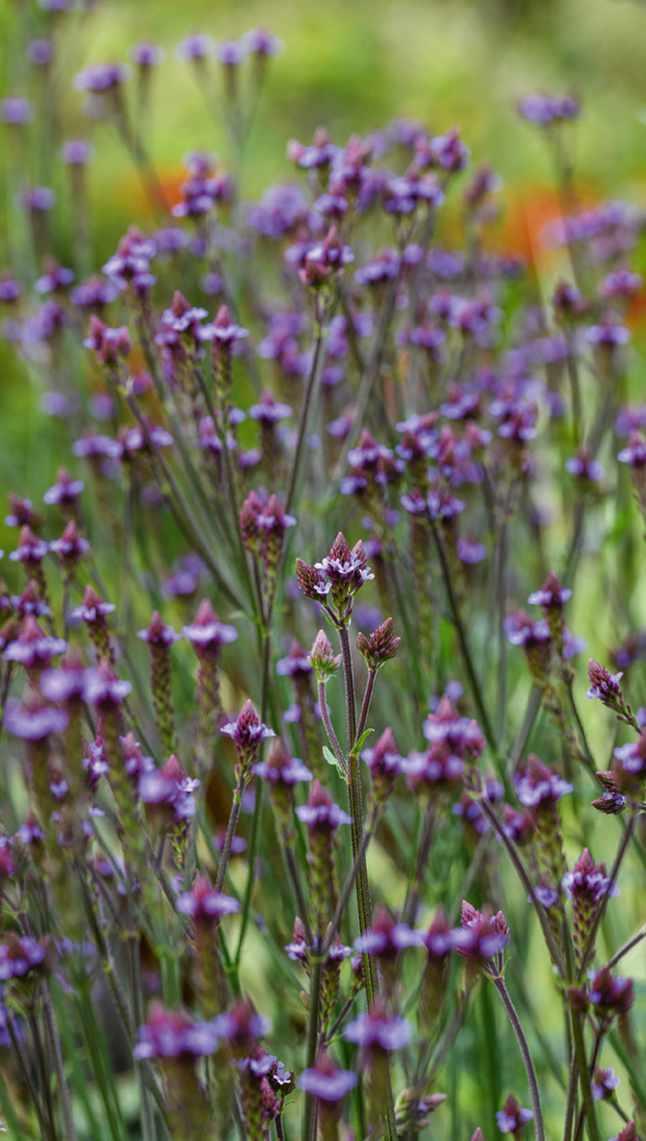
This beautiful, vigorous and useful cultivar was selected by Marina Christopher at her nursery, Phoenix Perennials. It has a long flowering season from June until first frosts and makes a good structural plant through the winter. Unlike its promiscuous relative, Verbena bonariensis, it is sterile, so doesn’t self-seed, making it a more manageable border plant. It’s easily propagated by cuttings rooted in a glass of water. We cut plants back by half in June to keep them in proportion and stop them from flopping.
Height and spread 2m x 45cm.
Origin Garden (species southwest USA and Mexico).
Conditions Moist but well-drained soil; full sun or partial shade.
Hardiness RHS H5, USDA 9.
Season of interest July – November.
garden plants, notably Eucryphia x nymansensis ‘Nymansay’ and Magnolia x loebneri ‘Leonard Messel’.
The manor house was rebuilt in 1927 by Leonard only to be destroyed by fire in 1947. Today only the ruins remain, engulfed by the gardens. Of particular note are two original specimens of Magnolia grandiflora that survived the flames. Under the stewardship of head
gardener Joe Whelen, the interior of the ruin has also been turned into a garden, showcasing the plant heritage and theatrical style associated with the Messels.
Although most of the tree and shrub collections are at their best from March to June, this is a beautiful garden at any time of year and in August the summer borders are at
DIG IN PLANTSPERSON’S FAVOURITES
AUGUST 2022 GARDENSILLUSTRATED.COM 23
CLEMATIS ‘GRAVETYE BEAUTY’
This lovely Clematis texensis hybrid was raised by Francisque Morel on his nursery in Lyon in 1914. On his retirement he sent his collection to William Robinson at Gravetye, where his head gardener, Ernest Markham, continued Morel’s work, giving rise to many great hybrids. This is a delicate clematis with seductively rich-red flowers, the texture of velvet. It benefits from a high-potash liquid feed every two weeks in summer. It often dies back to the ground in winter, but when it does keep any old wood, it can start flowering in June; otherwise it flowers in August.
Height and spread 2.5m x 2m.
Origin Garden (species East Asia).

Hardiness RHS H4, USDA 4a-8b.
Conditions Moist, fertile soil; roots in the shade and head in the sun.
Season of interest July – September.
LILIUM LANCIFOLIUM VAR. FORTUNEI

A tall, vigorous and magnificent lily, with striking, orange, pendent flowers speckled with purple dots, hanging from its black stems. It looks spectacular running through the border against a backdrop of the purple foliage of plants such as Cotinus coggygria ‘Royal Purple’. It has also performed well in our meadows, where it appears to compete successfully among quite course grass. It seems to works best in long grass among trees and shrubs in dense clumps and drifts. Easily propagated in late summer from bulbils found in the leaf axis.
Height and spread 1.8m x 50cm. Origin China.
Conditions Moist but free-draining soil; full sun or partial shade.
Hardiness RHS H6, USDA 3a-9b. Season of interest August – September.
SILPHIUM PERFOLIATUM
A vigorous and dramatic perennial with bright-yellow daisies on long, graceful stems that appear to perforate its pairs of broad, dock-like leaves. It has a long flowering season and is very effective at the back of the border where it needs to be divided regularly to keep it in check. It has also performed very well in the meadow at Gravetye, where we have it planted under some old apple trees among Helianthus ‘Lemon Queen’. This makes a spectacular show at the end of the season, after the rest of the meadows have been cut and the apples are ripening. AGM.

Height and spread 2.5m x 2m.
Origin North America.
Conditions Moist but well-drained soil; full sun to partial shade, but tolerant of most situations.
Hardiness RHS H7, USDA 3a-8b.
Season of interest August – September.
their height. Originally designed by Muriel Messel with help from her neighbour William Robinson, they have recently been replanted as a modern interpretation of the Edwardian original. Handcross, nr Haywards Heath, West Sussex RH17 6EB. Tel 01444 405250, nationaltrust.org.uk
Beth Chatto’s Gardens continues to be an
inspiration for generations of gardeners. Beth began her work here in 1960, creating a series of gardens, each with very different conditions, showcasing plant selection and positioning. She also established an excellent nursery. Her brilliant books bring her knowledge and gardening skills to life, but if I could recommend just one it would be Dear Friend
and Gardener. This shows her character and how she gardened in quite a special way. Since her death in 2018 the garden has continued to be loved and cared for. The Dry Garden is always particularly interesting in August, at the end of a hot summer, to see how plants can thrive to make a beautiful garden in harsh, dry conditions. Beth Chatto’s Plants and
Gardens, Elmstead Market, Colchester, Essex CO7 7DB. Tel 01206 822007, bethchatto.co.uk
The beautiful seven-acre Great Comp Garden,curated by gardener and nurseryman William Dyson, is a lovely garden in spring, but is particularly inspiring for its late-summer colour. It has one of the best salvia collections in the country,
displayed in jaw-dropping style among grasses, shrubs, dahlias and late-season perennials. There is also a nursery specialising in salvias and it is simply impossible to visit without leaving with a love of this genus, and several new plants to grow. Comp Lane, Platt, nr Sevenoaks, Kent TN15 8QS. Tel 01732 885094, greatcompgarden.co.uk
DIG IN PLANTSPERSON’S FAVOURITES
24 GARDENSILLUSTRATED.COM AUGUST 2022

HANDMADE ORNAMENTAL STONE WORK FOR GARDENS OF DISTINCTION 01892 740866 • office @ chilstone.com • www.chilstone.com
THE CONSTANT GARDENER
While some work is required to keep the August garden looking fresh, the month also offers an abundance of fruit and vegetables for the kitchen – and a cornucopia of colourful dahlias
WORDS BENJAMIN POPE ILLUSTRATION CLAIRE HARRUP
Keeping everything going in the garden can become a struggle as summer continues, especially if conditions remain hot and dry. While additional watering, feeding and cutting back helps keep things fresh, planting to match conditions is key.

In the borders and cut-flower beds annuals, dahlias and tender salvias work well, though I also find reliable summerflowering perennials a real help. From South Africa herald many good contenders including agapanthus, kniphofias and pelargoniums and, in mild or coastal areas, you might try half-hardy species such as Melianthus major and Watsonia pillansii
In our sunny entrance borders, generous clumps of Agapanthus ‘Windsor Grey’ create dramatic repetition, softened by airy swathes of Calamintha nepeta ‘Blue Cloud’ and the continuous flowering of Oenothera lindheimeri. These happily sit alongside other heat lovers, including Allium ‘Summer Beauty’, Dianthus cruentus and Salvia yangii ‘Blue Spire’. Though not technically flowering yet, dark-red forms of Hylotelephium add bold contrasting colour
to this planting, my favourites being H. ‘José Aubergine’ and H. ‘Red Cauli’.
Smaller and sumptuous with dark inky tones is Agapanthus ‘Indigo Dreams’. Despite being tricky for me to get through winter (I’ve lost it twice because of wet and cold) I can’t resist the depth of colour and so grow it in a container, alongside other tender treasures including Aeonium ‘Velour’ and Salvia ‘Love and Wishes’. Growing in containers allows you to manipulate the conditions somewhat, offering flexibility in growing medium and location.
For all containers I like to include loam or top soil in the potting mix, which helps maintain good soil structure for healthy root growth. Woodland species get more organic matter (peat-free potting compost or leaf mould) added, while arid- and Mediterranean-region plants have a mix of mostly loam, sand and grit. In winter these containers are moved indoors or placed somewhere sheltered, avoiding the worst of the rain where the drier conditions help the plants cope better with low temperatures. Though for now, they take centre stage and bask in the sun, enjoying the warm conditions while encouraging me to do the same as I sit and enjoy the floral bounty.
What to sow and plant

As summer continues, both planting and seed sowing slow down in the productive garden. Most biennials should have already been sown but, I’d still give foxgloves and verbascums a go; both will grow quickly in the cooling months to come. However, now is a good time to sow autumn and winter salads and leaves, so that they reach a substantial size before the days become short. Good cultivars include lettuces ‘Winter Density’ and ‘Winter Gem’, grown alongside mustard ‘Red Frills’, rocket and the very hardy lamb’s lettuce ‘Favor’.
I also like to do a sowing of beetroot, where the hardy earthy leaves make great additions to salads. Given a little protection (fleece or polythene tunnel) they will all happily crop through autumn and winter and into early spring.
Oriental brassicas and perpetual spinach are other plants that will enjoy the months to come, where day length and temperature make them less likely to bolt. Chinese cabbage, pak choi, mibuna and mizuna are worth sowing now, though will appreciate a slightly shady spot if temperatures remain hot.
What to harvest and pick
August sees the garden bursting with produce as salads and roots are cropping well, alongside aubergines, chillies, cucumbers and tomatoes, all of which I grow in containers or the greenhouse to protect from any cold, wet weather. The elongated forms of aubergine ‘Farmers Long’ and beetroot ‘Cylindra’ lend themselves to culinary use, while the sweet pepper ‘Doux tres long des Landes’ looks great on the plant or plate. Chilli ‘Chocolate Habanero’ is spicier, though tempered with a fruity, aromatic flavour. In the orchard plums and gages are ripening, with sloes colouring up in the hedgerows for that important winter tipple.
Dahlias are top of my list for cut flowers. If space is limited, smallerflowered cultivars are easier to arrange. My favourites are the pompoms D. ‘New Baby’ and D. ‘Rocco’, bi-coloured singles D. Happy Single First Love (= ‘HS First Love’) and D. Happy Single Wink (= ‘HS Wink’), and new discoveries D. ‘Sarah Raven’ and D. ‘Kelsey Annie Joy’. n • Benjamin’s Gardens Illustrated Masterclass: Grow a year-round, productive garden is available at gardensillustrated.com
GARDEN JOBS for August
Cut back lavender Now is the perfect time to cut back lavender, removing most of the new growth if you want to keep plants compact and healthy. Any lavender flowers can be dried then used for arrangements, cooking or fragrant oils.
Maintain water features Clean ponds and water features now to avoid disturbing wildlife during the critical winter months of hibernation or reproductive months of spring and early summer. Remove excessive pond sludge and weed growth and if needed treat with organic algaecides to control algae or blanket weed.
Propagate tender perennials Take semiripe cuttings of tender perennials including Helichrysum petiolare and Pelargonium tomentosum. The rooted cuttings will take up less indoor space in winter, providing you with young vigorous plants next year.
Plant bearded iris Summer is a good time to lift and divide bearded iris and order bareroot stock of any new cultivars. Trim leaves and remove sections of old rhizomes before replanting.
Order bulbs Plan your spring-flowering bulbs now and start ordering from online nurseries to ensure you get the cultivars you want and that they are delivered fresh, directly to your door for autumn planting.
DIG IN: IN THE
GARDEN
AUGUST 2022 GARDENSILLUSTRATED.COM 27
BOOKING NOW Garden Makers Day 2 November with Ambra Edwards ~ Jo Thompson ~ Xa
THE ESSENTIAL GARDEN DESIGN DIPLOMA
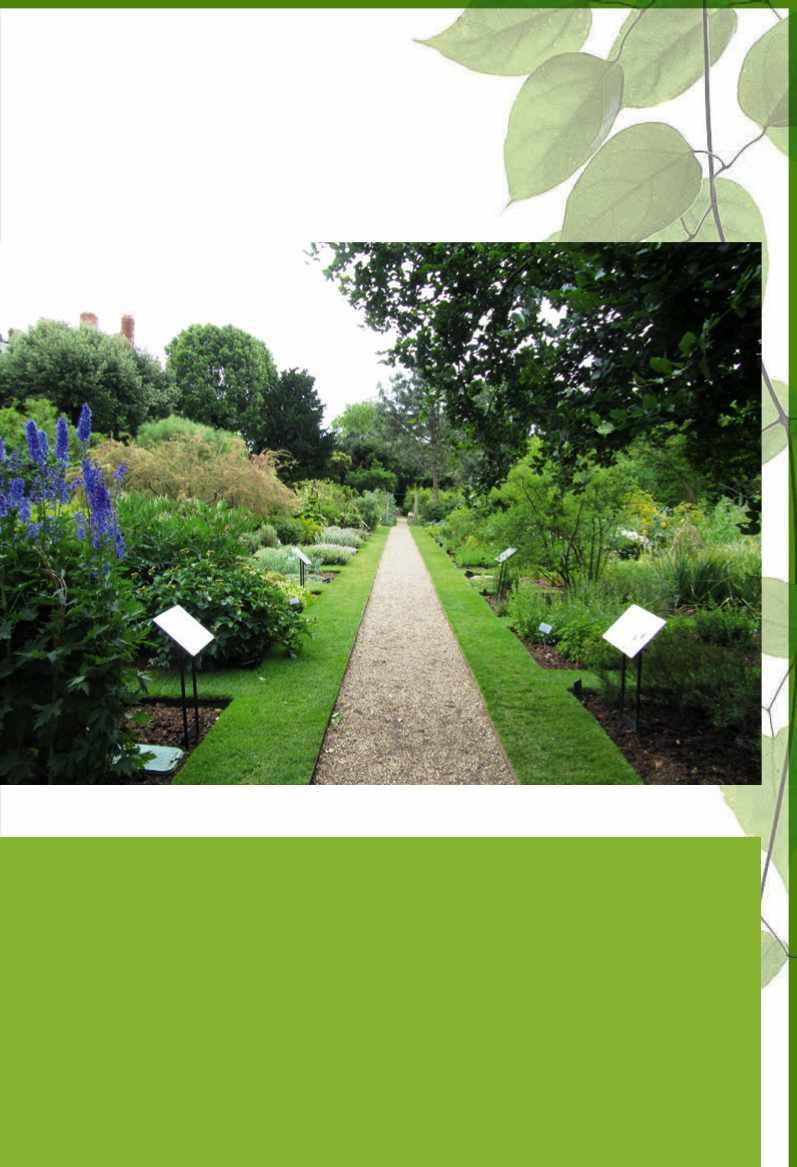

January – March 2023
Based at the Chelsea Physic Garden and led by Rosemary Alexander and architect Catriona Rowbotham, the course is an overview of Garden Design, covering all the elements needed to rethink an average garden. Taking students step by step through site surveying, using the grid, horizontal and vertical features, garden layouts and planting plans, costing and specification, plus drawing tuition and homework on design and plant portfolios. Tutors are well respected in the industry and will guide students on how to succeed in this diverse profession.
(2 days a week (Wed & Thu), 10.30am–3.15pm, plus 2 days homework)
ONE YEAR GOOD GARDENING DIPLOMA
September 2022 – beg July 2023
Covers the best in planting design while training in the more serious aspects of horticultural techniques. Practical sessions held at Arundel Castle under the guidance of head gardener Martin Duncan and at Sandhill Farm House, Rogate. Lectures by many leading gardening personalities and regular visits to outstanding private gardens. Students also learn to draw up planting plans. (1 day a week (Tues), 10.30am–3.15pm, over three terms)
GARDENING FOR BEGINNERS
Wednesday & Thursday 19, 20, 26, 27 April 2023
One of our most popular courses, led by master horticulturist Ben Pope, which aims to take each student through all the practical elements of caring for a garden from soil, tools, maintenance, seed sowing and propagating, weed control and pests and diseases. The first 3 days will be spent with lectures at the Chelsea Physic Garden and the final day will be spent gaining practical experience in Rosemary Alexander’s much praised garden near Petersfield and another private garden nearby, where Ben is in charge. Participants will be given a chance to prune, plant, sow seeds and regular maintenance tasks will be discussed. A light lunch and refreshments will be provided daily.
GARDEN DESIGN & CARING FOR YOUR GARDEN

Distance Learning Courses study anytime, anywhere in the world
A stepping stone to a new career. These two correspondence courses are a step by step guide to either designing your own garden or learning how to plant and maintain an existing garden: drawing up plans, hard landscaping, site analysis, planting, month by month tasks etc. Taught through a comprehensive course book, with projects submitted to us. (1-3 years to complete and individual assessment)
Long established as the leader in all design and gardening tuition and based at the unique and historic Chelsea Physic Garden Not sure which Diploma course is for you? We prefer potential students to attend an Information Session when Rosemary explains the whole course content and you can see our facilities at the historic Chelsea Physic Garden. JUST CONTACT US TO SET UP A DATE/TIME www.englishgardeningschool.co.uk Email: info@englishgardeningschool.co.uk Tel: 01730 818373
Garden of Medicinal Plants – Chelsea Physic Garden Photo: R Alexander
Tollemache
GARDENING TALENT
GEORGIA SMITH
Working to bring greenery to London’s Bankside, Georgia also wants to involve the community in their environment
First plant love Lavender – my mum would always pick out lavender for me to sniff as she was interested in aromatherapy. I’d like to encourage this sort of early connection with plants with my young cousins. Who has inspired you? My grandparents have been key. I went back to Jamaica to visit them when I was 14 and it really opened my eyes to see the way they were growing bananas, oranges and avocados, all in the garden. I was struck by their passion for their land and landscape. It’s something that has encouraged me to think about the importance of connecting people to an urban landscape. What did you do before gardening? I started working in retail but then I realised you could do a qualification in horticulture. I took a course at Writtle University College in Essex, which covered all aspects of the industry.
Horticultural heroes I loved Alys Fowler’s BBC television series The Edible Garden. She showed how gardening could be a lifestyle – her approach felt very whole. I also like how James Wong links back to the horticulture of his heritage, as well as highlighting plants with medicinal uses.
Favourite gardens I admire Beth Chatto’s Gardens and the way in which a visit allows you to trace her own planting journey. It’s a real blueprint for how to plant a garden.
Three worthwhile tips Get on and do it! Don’t overthink things and just give it a try. It’s trial and error – every time you sow a seed it’s a lottery and it’s often surprising to see what does survive. And don’t underestimate the benefits of getting to know your neighbours and your community, both for their knowledge and for asking them to keep an eye on your plants when you’re away.
Gardeners biggest challenge. We’re trained to look after parks and large gardens rather than the urban landscape. The concept of what constitutes a garden is changing, so we need the understanding and knowledge to create and look after a whole range of garden spaces.
Favourite social media @cloudgardeneruk has great ideas for gardening in a small space on his 18th-floor balcony, and even how to improve biodiversity. The ideas he shares here are relatable and honest.
Aims for your career To champion community gardening and encourage women and ethnic minorities to take part. Contact gsurbangardening@gmail.com. Georgia works for Better Bankside in Southwark, south London, with a focus on creating both permanent and temporary pocket parks within this mixed urban environment. betterbankside.co.uk
 PORTRAIT ANDREW MONTGOMERY
PORTRAIT ANDREW MONTGOMERY
AUGUST 2022 GARDENSILLUSTRATED.COM 29
Don’t overthink things, just give it a try. It’s trial and error – and it’s often surprising what does survive
STREET ARTWORK BY KOBY MARTIN
GA R DENS

when you subscribe to
digital edition
Save
the




A must-have read for passionate gardeners, Gardens Illustrated magazine provides a unique insight into the world’s most beautiful gardens, expert advice and planting ideas. ENJOY OUR PREMIUM APP EXPERIENCE NOW buysubscriptions.com/ gardensillustrated
Singularly Dutch
The small Zeeland garden of Jopie Koens and Ton Alten has both a structure and planting style that is distinctively of its place
WORDS NOEL KINGSBURY PHOTOGRAPHS ROBERT MABIC
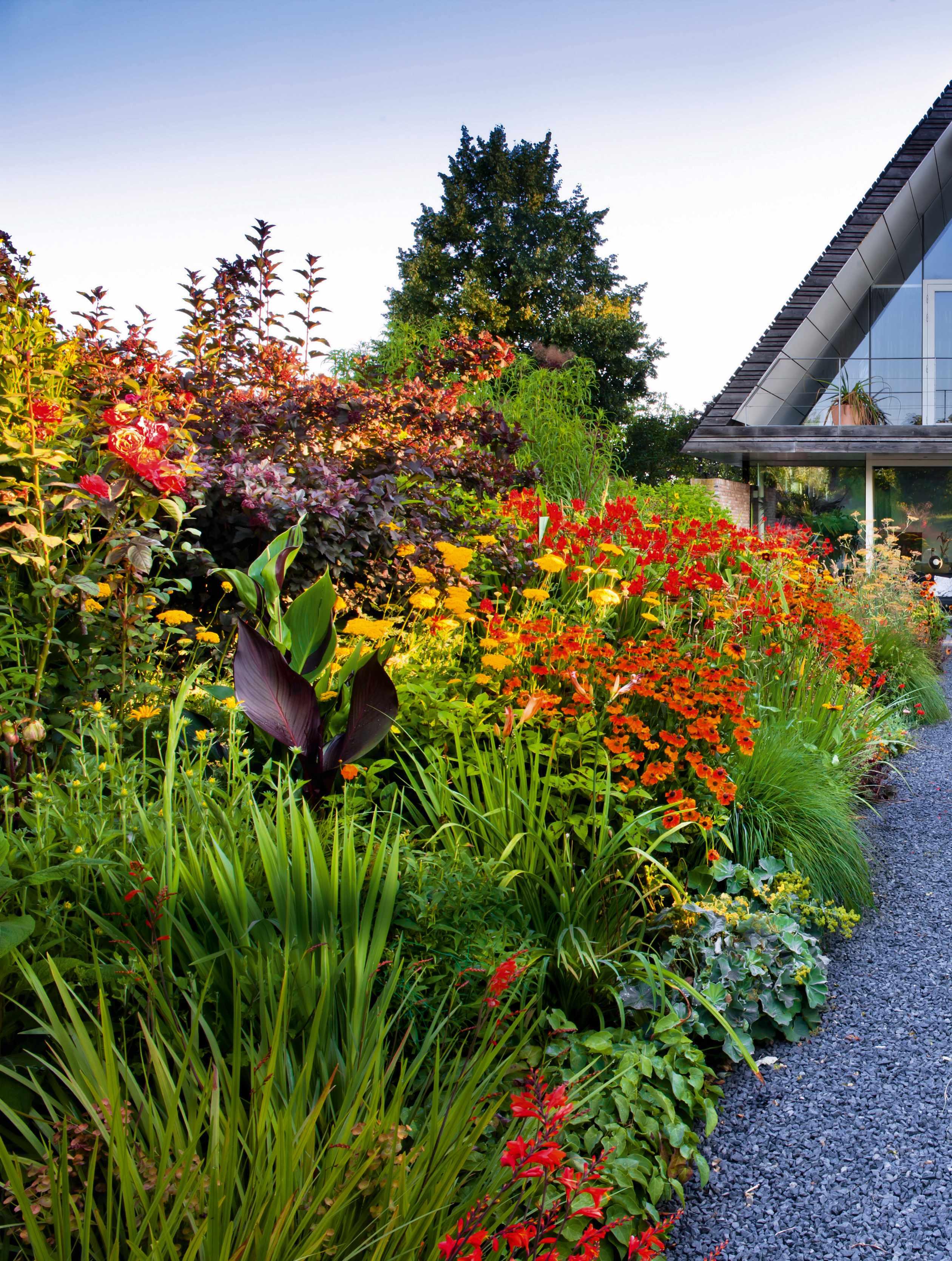
IN BRIEF
Name De Doolman. What Small garden that is home to a series of different borders offering a range of characters and colours. Where The Netherlands. Size 1,250 square metres. Soil Clay over sand, so well-drained. Climate Cool temperate with a maritime influence. Hardiness zone USDA 9.
Leading out from the side of their modern house, Jopie and Ton have created a long Hot Border, with uplifting, fiery tones that include Helenium ‘Sahin’s Early’ and Crocosmia ‘Lucifer’. Dark purple is a good intensifier for warm colours, provided here by the large leaves of Canna ‘Cleopatra’ and purple foliage of Cotinus coggygria ‘Royal Purple’.
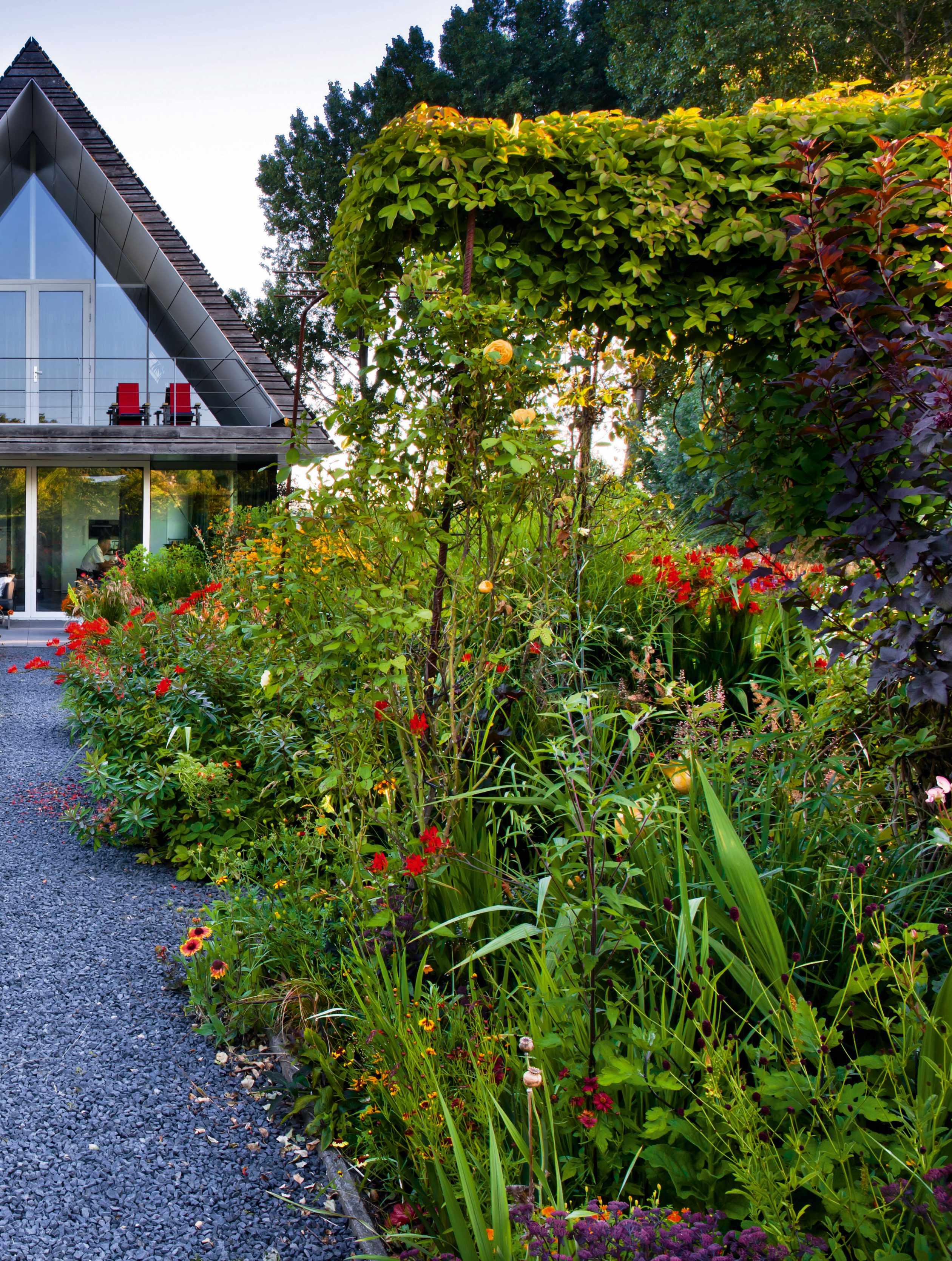
AUGUST 2022 GARDENSILLUSTRATED.COM 33

Green abstract shapes are a cool counterpoint to planting that is dominated by a lush range of perennials
The climates of the UK and the Netherlands are very similar, and a similar range of plants can be found in the gardens of these two most enthusiastic of gardening nations. Even so, were I to be parachuted into a random, unfamiliar garden and had to guess in which country I had landed, I’m pretty sure I would instantly know.

One garden that leaves little doubt is that of Jopie Koens and Ton Alten. This small garden, squeezed into a corner plot on one of Zeeland’s peninsulas that reach out into the North Sea, has all the elements of a modern Dutch garden. Many of these lead back to one, incredibly influential, Dutch garden and landscape designer, who dominated the profession for much of the 20th century: Mien Ruys. Her vision was
architectural and modern – definitely post-Bauhaus – but she was also a lover of flowers and colour.
Jopie and Ton’s garden is very plant focussed, colourful and relaxed, but two features stand out as being distinctly Mien Ruys: a long block of clipped box, rectangular shapes that all mesh together, and in another part of the garden, an array of box clipped into spheres of varying sizes. Both features read as sculptures – exercises in form in themselves, rather than as a structural framework as clipped box might be used in the UK.
These green abstract shapes are a cool counterpoint to planting that is overwhelmingly dominated by a lush and varied range of perennials, with grasses playing an increasingly important role as the summer progresses. Jopie also says that she likes to use seasonal flowers, such as dahlias, and annuals, including zinnias, cosmos and tagetes, that she
To continue turn to page 38
a similar colour
AUGUST 2022 GARDENSILLUSTRATED.COM 35
The rectangular canal, which you cross to enter the house, creates a feeling of calm in the first area of this small garden, and provides a visual link to the sculptural groupings of box blocks and the pergola behind. To the left is the large Front Garden border, with a pink and purple theme that includes Monarda ‘On Parade’, Bistorta amplexicaulis and Erysimum ‘Bowles’s Mauve’. In spring this border is full of bulbs (mostly tulips and camassias) in
scheme.
Above A neat beech hedge separates the Hot Border from this cooler mix of planting dominated by the pink spikes of Bistorta amplexicaulis ‘Rowden Gem’ (a one-time Persicaria cultivar raised by John Carter in Devon). In front, Phlox paniculata ‘Blue Paradise’ stands out among the grasses that add movement to the border, including the steely blue Poa labillardierei and Stipa calamagrostis, with its feathery panicles and open habit.
Below The Hot Border extends out from Jopie and Ton’s house, and is filled with hot colour from the red swords of Crocosmia ‘Lucifer’, yellow umbels of Achillea filipendulina, and orange sunflowers of Helenium ‘Sahin’s Early Flowerer’. At the front is an unnamed Gaillardia aristata hybrid, a short-lived perennial daisy with multi-coloured flowerheads that, according to Jopie, flowers all summer making it invaluable for long-season impact.


Above A Koelreuteria paniculata tree that Jopie’s father grew from seed rises out of a bed of cloud-pruned box to create a focal point at the end of the Hot Border. Facing these sculptural box balls, rounded clumps of Pennisetum alopecuroides
‘Hameln’ create a rhythm along the path, punctuated by bursts of colour, including the yellow flowers of Heliopsis helianthoides

Below The Cream and White Border is dominated by a vigorous, long-flowering, white phlox, its name long since forgotten, which Jopie inherited from her parents’ garden. Behind, the feathery flowers of Koenigia x fennica
‘Johanneswolke’ (formerly a Persicaria) are very long lasting, although strangely of no interest to pollinators, alongside Calamagrostis x acutiflora ‘Overdam’, a subtly variegated relative of the much larger ‘Karl Foerster’.

AUGUST 2022 GARDENSILLUSTRATED.COM 37
grows from seed. “I put them in among the perennials to provide extra colour through the summer,” she says. And while she loves the green of spring, her favourite time of the year is August when the grasses are at their peak, especially as the month draws to its close and the colours begin to change. “At the beginning of the year everything is very low,” says Ton. “By the end some plants are two or three metres high; that’s something we find really exciting.”
The couple started the garden in 2012 but Jopie’s links to the garden go back much further. She was born here and lived here with her parents until her late teens. “My father was a metalworker and a hobby gardener who loved to grow many plants,” she says. The couple were understandably keen to maintain some of what her father had planted, including
some lime trees and a Koelreuteria paniculata he had grown from seed, and designed the garden around them. They also wanted views out on to the landscape, and Ton, who has taken the lead on the general garden layout, wanted the lines in the garden to connect their modern house to the straight lines that dominate the very flat surrounding landscape.
Given the geometry of much of the Dutch landscape, gardens either have to hide away or align themselves with the rows of trees, field boundaries and canals that order this rational country. “We started by planting the front garden diagonally,” says Ton. “So that you can look at and through the plants in different ways.”
While Ton has taken charge of the garden’s architecture, Jopie has selected most of the plants. In her design she was influenced by the famed double border of Madeleine
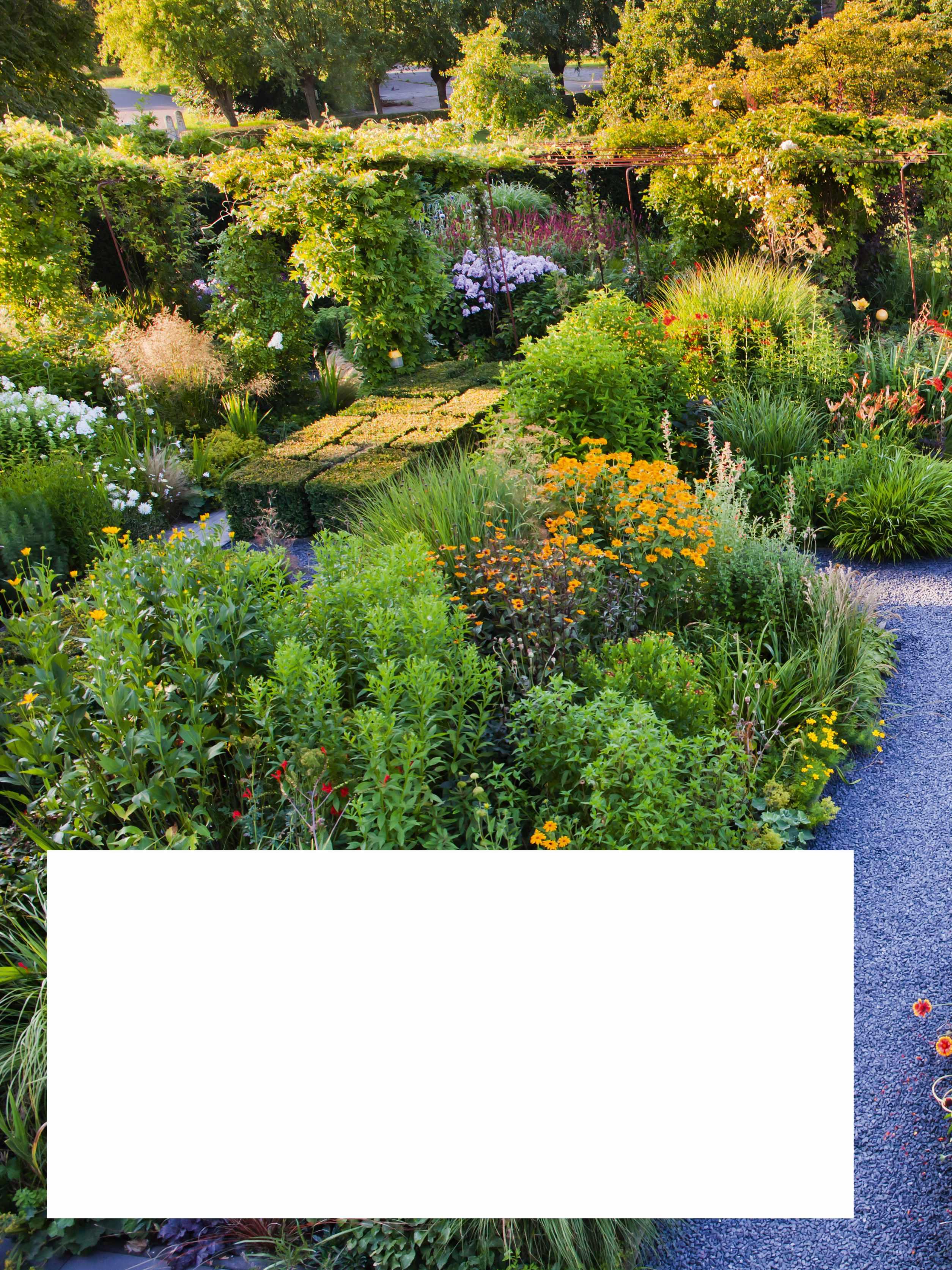
38 GARDENSILLUSTRATED.COM AUGUST 2022
Ton has used the same split grey basalt stone for the paths throughout the garden to create a sense of “unity and peace”. The planting has also added to this strong sense of visual unity by repeating certain plants throughout the borders. In the Hot Border Ton has used Crocosmia ‘Lucifer’ at intervals and used various grasses, most notably Stipa calamagrostis, in several of the borders.
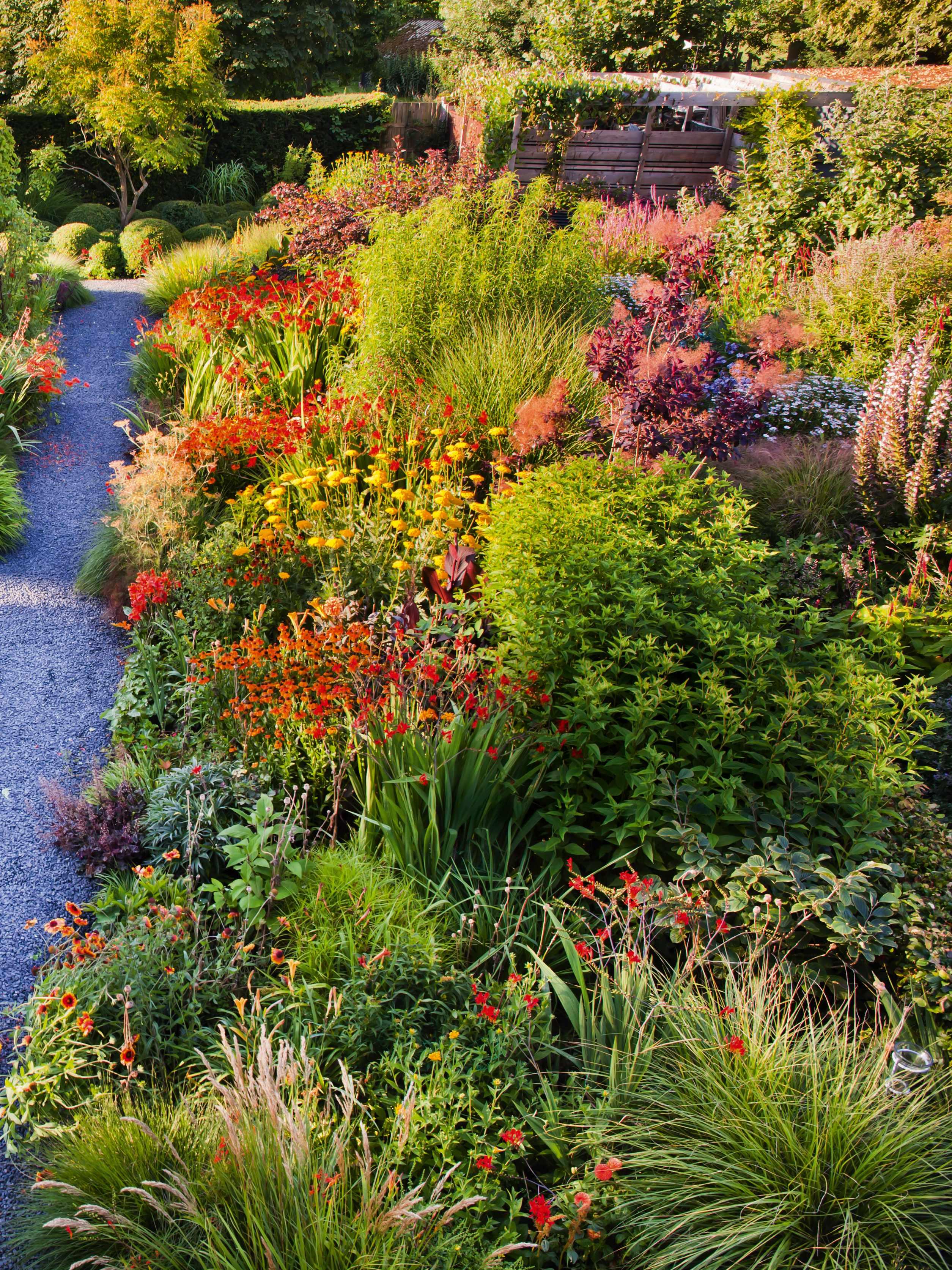
While Ton has taken charge of the garden’s architecture, Jopie has selected most of the plants
Jopie likes to use seasonal �owers, such as dahlias, and annuals, including zinnias, cosmos and tagetes, that she grows from seed

van Bennekom, one of a group of gardeners from Zeeland who became well known in the 1970s, at a time when Dutch gardening was at something of a low point. She also cites the influence of the Dutch designer Piet Oudolf. “But he gardens on a big scale, and we have only a small garden,” says Jopie. “We want flowers for as long as we can, from March to November; it’s difficult to have the number and range of plants to achieve this, and still have the strong structures that Piet has.”
Another inspiration has been the garden made by Nori and Sandra Pope at Hadspen in Somerset in the 1990s. For a brief time the work of this Canadian couple dominated all discussion of colour in the British garden world, and although Jopie never saw the garden in person, she has seen pictures of
it and read their books. Their spirit of bold experimentation has clearly led Jopie down some adventurous paths, such as her border in salmon tones.
Planted exuberance often works best if the boundaries are clear. Firm lines with dense and diverse planting ensure that this is a garden that feels visually balanced and never has a dull moment, while we can be confident that it will continue to generate surprises for a long time to come. n

USEFUL INFORMATION
Address De Doolman, Oudekamerseweg 22, 4451 NC, Heinkenszand, the Netherlands. Tel +31 (0)6 22 03 09 22. Web doolman-nl Open 27-28 August, and by appointment for groups of six or more. Admission �2.50.
AUGUST 2022 GARDENSILLUSTRATED.COM 41
The covered terrace offers an extension to Ton and Jopie’s modern house with outdoor sofas positioned to take advantage of the long, double Hot Border, which leads out from this side of the house. Planters on the terrace include a similar mix of bright colours to raise the spirits, including Tagetes ‘Starfire Mixed’. To the right, the pink flowers of Bistorta amplexicaulis ‘Rowden Gem’ stand out against the row of poplars, which create a sense of enclosure for the garden.
PLANT PROFILE
What A large group of tropical shrubs grown for their colourful, bell-shaped or lantern-like flowers. Commonly known as Indian mallow, flowering maple and Chinese lanterns.
Origins From tropical and sub-tropical regions of Asia, Africa, Australia, North and South America.
Season Most flower during July to September.
Size From 30cm to 4m. Abutilons respond well to regular pruning and can be pruned to fit any space.

Conditions Although they will grow in full sun, abutilons are best in dappled shade in rich soil. Grown in pots they need regular watering and feeding.
Hardiness Relatively tender and will need overwintering in a greenhouse.
*Holds an Award of Garden Merit from the Royal Horticultural Society.
†Hardiness ratings given where available.
A cultivar of the trailing abutilon from Brazil and Chile. The long, arching stems can be tied into a trellis, pergola or wall, or they can be allowed to cascade over a pot. Flowers from midsummer through to autumn. 3m x 2m. RHS H2, USDA 9a-11†
ABUTILON

With their delicate, papery flowers and trailing habit, these exotic plants from subtropical climes can add a touch of colour to dramatic, tropical foliage, such as gingers, cannas and bananas
WORDS
JOHN HOYLAND PHOTOGRAPHS TORIE CHUGG
Abutilon megapotamicum ‘Big Bell’
AUGUST 2022 GARDENSILLUSTRATED.COM 43
One of several hybrids introduced by National Collection holders Teri and Eric Turner before retiring from their nursery, T3 Plants. A floriferous plant blooming from late spring, the flowers are a wide bell shape with pale-lemon petals. 1m x 50cm. RHS H2, USDA 9a-11.
 Abutilon ‘Citron’
Abutilon ‘Citron’
Of all the white-flowered abutilons, this is the one that probably has the most sparklingly clean, white flowers; their colour enhanced by their velvety bright-green leaves. Blooms from June to September. 80cm x 50cm. RHS H2, USDA 9a-11.
There’s something whimsical about Abutilon flowers. They’re the sort of flowers that fill Victorian children’s literature worn as pixie hats or as dangling lanterns to light the way of fairies. Perhaps book illustrators were inspired by seeing so many of them. The genus’s heyday was during the Victorian and Edwardian eras when they were widely grown both in large private gardens and in public parks, used as accent plants or as the centrepieces of elaborate bedding schemes. Abutilons are widespread in tropical and subtropical areas throughout America, Africa, Asia and Australia. Of the estimated 200 species very few have the decorative qualities that would appeal to gardeners. Several of the showiest hybrids come from a handful of South American species (some of which are now recognised in the related genus Corynabutilon). In the wild, they tend to be found growing in rich, moist soil under the dappled shade of tall trees.
Victorian gardeners categorised abutilons as ‘stove plants’ – those that needed to spend cold months in wellheated glasshouses. Time has shown that many are hardier than gardeners once believed and modern hybrids have been bred with a degree of hardiness. However, in most parts of Britain most abutilons will need to be overwintered in
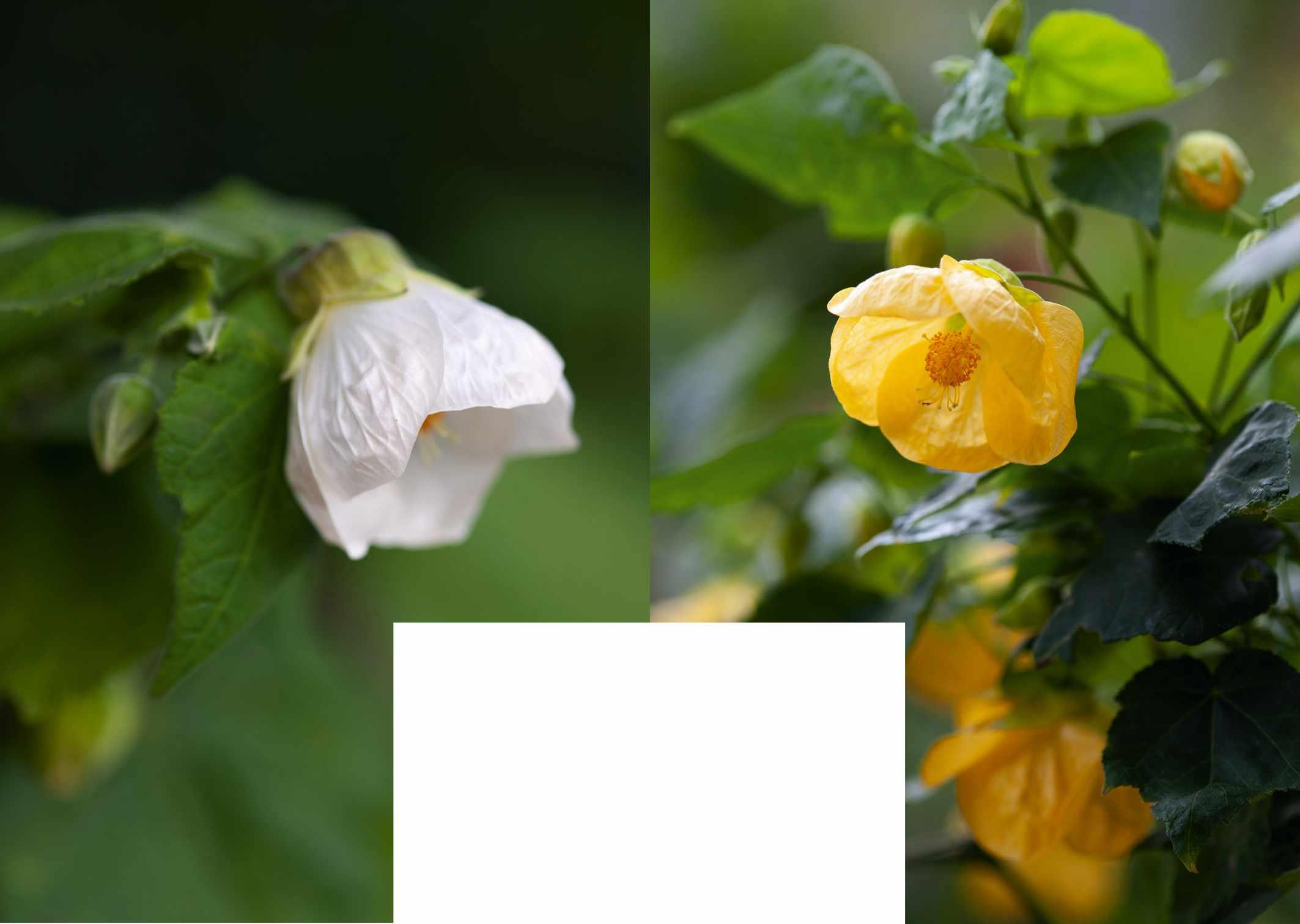
The semi-evergreen, brightgreen foliage is a perfect background for the profusion of lemon-yellow bells. The shrub has an upright habit and is often grown as a single-stem standard. Flowers June to September. 1m x 70cm. RHS H2, USDA 9a-11.
glasshouses or grown in a conservatory. Only in coastal areas and in gardens that have a mild microclimate can abutilons be reliably left in the ground, and even then, be prepared for them to be lost in the occasional harsh winter that will still arrive.
Traditionally, they’ve been grown as conservatory or houseplants or treated as annual bedding plants. In the past few decades, they have found a role in tropical or exotic gardens, with the bold foliage of gingers, cannas and Tetrapanax providing a background for their colourful flowers. They also make a wonderful sight in terraced or hillside gardens where they are allowed to tumble and trail.
In general, their flowers are bell-shaped, a form accentuated by the lobes of the calyx. In most hybrids the bells are about 4cm wide, but some can be much larger. The glowing tangerine flowers of A. ‘Victor Reiter’, for example, are 8cm wide. Those with longer, usually yellow, petals produce the distinctive Chinese lantern flowers from which the plants get one of their common names. The most widely grown of these is A megapotamicum from Brazil, which has flowers with bright-yellow petals and a dusky red calyx that dangle from leaf axils. This species is the source of many cultivars and hybrids. The stems grow quickly and left to its own devices will produce long, arching stems up to 2m long that trail along the ground. In cultivation it is either grown in a pot and allowed to cascade over the sides or the stems are tied in to a frame or trellis to suggest a
To continue turn to page 49
Abutilon ‘Julia’
Abutilon ‘Snowfall’
In the wild, abutilons tend to be found growing in rich, moist soil under the dappled shade of tall trees
AUGUST 2022 GARDENSILLUSTRATED.COM 45
Abutilon ‘Cannington Carol’
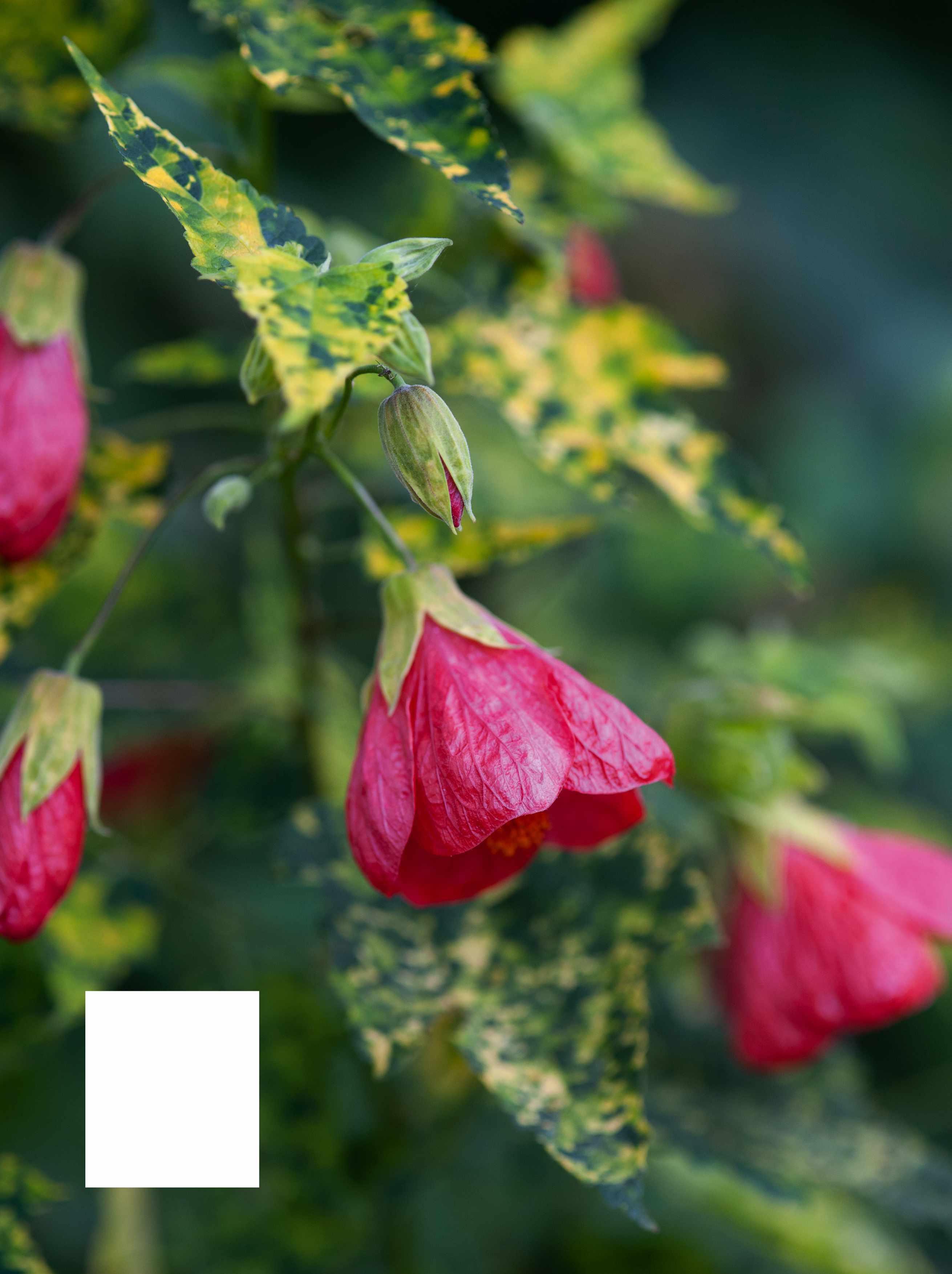
One of several abutilons, all with variegated foliage, that were developed at Cannington College, Somerset, in the 1970s. Its dark-green leaves are mottled with yellow and cream, some to such an extent that they are entirely cream coloured. 80cm x 50cm.
AGM*. RHS H2, USDA 9a-11.
A modern cultivar with long, willowy stems that are easy to tie against a trellis or fence. The flowers dangle from the stems and are a subtle combination of dusky-pink calyces and soft-pink petals. 2m x 2m.
How to grow Abutilon
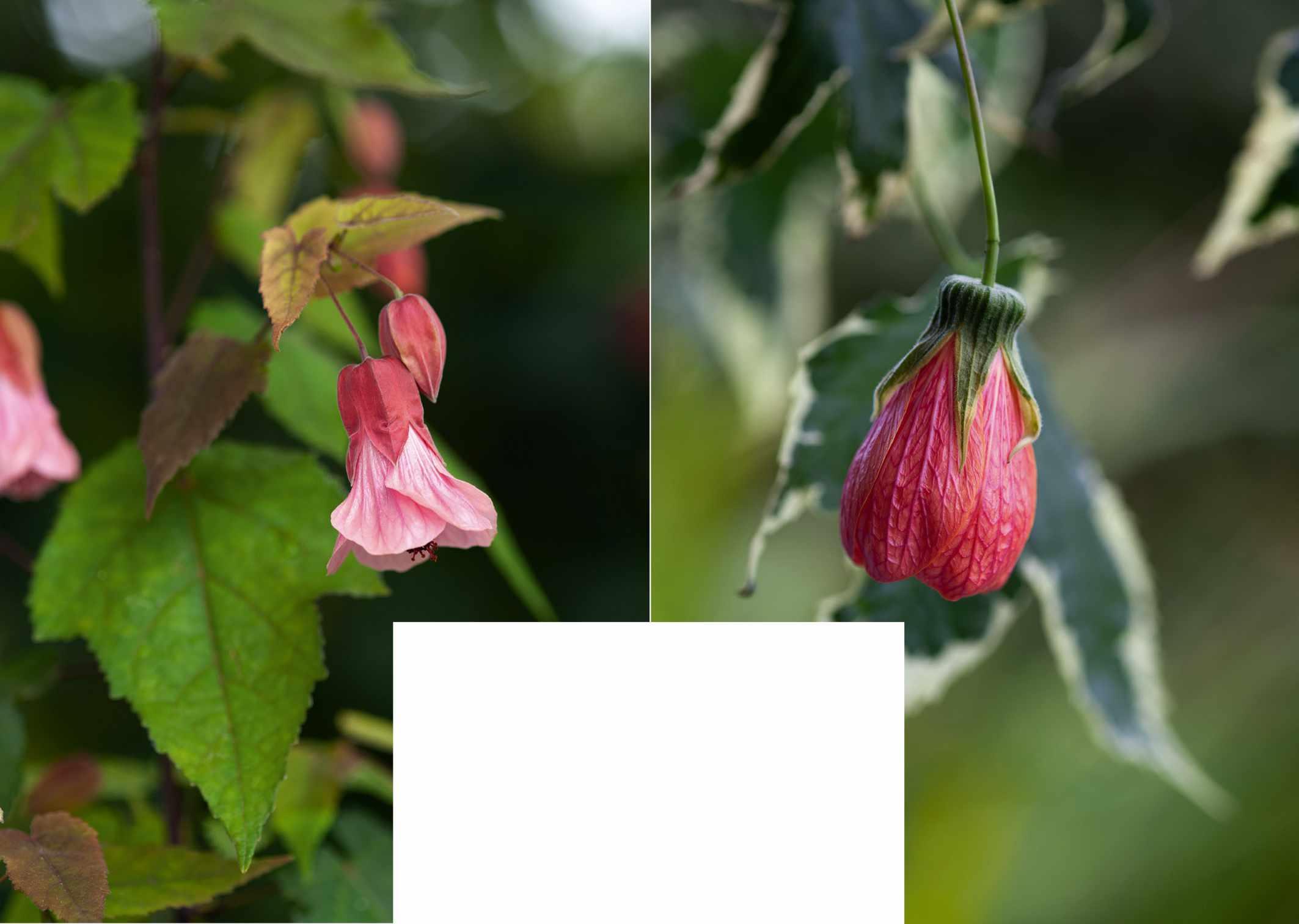
• How you grow your abutilons will largely depend on how mild your climate is or how sheltered the site. In the UK, most abutilons are only reliably hardy in coastal regions or within the shelter and warmth of a city centre garden. If you can grow them in the garden, choose a bright position that has occasional shade.
• Although abutilons will grow in very sunny situations, they perform better in dappled shade. The leaves of some variegated cultivars can be scorched by too much sunlight. To produce so many flowers, a plant needs a lot of energy so incorporate plenty of manure or compost into the soil before planting and mulch every autumn with compost.
• When growing abutilons in pots use a loam-based compost, and during the growing season feed twice a month with
The coral-coloured flowers are 6cm long, but it’s the bold foliage that sets this cultivar apart. The large leaves resemble those of maples and have a wide margin of bright creamywhite. 1.5m x 1m. AGM. RHS H2, USDA 9a-11.
a balanced liquid fertiliser. Water regularly when the plant is growing and flowering but reduce this during the winter so that the soil is barely moist.
• Abutilons that are grown outdoors are trouble free and not susceptible to any pests. Those that are grown in the conservatory are prone to the usual range of conservatory pests, particularly scale insects and red spider mite. You can identify red spider mite from mottling on the leaves and, in heavy infestations, a fine, silky web that covers the foliage. Control it from early spring by introducing predatory mites.
• Scale insects, which look like small blisters on the underside of leaves, are less of a problem but they should be removed by hand as soon as you spot them. Ladybirds will eat them and at the same time deal with mealybugs, which
are a tiny white insect that sucks on the sap of the plants.
• Left unpruned some abutilons will grow up to 4m tall with most of the flowers out of sight at the top of the stems. To encourage more compact plants with more flowers, prune the plant hard from late April to early May, cutting stems to two or three buds from the ground. This will encourage new growth that should be covered in flowers by mid-August.
• Plants that are grown in pots during the summer and overwintered in a cool greenhouse can be cut back in late autumn and stored in a semi-dormant state until new growth appears in the spring. In a heated greenhouse or conservatory, prune as necessary, ideally in early spring, to control the size and shape of the plant.
Abutilon megapotamicum ‘Pink Charm’
RHS H2, USDA 9a-11.
Abutilon ‘Souvenir de Bonn’
AUGUST 2022 GARDENSILLUSTRATED.COM 47
Abutilon ‘Kentish Belle’
Bred at Hever Castle, Kent, in the 1950s, this is a longflowering hybrid – from May to October – that has remained popular since its introduction. One of the hardiest of the family.
2.5m x 2.5m. AGM. RHS H3, USDA 7a-10b.
Abutilon ‘Red Tiger’

A vigorous hybrid with perhaps the most spectacular flowers of any Abutilon, with ruffled orange petals deeply veined in dark red. Flowers abundantly from June to October. 2m x 1.5m.
RHS H3, USDA 7a-10b.
Abutilon ‘Marion’
The orange-red flowers are deep veined on the surface, which looks dramatic when backlit. Has a reputation for being one of the most long flowering, often in flower from May until the end of October. 2.1m x 1.5m. AGM. RHS H2, USDA 9a-11.
Abutilon ‘Paddy’s Nephew’
The apricot flowers are topped by dusky-red calyces and dangle from attractive, dark stems. Will survive outdoors in mild areas of the UK. 1.2m x 80cm. AGM. RHS H3, USDA 7a-10b.
Abutilon
Touted as the only doubleflowered abutilon, although it is more that the petals are ruffled than the large (7cm-8cm wide) flowers have a double set of them. Popular in Europe, but can be hard to find in the UK. 80cm x 40cm. RHS H3, USDA 7a-10b.
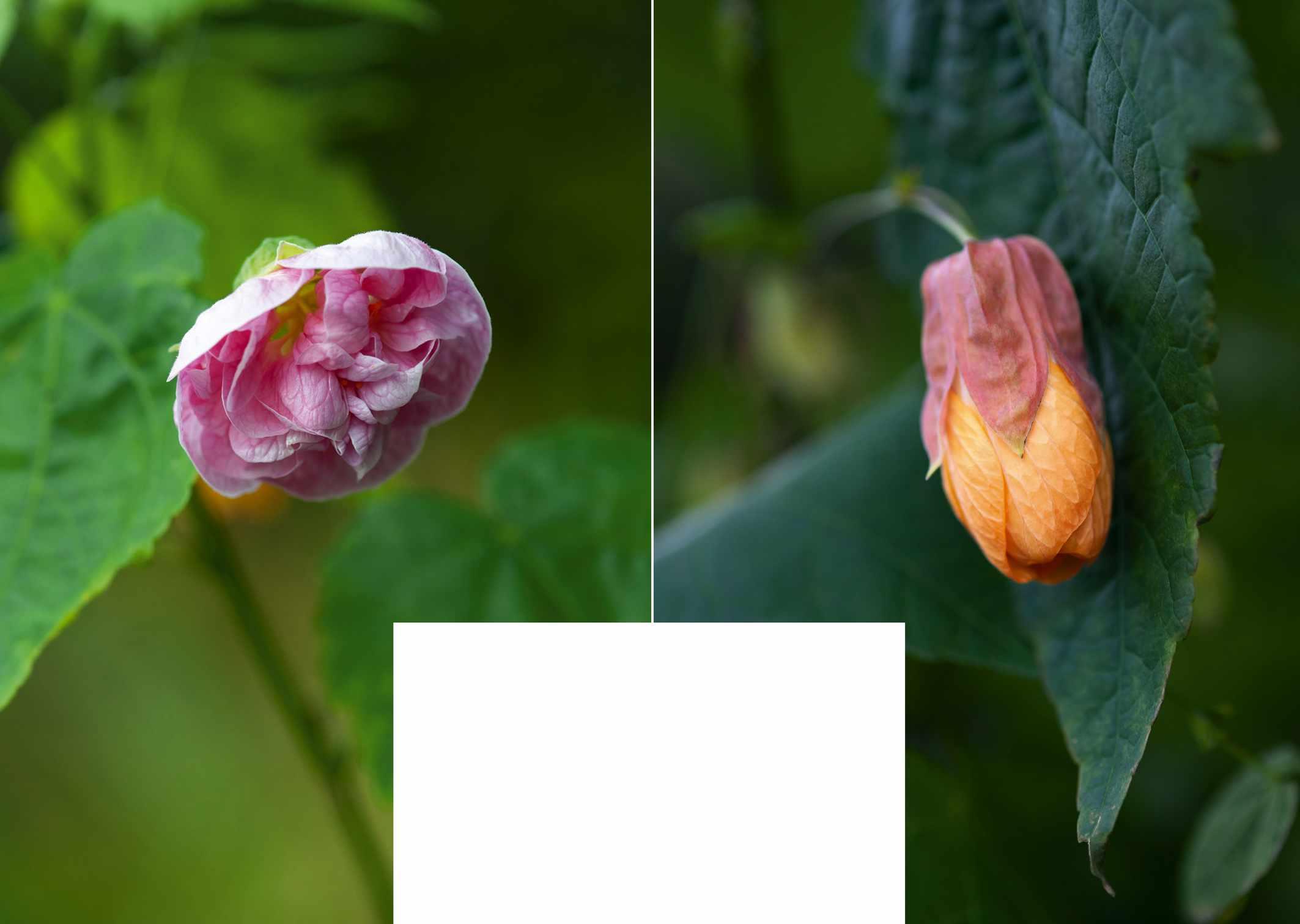
Named for Teri and Eric Turner’s daughter who developed many of their new introductions. Petals are an apricot colour with dark veining. When fully developed they furl outwards to create an open flower. 1.1m x 60cm. RHS H2, USDA 9a-11.
climbing plant. I’ve also seen the stems attached to a hazel arch, so the flowers hang down and can be seen from below.
One of the best to grow against a wall is Corynabutilon vitifolium ‘Veronica Tennant’, which blooms in July and early August. The pale-lilac flowers, 8cm wide, are flat, saucer-shaped and reminiscent of a clematis. It has only recently been renamed as Corynabutilon and most nurseries continue to sell it as an Abutilon
One common name is flowering maple, a reference to the shape of the leaves of some of the species. These large, maple-like leaves, which on some hybrids can be 10cm long, add to the attraction of Abutilon, particularly in planting schemes that aim to evoke a luxuriant, tropical atmosphere. Variegated foliage, popular in Victorian bedding schemes, is still a feature of many hybrids. A group of hybrids developed at Cannington College in Somerset all have leaves mottled and blotched with cream and yellow. A. megapotamicum ‘Variegatum’, which is still widely used in annual bedding gardens, has dark-green leaves flecked with bright yellow. This type of variegation is becoming less popular with gardeners, reminding many of us of sick or diseased foliage. More acceptable to modern tastes is clear, white variegation that borders the leaves, as on A. ‘Souvenir de Bonn’. In recent years plant breeders in Australia and the USA have turned their attention to Abutilon in the hope of creating hybrids
Where to see and buy
that are truly hardy and which are easy to grow. Abutilon Bella Series is a seed strain that produces masses of pastel-coloured flowers on plants around 60cm tall. Even more compact, at around 30cm, is a range known as A. Lucky Lantern. Although all these dwarf forms are often smothered with flowers, they have none of the airiness or delicacy of larger hybrids. But for a small garden or patio they are ideal. n
John Hoyland is a plantsman and writer.
• Burncoose Nurseries Gwennap, Redruth, Cornwall TR16 6BJ. Tel 01209 860316, burncoose.co.uk
• Cotswold Garden Flowers Sands Lane, Badsey, Evesham, Worcestershire WR11 7EZ. Tel 01386 422829, cotswoldgardenflowers.co.uk
• Paddock Plants The Paddock, Upper Toothill Road, Rownhams, Southampton SO16 8AL. Tel 023 8073 9912, paddockplants.co.uk
• Teri and Eric Turner* The Hop Kilns, Green Lane, Bromyard, Herefordshire HR7 4RZ. Nursery no longer open but email eric.teri@btinternet.com to arrange a visit to their collection.
‘Victorian Lady’
Abutilon ‘Leila Jackson’
*National Collection holder.
AUGUST 2022 GARDENSILLUSTRATED.COM 49 MANY
Many are hardier than gardeners once believed and modern hybrids have been bred with a degree of hardiness
THANKS TO TERI AND ERIC TURNER IN WHOSE HEREFORDSHIRE GARDEN THESE IMAGES WERE TAKEN
and enjoy the Ćnest olive oil all year from your own tree

5 S %



P O M O R A . C O M
SMALL GARDENS
From a bright and airy coastal garden to an exotic, foliage-rich retreat, our five small gardens prove that confined spaces are no bar to creativity
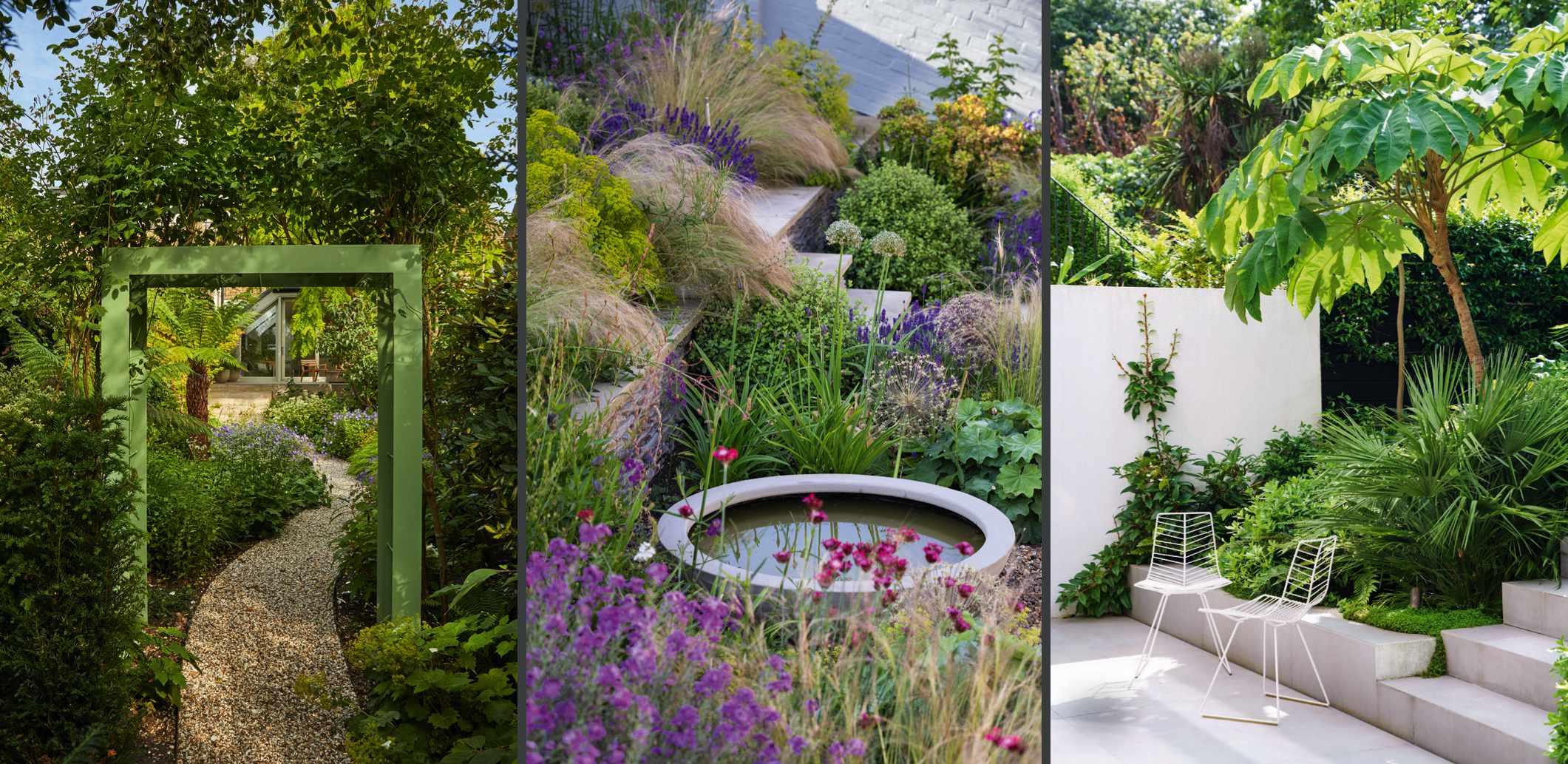
CONTENTS
Tales of the unexpected
A journey through atmospheric, jungle-like planting page 52
Cornered by nature
Tricky corners converted into a lush but functional space page 56
Mood enhancer
A breezy, uplifting garden full of colour and movement page 60
Deceptively simple
A woodland oasis with tranquil spots for relaxation page 64
Urban jungle
Sub-tropical planting layered with texture and form page 68
Designers’ tips for small gardens
Expert ideas on making the most of a limited space page 72
ALISTER THORPE; RICHARD BLOOM; RACHEL WARNE
52 60 68 AUGUST 2022 GARDENSILLUSTRATED.COM 51
Tales of the unexpected
Lush planting and a meandering path give this city garden by Stefano Marinaz a magical, otherworldly feel
WORDS NATASHA GOODFELLOW PHOTOGRAPHS ALISTER THORPE
KEY ELEMENTS
What Long, thin, city garden. Where Northwest London. Size 50m x 5.5m, with Stefano concentrating his design on the area nearest the house. Soil Good, moisture retentive yet free-draining loam. Aspect South-facing. Special features Atmospheric, ‘jungle’ planting with a pebble seat and focal arch. Designed by Stefano Marinaz Landscape Architecture (stefanomarinaz.com).
This long, thin garden feels fabulously lush, with repeat plantings of Astrantia major ‘Large White’ and Geranium Rozanne (= ‘Gerwat’) lining the serpentine path. Tree ferns and a tall lilac (Syringa vulgaris) create an effective mid-height layer.

When garden designer Stefano Marinaz first visited this Victorian terraced home in northwest London, he was not expecting its back garden to offer a trip into the unknown. Having gained access through the house, which was being extended and refurbished at the time, he was met with a rather sorry space where intertwining paths demarcated narrow planting beds edged in dying box. So far, so unremarkable. “But the further I went, the more overgrown it became – it was like a forest,” he says. “I had to push through brambles and overgrown shrubs and, because the garden is so long and thin, you couldn’t see the end. It felt like a journey into the unknown.”

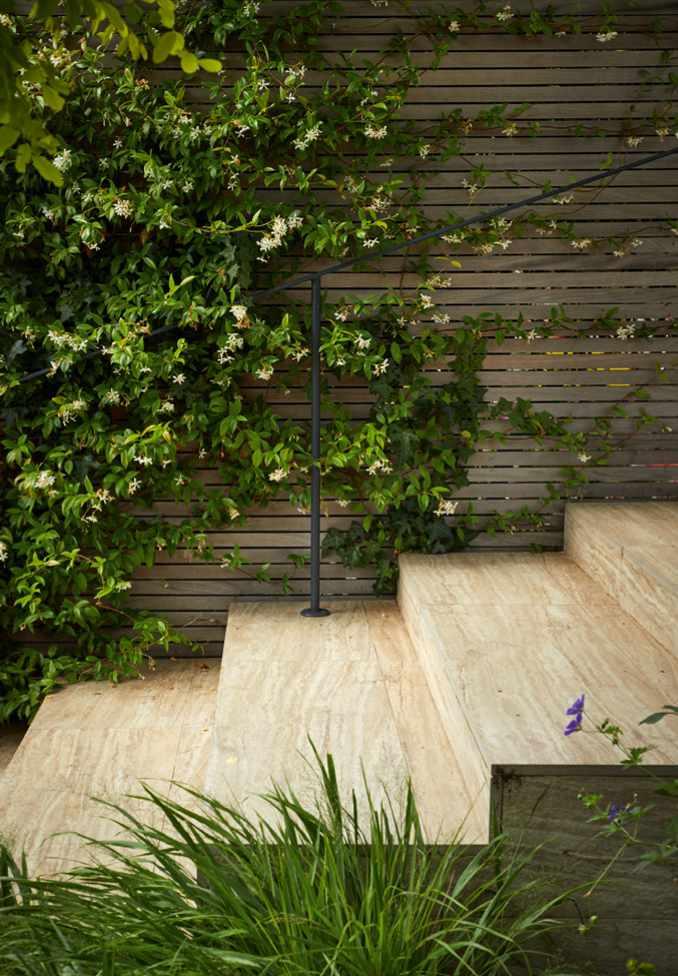
It is this feeling – of a secret, magical, compelling space – that Stefano tried to preserve as he transformed the garden for
the clients, whose only request was that it should allow their son to play football. To do this, Stefano used the elongated shape of the plot to his advantage, dividing it to create the necessary lawn while focusing his efforts on the area nearest the house.
Key to creating the atmosphere he wanted is the planting, which is lush and generous, and dissected by a meandering gravel path of fluctuating width. “Having something irregular and organic seemed to fit the space better,” says Stefano. Evergreen shrubs such as Pittosporum tenuifolium ‘Golf Ball’ and Camellia japonica ‘Alba Plena’ mingle with others, including Hydrangea quercifolia Snow Queen (= ‘Flemygea’) and the white-flowering Trachelospermum jasminoides, for seasonal interest. Eddying around these are repeat plantings of perennials – Geranium Rozanne (= ‘Gerwat’), Astrantia major ‘Large White’ and Kirengeshoma palmata among them.
Left
The existing, statuesque false acacia (Robinia pseudoacacia) was retained and makes a stunning focal point from the kitchen and terrace, also serving to shade the house from the sun. The wood-patterned porcelain tiles complement the wooden flooring within while echoing the sleek design of the interior.
Below
The pots, from Atelier Vierkant, were the starting point for the design, their colour blending perfectly with the terrace tiles and the painted wall, along which Trachelospermum jasminoides is trained. In this one, blue Geranium Rozanne (= ‘Gerwat’) mixes with old inflorescences of Salvia x sylvestris ‘Serenade’, which when in flower provides a contrasting violet.

Bottom
The original boundary fence was retained on one side of the garden. On the other, where it is more visible, it has been replaced with a horizontally slatted design covered in evergreen Trachelospermum jasminoides, whose scented, white flowers are a delight in mid to late summer.
SMALL GARDEN 1 AUGUST 2022 GARDENSILLUSTRATED.COM 53
Additional impact comes from six handsome tree ferns, some of them over 3m tall, whose spreading fronds conjure a sense of jungles and lost worlds; a number of tall, glossy-leaved Fatsia japonica; and two Acer palmatum ‘Sango-kaku’, whose branches turn bright red in autumn and winter. “They look like little fires burning,” says Stefano.

The crucial sense of immersion and enclosure stems chiefly from the canopy layer, so Stefano retained as many trees as he could – three birches, a lilac and, most importantly, a glorious Robinia pseudoacacia close to the house. “The leaves are already light green and when the sun shines on them, the whole tree seems to glow with energy,” he says.
A rose clambering over an archway to the rear of the space was also preserved, although the arch itself was replaced by a sharp, modern design in powder-coated steel. Coloured green, it acts as a highly effective focal point, drawing the eye along the pathway to the end of this part of the garden and creating a sense of mystery as to where it goes next as it slips, unseen, behind the pair offset yew hedges that screen the lawned area.
Before engaging Stefano, the client had already chosen the pots she wanted to use, a collection of light, sandy-coloured planters from Belgian clay specialist Atelier Vierkant, and it was these – and the design of the new kitchen – that set the tone for the hard landscaping. “I could have used sandstone,” says Stefano, “but I felt that these wood-patterned tiles were more contemporary, and part of the same design language as the refurbishment.”
The same company also makes smooth, pebble-like seats, one of which now nestles in the borders – revealing and disguising itself as the planting waxes and wanes with the seasons. “To me, it looks like a dinosaur’s egg,” says Stefano. It does, and one that feels entirely at home in this otherworldly space. n
The crucial sense of immersion and enclosure stems chiefly from the canopy layer, so trees were retained wherever possible
54 GARDENSILLUSTRATED.COM AUGUST 2022
Seen from above, the wonderful textures of the planting are clear, with, top left, Mahonia x media, the shuttlecock eruptions of tree ferns and, just beginning to colour, the serrated leaves of Acer palmatum ‘Sango-kaku’.
Left
The metal archway acts both as a focal point from the house and as a gateway to the rest of the garden, which includes a large lawn and a garden studio and trampoline. The pebble seat is partly concealed by Japanese forest grass (Hakonechloa macra) and Kirengeshoma palmata

Below left
Astrantia major ‘Large White’, which grows to around 90cm tall, is one of the key perennials in this garden. Stefano chose it for its clump-forming habit, its pure white petals and its stature, meaning it really stands out among the planting.

Below right
There was an existing clump of three hibiscus in the garden before Stefano started work. Feeling that their exotic looks were in keeping with the jungly look of his design, Stefano has relocated the plants to thread the colour through the space.

GARDEN PLAN

5
Turn to page 72 for Stefano’s design tips
4
6
3
4 Pathway 5 Arch 6 Further garden 2
SMALL GARDEN 1
1 House 2 Terrace 3 Steps 1
Cornered by nature
A previously tricky, small, corner plot of this Grade II-listed Georgian house is now a lush, multi-sensory space for dining and entertaining guests, while also welcoming vital pollinators
 WORDS
SONYA PATEL ELLIS PHOTOGRAPHS RACHEL WARNE
WORDS
SONYA PATEL ELLIS PHOTOGRAPHS RACHEL WARNE
KEY ELEMENTS
What Small, urban garden adjoining a Grade II-listed Georgian house. Where London.
Size 35 square metres (a corner plot). Soil London clay, improved and regularly topped up with mulch.
Aspect East-facing.
Special features A dining area and pond.
Designed by Miria Harris, landscape designer (miriaharris.com).
There’s a beauty in not knowing what’s around the corner – or in this case, what to expect from the three-cornered plot of land attached to the back of the beautiful, three-storey Georgian townhouse, owned by art-collecting couple Gareth and Dave, and transformed by landscape designer Miria Harris into a relaxing urban oasis.
Just seconds from a recently greened-up yet still busy Highbury Corner, through the cool, period-featured corridor to the corner-scape kitchen, the big reveal instantly rewards. With a finely tuned eye for design and curation, and a keen ear for listening to her clients and to the rhythm of nature, Miria has created an impressively multi-fold garden. Within the sanctuary of its boundary walls lies a series of beautifully planted, connecting spaces, each of which leads to an interior dining area beyond. Al fresco entertaining is at the heart of the plan.
“With four entries to the garden from the house and two levels to navigate, the original garden was a mismatch of badly designed steps and poorly laid hard landscaping causing drainage problems and trip hazards,” says Miria. Now, a jauntily angled Californian basketweave of Belgian Vande Moortel bricks knits the whole lower courtyard together, with reclaimed York-stone flags above.
The new, mostly evergreen and successively sensory planting plan, incorporating a wonderfully gnarled Cotinus coggygria ‘Royal Purple’ and a mature Wisteria sinensis, is similarly cohesive. Ferns – including two of Miria’s favourites, Polystichum polyblepharum and
Lush evergreen and perennial planting softens the upper terrace of York flagstones and creates a frame for the pond. Anchoring the corner is a gnarled Cotinus coggygria ‘Royal Purple’, it’s light-catching maroon foliage sets the tone for a succession of flowers in shades of purple, blue and dark red.

SMALL GARDEN 2
AUGUST 2022 GARDENSILLUSTRATED.COM 57
Dryopteris filix-mas – were a must, with the arching blades of Hakonechloa macra providing the perfect textural foil. Miria also ensured a long succession of flowering interest, using Trachelospermum jasminoides on the bespoke, anthracite-grey, squareprofile trellis to bring a heady, summer scent from June into September.
“You may think that shady courtyard gardens are limited when it comes to flowers, but this garden is full of them,” says Miria. The tapestry includes sultry Rosa Night Owl (= ‘Wekpurosot’), Leycesteria formosa ‘Purple Rain’, with its flamboyant flowers and purpletinged, crinkly leaves, crimson Persicaria amplexicaulis ‘Blackfield’, reddish-purple Astrantia ‘Hadspen Blood’, violet-blue Geranium ‘Brookside’, and the deep-purple Penstemon ‘Raven’, which, alongside redpurple Fuchsia magellanica, is particularly attractive to bees: “I make a conscious effort to weave wildlife-friendly plants into my designs,” says Miria.

This elegant palette is mirrored in the bronze-maroon foliage of Heuchera ‘Walnut’, a plant that’s repeated through the scheme to light up shadier spots, its tall panicles of frothy, white flowers on stiff stems giving structure to the winter garden. It is joined by autumn showstopper, Chinese Virginia creeper (Parthenocissus henryana) and a multi-stemmed Acer griseum holding its own in an awkward corner.
The final touch of calm comes via a small pond, sunk into a raised bed and housing ornamental fish saved from the old garden. All in all, this is a lowmaintenance, relaxing gem of a space but one where the owners can get creative by adding bulbs and annuals to a host of handpicked pots. As Miria muses “the ripple effect of greening up the city, corner by corner, is also powerful” – and that’s something on which we can probably all agree. n
You may think shady gardenscourtyard are limited when it comes to flowers, but this garden is full of them
58 GARDENSILLUSTRATED.COM AUGUST 2022
The al fresco dining area is central to the design, furnished with Ronan & Erwan Bouroullec Palissade table and chairs, and a Lampe Gras exterior anglepoise lamp. Shrubs and perennials, including Leycesteria formosa ‘Purple Rain’, Fuchsia ‘Riccartonii’ and Geranium ‘Brookside’, envelope the setting with colour and scent.
GARDEN PLAN

Left
The lower terrace is defined by a beautifully laid basketweave of bricks, with the red-brown foliage of Heuchera ‘Walnut’ leading the gaze up into the green oasis above. The bespoke, anthracite trellis is the perfect foil for a sequence of pollinator-friendly, flowering climbers, including Trachelospermum jasminoides and a climbing hydrangea.
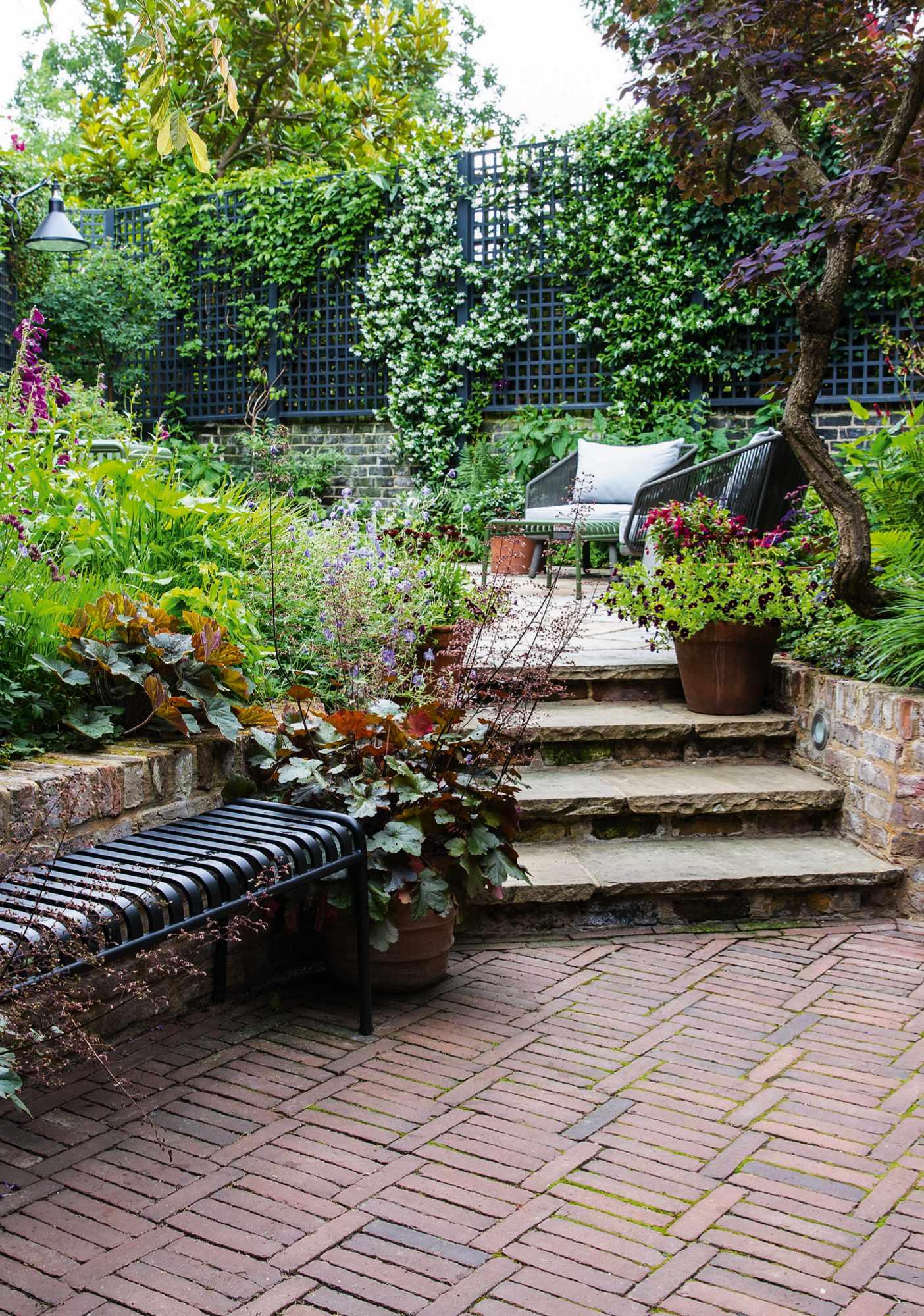

Above top
The clients love ferns and Miria was happy to include favourites Polystichum polyblepharum and Dryopteris filix-mas. The arching blades of Japanese forest grass (Hakonechloa macra) are the perfect textural foil, contrasting with a softly palmated heuchera and lacy-leaved geranium.
Above
“In small gardens, all plants have to work hard,” says Miria. “Penstemon ‘Raven’ is one such grafter, its deep-purple, white-throated, bell-shaped blooms flower from May to October. The bees are rather fond of its nectar and pollen-rich blooms too.” The height of this plant also lends architectural structure.

SMALL GARDEN 2
AUGUST 2022 GARDENSILLUSTRATED.COM 59 1 2 3 3 4 5 7 8 6
1 House 2 Lower terrace 3 Steps 4 Water feature 5 Upper terrace 6 Shed 7 Storage bench 8 Bin store
to page 72 for Miria’s
Turn
design tips
Mood enhancer
A bright and airy seaside garden, shimmering with light and jewel-like colour, is guaranteed to lift the spirits
 WORDS CLARE COULSON PHOTOGRAPHS RICHARD BLOOM
WORDS CLARE COULSON PHOTOGRAPHS RICHARD BLOOM
KEY ELEMENTS
What A sunken coastal garden with terraced beds and spacious entertaining areas. Where Suffolk. Size 173 square metres. Soil Sandy. Aspect East-facing. Special features Beautiful hard landscaping and resilient coastal planting. Designed by Sue Townsend
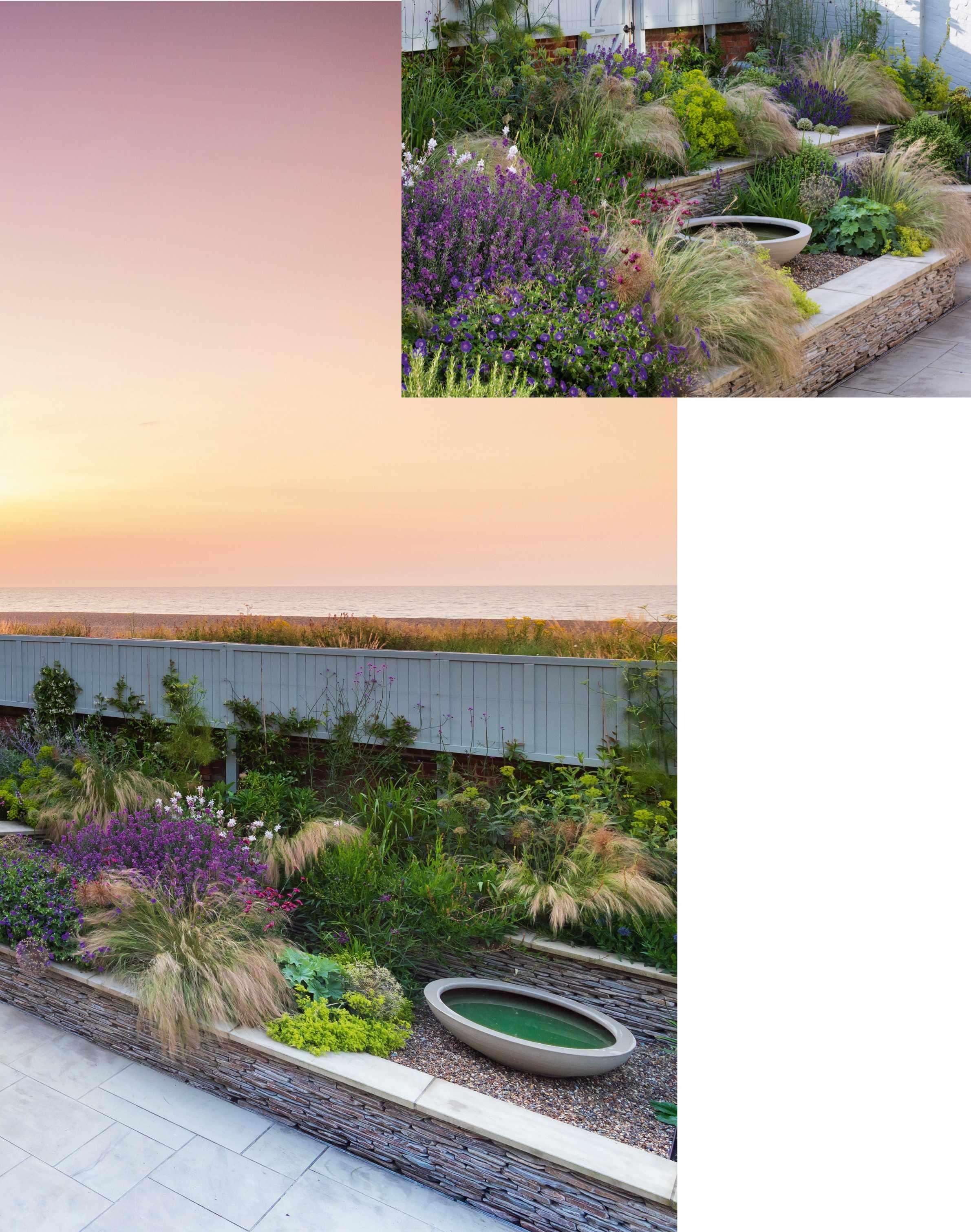
In a courtyard in Aldeburgh on the Suffolk coast, garden designer Sue Townsend has combined all her experience with plants that can withstand the ferocious North Sea winds, sandy soil and salty air to create a breezy, sunken garden rich with colour and movement. The brief from her clients was straightforward – they wanted an inviting space to entertain large groups of family and friends. The original garden was “grey, dark and oppressive,” says Sue. “They were keen to do something that was more uplifting.”
Central to that mood is the immaculate hard landscaping (built by local contractors David Taylor Landscapes) in which beautiful paddlestone walls are topped with the pale York stone that flows through the whole space. A small, elevated terrace catches the evening sun and sits above a larger sunken dining area and a smaller seating nook with a firepit and integrated curved stone bench. “The thing I really liked about this garden is that the owners put so much emphasis on the craftsmanship,” says Sue. “It’s tactile.”
It also sets the scene perfectly for the airy, jewel-toned planting palette, in which a restricted group of colours is repeated throughout the garden, creating harmony and dynamism through a relatively small area. There are tough stalwarts in blues and purples such as Verbena bonariensis, Salvia ‘Blue Spire’, Erysimum ‘Bowles’s Mauve’, Geranium Rozanne (= ‘Gerwat’) and Allium cristophii. Oenothera lindheimeri and Dianthus carthusianorum add pops of white and pink, while Salvia rosmarinus Prostrata Group falls elegantly over the sides of walls. And rather than cramming plants in, there was a very conscious decision to leave space for the plants to breathe, creating a light and relaxed mood. Although it’s a second home, the owners visit throughout the year so
SMALL GARDEN 3
(suetownsendgardendesign.co.uk).
This picture
Steps lead up to an elevated terrace, which is perfectly placed to catch the evening sun. Right
AUGUST 2022 GARDENSILLUSTRATED.COM 61
On the lowest terrace an Urbis Lily Bowl provides a focal point from the house and creates beautiful reflections from the surrounding grasses and perennials.
the garden has to hold its own year round. Dramatic lighting helps to do this – spotlights highlight areas of planting as well as the owners’ sculptures, creating beautiful shadows and reflections. There are also evergreens threaded through the design, including Pittosporum tenuifolium ‘Golf Ball’, Elaeagnus x submacrophylla, Phormium ‘Bronze Baby’, Cistus x argenteus ‘Silver Pink’ and Bupleurum fruticosum, with Trachelospermum jasminoides climbing up the walls. Stipa tenuissima and the shimmering Miscanthus nepalensis both add to the winter interest, and bring movement as well as beautiful reflections in the small water feature that sits centre stage on the lowest terrace. “When there’s the slightest breeze it all just wafts,” adds Sue.
One of the few gambles is the Coyote willow – Salix exigua – which adds some height and is one of the few willows that can survive on sandy soil. The project was carried out in spring 2020 and the garden has since thrived, the only loss a hebe that succumbed to a cold snap. “I do experiment with the plants to a certain degree, but I also respect the fact that the sea and the salt are here. I’ve developed a palette that I know works well,” says Sue, who has done a garden on the seafront at nearby Thorpeness and is currently working on another coastal garden further along the coast at Dunwich. “It’s really thinking about leaf types – they’ve got to be waxy. Rosemary and euphorbias cope really well.” A favourite is Euphorbia seguieriana, which adds a zingy jolt of colour and, unusually for the species, flowers in summer.
Visitors to this popular seaside town inevitably flock to the beach, but the clever sunken layout and double wall and fence mean that the owners retain their privacy. A concealed gate meanwhile allows access right on to the beach for a quick dip or to watch one of the east coast’s spectacular sunrises. n

Rather than cramming plants in, there was a very decisionconscious to leave space for the plants to breathe
62 GARDENSILLUSTRATED.COM AUGUST 2022
Despite the location right on the beach, Sue has designed a private space with fencing painted to match the house and terraced planting that creates a sense of enclosure and privacy.
Left
In high summer pops of colour from lavender, Dianthus carthusianorum and Erysimum ‘Bowles’s Mauve’ contrast with Stipa tenuissima and evergreens including pittosporum.

Bottom left
Plants are encouraged to tumble gracefully over the immaculate York stone-topped paddlestone walls. Here Erysimum ‘Bowles’s Mauve’ and Ballota pseudodictamnus are perfect partners.

Below Airy spires of Oenothera lindheimeri add a fresh note among jewel-toned perennials.

GARDEN PLAN
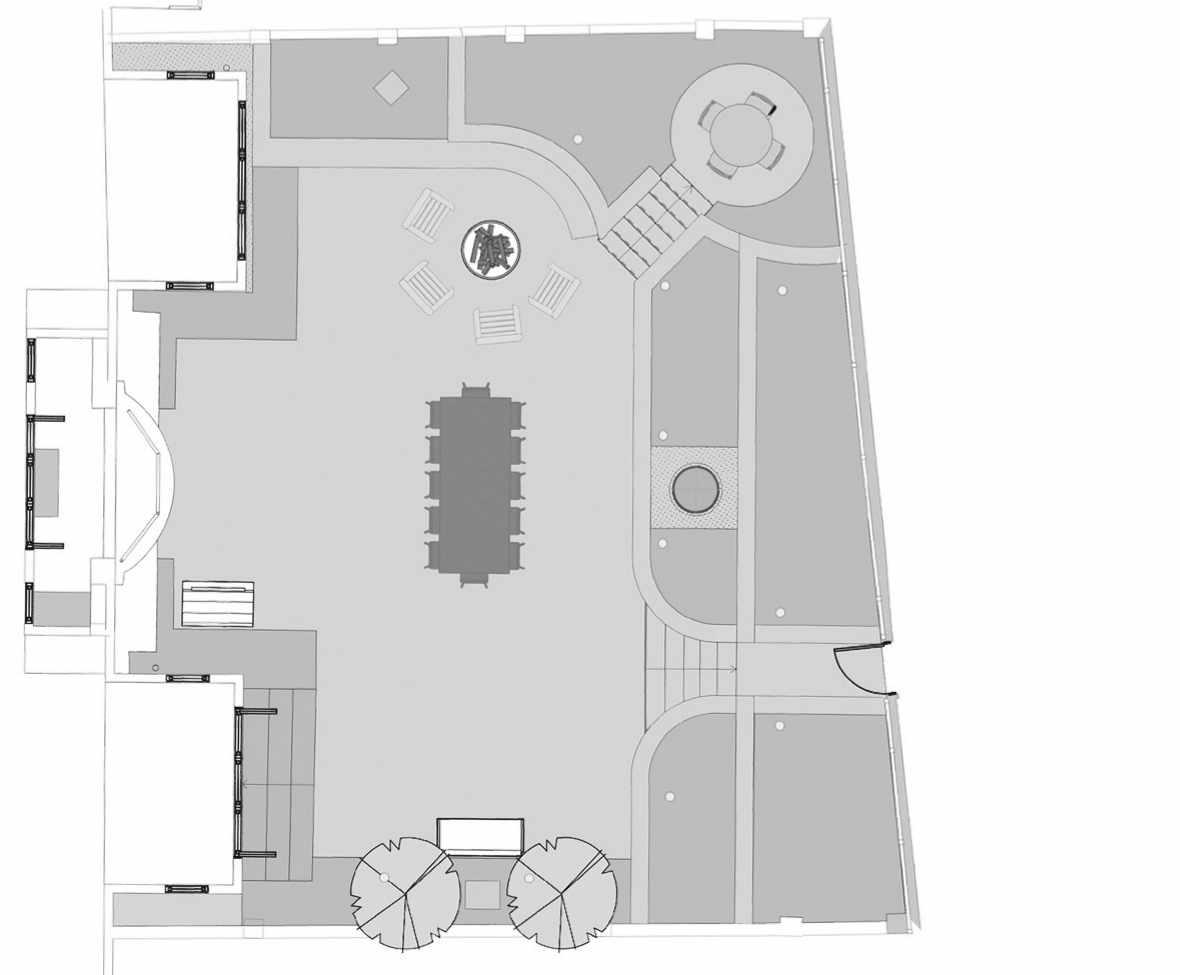
1 House 2 Terrace
3 Outdoor dining area
4 Firepit
5 Steps
6 Raised seating area
SMALL GARDEN 3
AUGUST 2022 GARDENSILLUSTRATED.COM 63
1 2 3 4 6 5 5 9 8 7 Turn to page 72 for Sue’s design tips
7 Water bowl 8 Bench 9 Gate to sea front
Deceptively simple
Designer
WORDS
KEY ELEMENTS
What Small residential garden. Where London.
Size A tapering rectangle of around 70 square metres.
Soil Compacted London clay and rubble, with imported topsoil in planted areas. Aspect West-facing.
Special features Woodland planting and firepit area.
Designed by Sheila Jack (sheilajack.com).
Above
Bands of York stone allow water to permeate into the strips of gravel and planting and create a visual link with the horizontal batten trellis. This has been painted in a soft blue-black, which helps to emphasise the largely green palette that includes Selinum wallichianum, Hakonechloa macra and Erigeron karvinskianus
With dappled sunlight falling on lush ferns and mounds of grasses tousled by the breeze, this city garden is a welcome refuge from the hot and dusty summer streets beyond. The tranquil simplicity of this small plot belies the huge transformation that has been worked here by designer Sheila Jack. When her photographer friend Lisa Linder moved to this Victorian coach house in Hampstead, 20 years ago, Lisa and husband Neil needed somewhere for their two young sons to burn off energy and so the whole plot was hidden under artificial grass. In the intervening years, the London clay compacted under many thousands of football sessions, so that by the time the boys had grown up, water was regularly pooling on one side of the garden and threatening to damage the boundary wall.
Coming to Lisa’s rescue in 2018, the project began with the excavation of huge trenches for drainage pipes, as well as land anchors, that now hold the wall in place. With little horticultural knowledge but a strong sense of aesthetics, Lisa wanted somewhere lush and green, with space for her still sports-mad sons to play table tennis. Sheila steered her away from the idea of a lawn towards a buff-coloured gravel. “Grass was always going to be a struggle in this shady space. These Cotswold pebbles are smooth enough to walk on barefoot and bring light into what was a dark spot.”
The same soft, buff tone flows seamlessly from the gravel to the terrace of York stone by the house, enhancing the sense of space. The paving slabs have been arranged in irregularly spaced stripes, interplanted with low-growing Soleirolia soleirolii. “This design helps with water permeability and provides
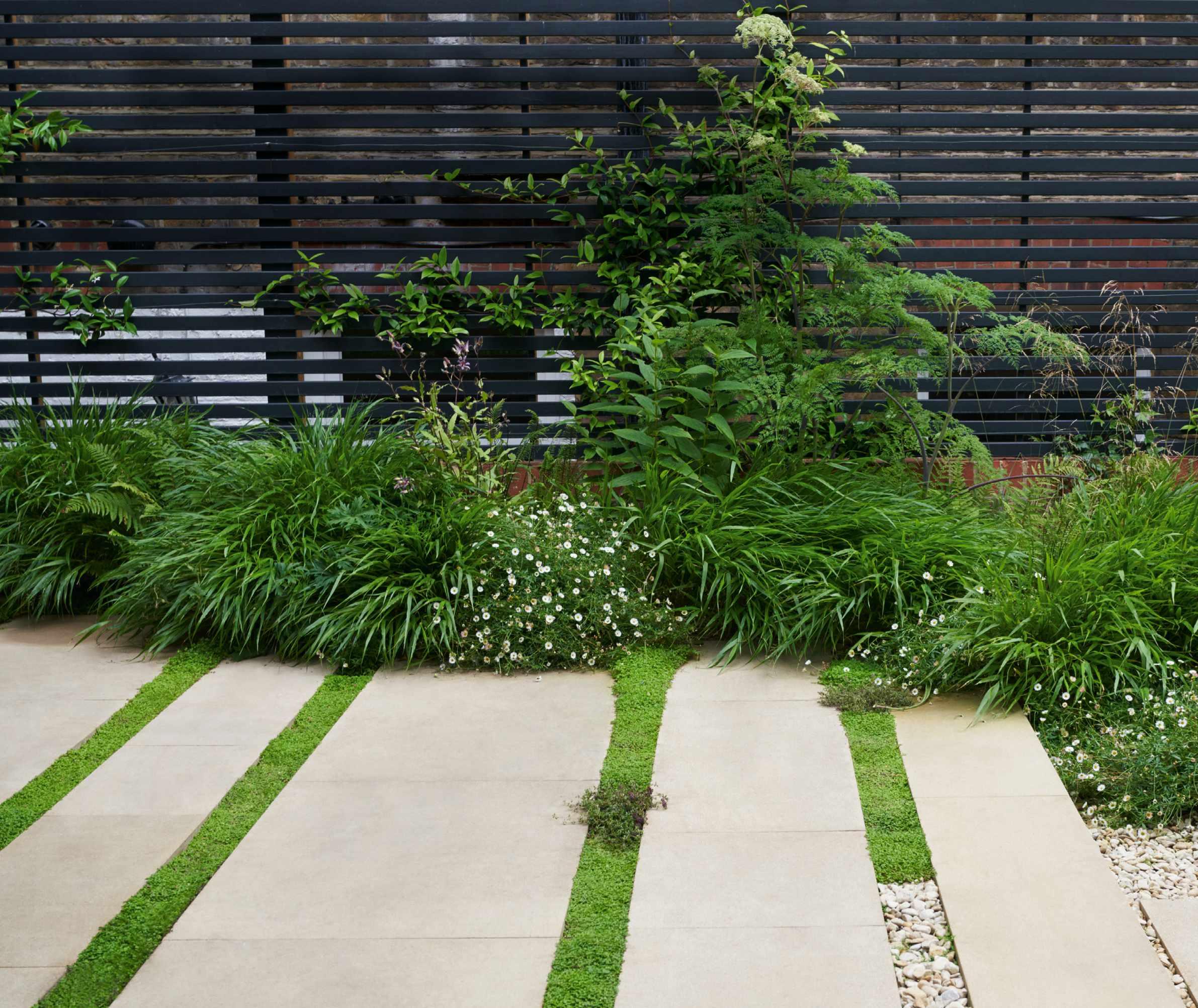
so gra foo had on d
Sheila Jack has transformed this small city garden from artificial lawned-anonymity to a charming woodland-inspired plot that’s a peaceful social space for a family with grown-up children
64 GARDENSILLUSTRATED.COM AUGUST 2022
KATE JACOBS PHOTOGRAPHS LISA LINDER
Left
The captivating flowers of Tricyrtis formosana ‘Dark Beauty’, which Sheila selected “for its intensely plum-coloured buds and exotic-looking white flowerheads, heavily spotted in inky purple.”
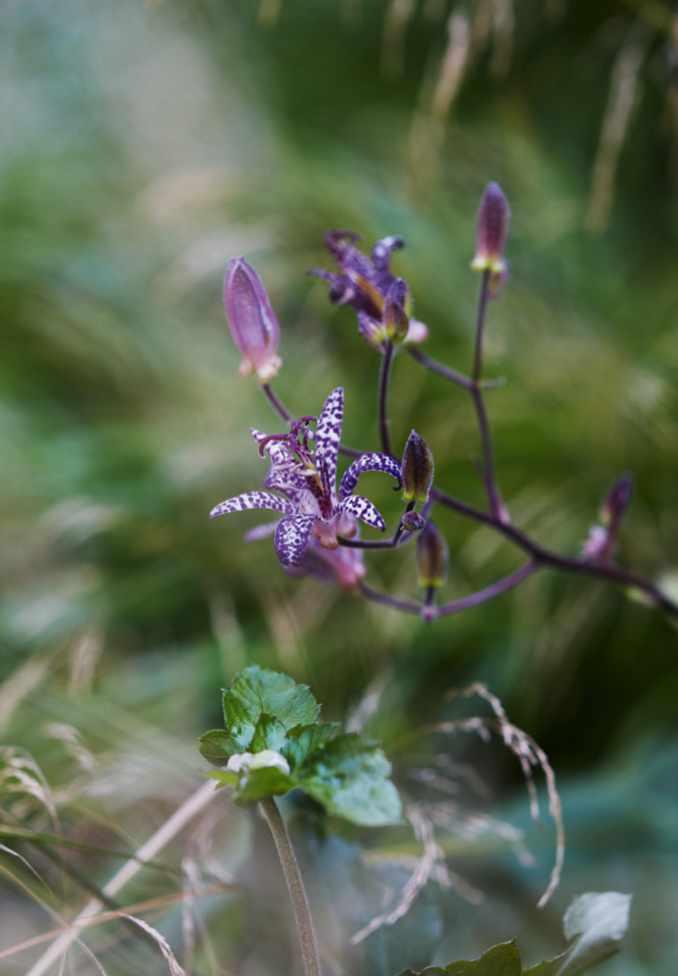
Below left
The airy flower spikes of Bistorta amplexicaulis ‘Alba’ emerge from billowing masses of cloud-like Deschampsia cespitosa ‘Goldtau’, bringing a wild element to the planting scheme.

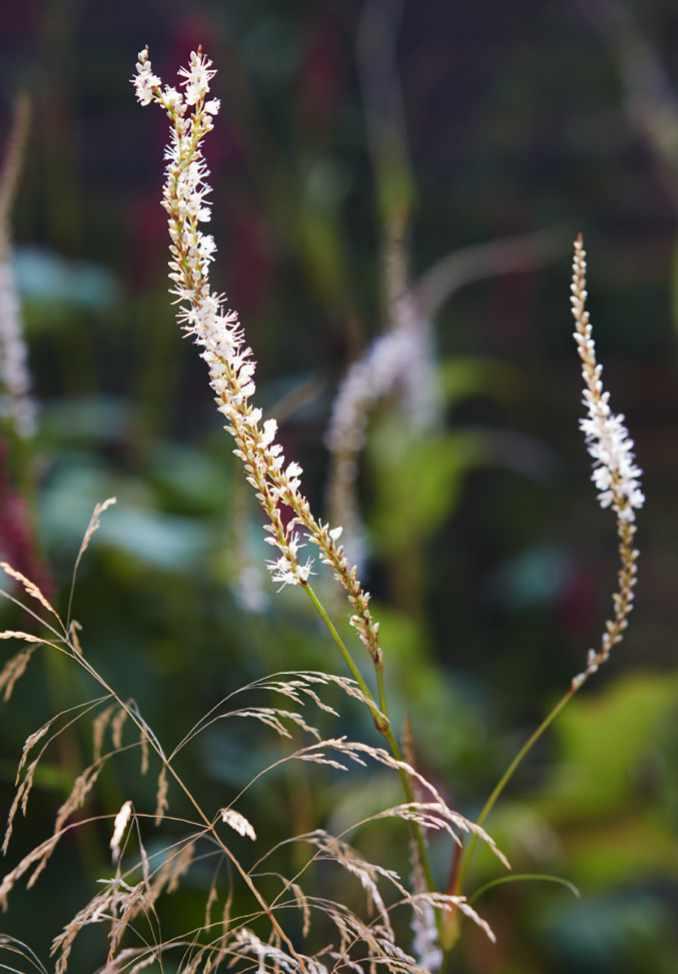
Below
The new upper-ground floor balcony replaces the old decked area with its steep, stepped access down to the garden, providing a viewpoint that encourages you to pause and contemplate the space, where once it was just a precarious route down. A potted Dicksonia antarctica forges a link with the planting below.

SMALL GARDEN 4
GARDEN PLAN

Top right
This versatile, portable Skagerak tray table is ideal for a small garden. Sheila planted a little Viola hederacea in the vintage French pot from Petersham Nurseries.

Right
Reliable perennial Selinum wallichianum, chosen for its broad, white umbels and dainty, fern-like foliage, adds height and interest against the dark trellis.


Far right
The cast iron fire bowl, from Crocus, provides a focal point and is popular with the owners’ sons, who like to gather around it with their friends in the evening.

Below Bistorta amplexicaulis Taurus (= ‘Blotau’) is used for its vigorous habit in partial shade. “It adds vertical interest and dashes of dark red through to autumn.”
Below right
These portable ‘Butterfly’ chairs can be moved around for sun or shade. The Cotswold pebble gravel was an affordable, water-permeable, hard-landscaping material. Bold bands of York stone are interplanted with Thymus praecox and Soleirolia soleirolii

1 2 3 4 5 5 5
1 House 2 Balcony
3 York-stone paving
4 Cotswold pebble gravel
5 Mature Betula trees
a strong graphic counterbalance to the loose, organic feel of the gravel area.”

To the rear of the garden, the boundary fence is blurred by a curtain of mature Hedera helix and fronted by an existing Betula pendula and acacia, along with another double-trunked Betula pendula near the house. Between the birches is a multistemmed Betula utilis subsp. jacquemontii, added to lighten a gloomy corner and distract the eye from the awkwardly obtuse angle.
These trees informed Sheila’s decision to create a woodland feel here.“I jokingly refer to it as the ‘glamour woodland’; an excuse to plant a pretty but reasonably self-sustaining scheme of plants suited to the partially shaded conditions.” Key plants include shaggy tufts of forest-dwelling Hakonechloa macra and ferns Polystichum setiferum and Blechnum spicant. The planting is loose and naturalistic, with hummocks and mounds gently defining the central open space, as though plants have self-seeded there, and the planted areas improved with topsoil, as the clay and rubble on the site was unsuitable as a growing medium. Sheila and Lisa wanted the garden to be largely green and the perennials were chosen for their muted charms. “I wanted subtle, delicate flowerheads on wiry stems, and a variety of interesting flower shapes, but nothing too brash.” So, floating among waves of grasses are the fluffy, crimson spikes of Bistorta amplexicaulis Taurus (= ‘Blotau’) and the airy umbellifers of Selinum wallichianum, each creating seasonal interest without stealing the show.
The family all love the new garden, and the couple’s sons spend just as much time out here as ever. Now it’s established, the garden needs little in the way of watering or maintenance, although the plants do find themselves carefully manicured by Lisa, who approaches them with her photographer’s eye for visual perfection. n
SMALL GARDEN 4
The idea was to plant a pretty but reasonably self- sustaining scheme of plants suited to the shadedpartiallyconditions
AUGUST 2022 GARDENSILLUSTRATED.COM 67
The York stone references the colour of the Victorian house’s pointing, and the colour blends seamlessly with the soft buff of the Cotswold pebble gravel from Allgreen. Lisa had the old cedar decking recycled into a generously proportioned garden sofa, upholstered with Sunbrella outdoor fabric.
Turn to page 72 for Sheila’s design tips
Urban jungle
In this Islington garden, designer Declan Buckley has used lush, jungle-style planting to remind his clients of their childhoods in Kerala
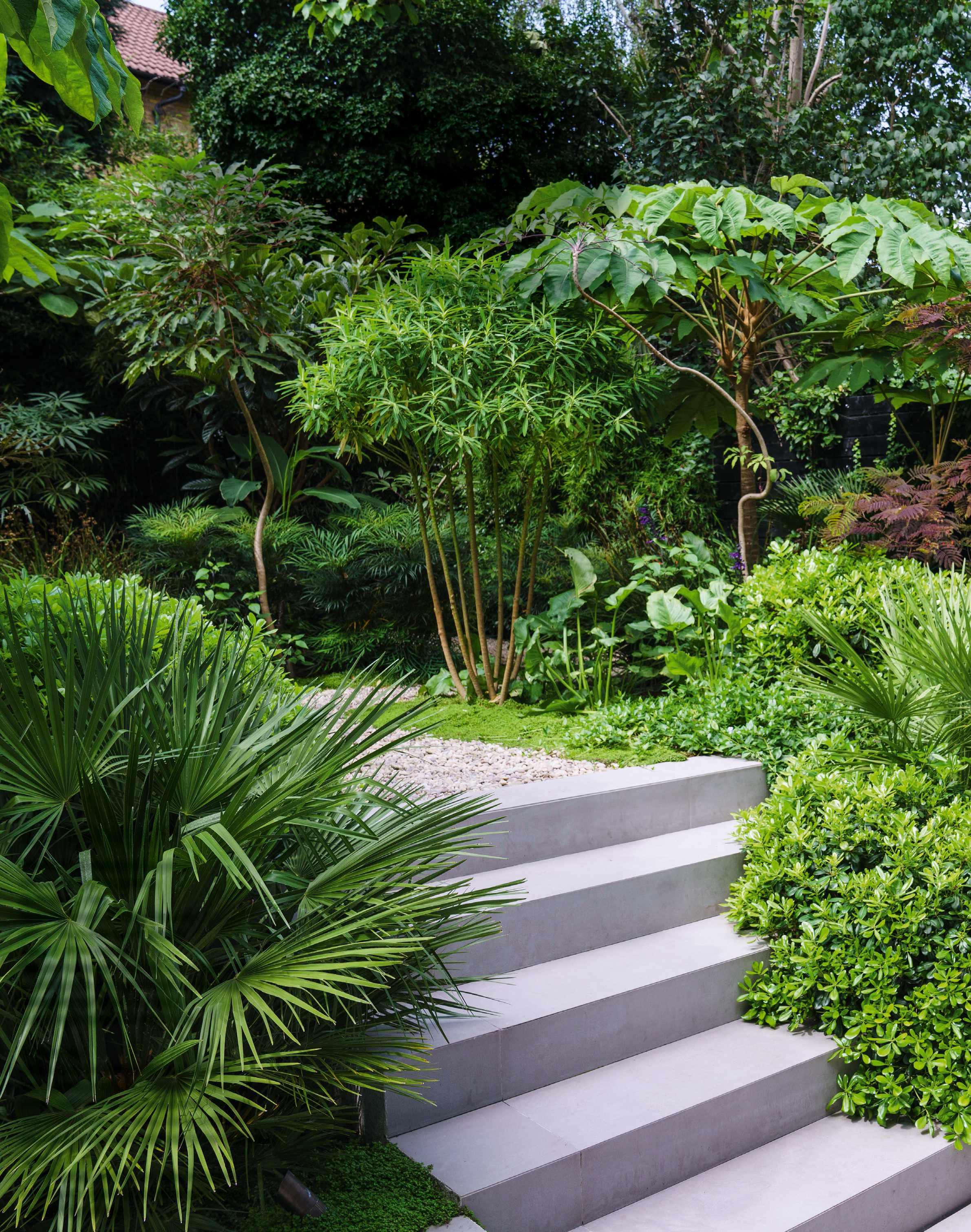
WORDS NATASHA GOODFELLOW PHOTOGRAPHS RACHEL WARNE
KEY ELEMENTS
What Urban residential garden. Where Islington, London. Size 10m x 14m.
Soil Improved London clay with better-than-average drainage. Aspect West-facing.
Special features Layered, sub-tropical style planting with a range of textured foliage. Designed by Declan Buckley, (buckleydesignassociates.com).
This image
Declan has used layering to great effect with Soleirolia soleirolii as groundcover, a mid-layer of Pittosporum tobira ‘Nanum’ and Chamaerops humilis, along with shrubs and small trees including Euphorbia mellifera. Right
The planting provides a verdant, mainly evergreen, backdrop to the house, in full view of the kitchen.
Sometimes, things just fall into place. That was certainly the case in this project, where the clients, introduced to garden designer Declan Buckley by their architect, happened to have bought a house just across the road from Declan’s home. They got in touch, intending to visit another of Declan’s projects, but when that fell through, they met at Declan’s house instead and the rest, as they say, is history. “My garden is like the temperate house at Kew, but without a roof,” says Declan. “It’s rather overgrown now but they loved the lushness of it, and when they realised that they could grow hardy versions of bananas that they were familiar with from growing up in Kerala, they were super excited.”
The clients’ new garden, when Declan first saw it, was nothing more than a patch of grass backing on to a line of Cupressocyparis x leylandii in the neighbouring plot – in this case a welcome feature, since the house refurbishment featured a lot of glazing and the trees afforded some privacy. The extensive use of glass also means that the garden is the first thing you see when entering the house, so Declan has layered his planting from the ground up, creating a lush, dense understorey and using taller plants for scale and seclusion. Most are evergreen to ensure year-round interest, all are hardy for minimal maintenance, and together they conjure that Rousseau-esque feel Declan loves. “For a low-maintenance garden, it’s about as exotic looking as you can get in the UK,” he says.
Texture, rather than colour, is the star here, with contrasts of foliage and scale used to great effect. Tiny, smooth-leaved Soleirolia soleirolii is used as an edging plant, scrambling out across the porcelain steps and pebble pathway and softening the underlying geometry. At the other end of the scale are the huge, palmate leaves of Tetrapanax
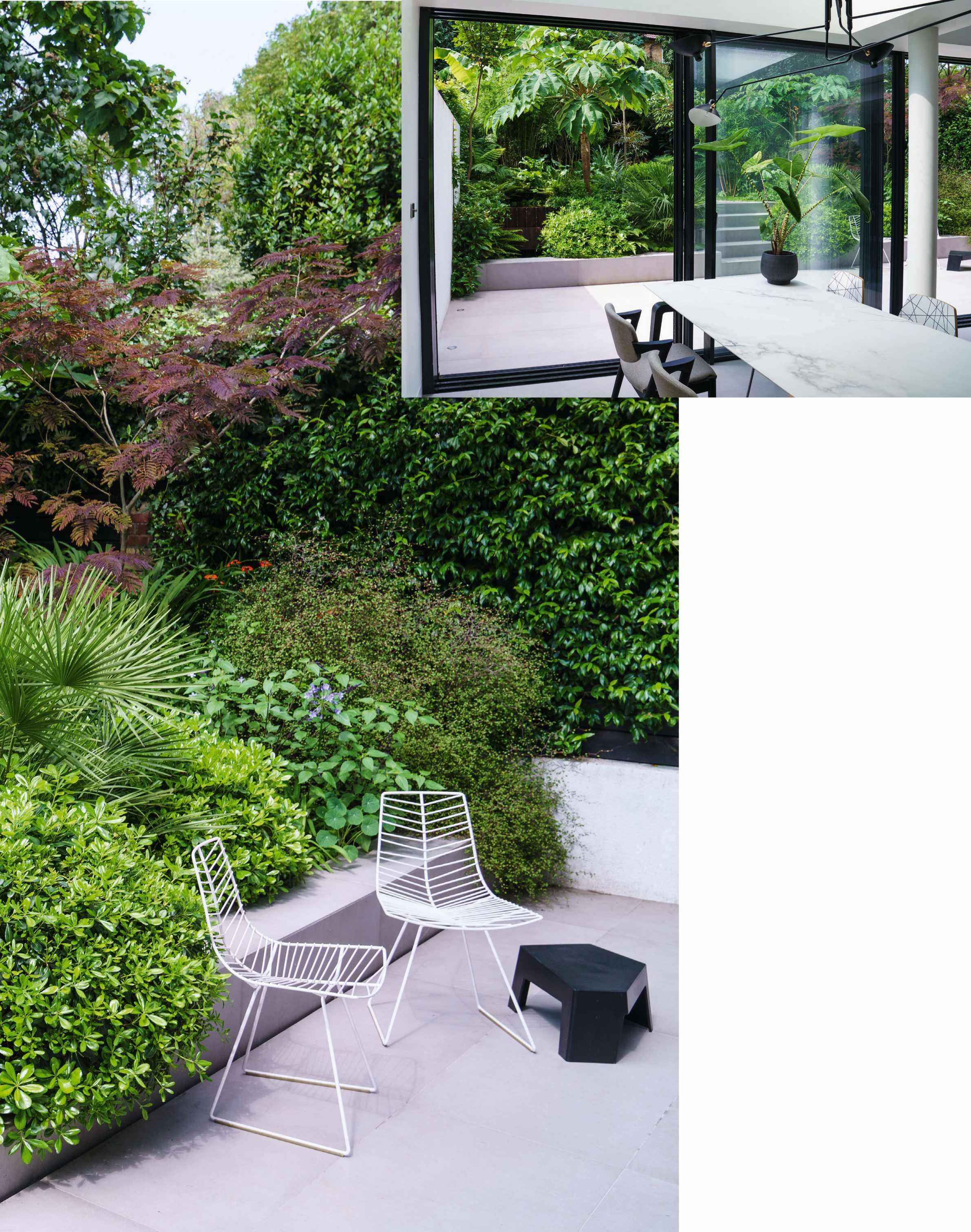
SMALL GARDEN 5 AUGUST 2022 GARDENSILLUSTRATED.COM 69
papyrifer ‘Rex’, repeat planted throughout the space, and a fast-growing Paulownia tree, positioned so that its lilac flowers in spring shine out against the leylandii.
Elsewhere, the chocolatey hue of feathery Albizia julibrissin ‘Summer Chocolate’ is echoed in the bespoke steel water feature and in the quite extraordinary plant that is Pseudopanax crassifolius – a tall, almost leafless trunk with slender, drooping leaves. Schefflera and Fatsia polycarpa (more delicate than F. japonica) add height without taking the light, and a row of Phyllostachys bissetii has been planted at the rear as a precautionary measure, “just in case the leylandii are ever cut down,” says Declan.
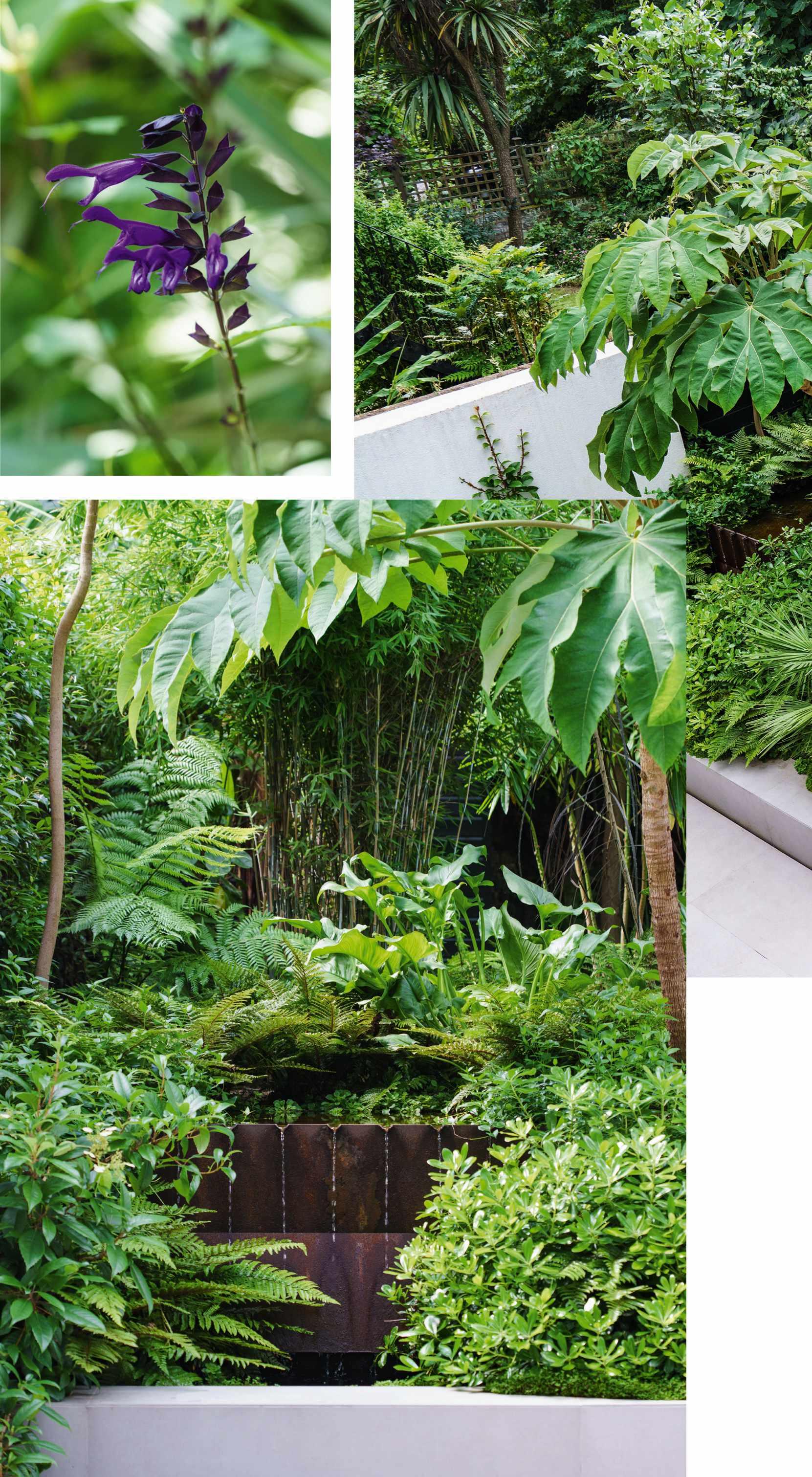
More familiar plants have been used too. Declan has clipped Pittosporum tobira ‘Nanum’ into “boulders” throughout the space, providing a smooth, cushiony backdrop to the firework-like explosions of the leaves of Chamaerops humilis. Conversely, Euphorbia mellifera, usually a large dome, has been trained into a striking, multi-stemmed shrub, underplanted with the glossy leaves of Zantedeschia
Though the overwhelming impression is one of green, there are subtle changes throughout the year, with the Zantedeschia and Libertia chilensis flowering in April and May, followed by a succession of scarlet crocosmia, blue agapanthus and deeppurple Salvia ‘Amistad’. Vinca difformis, the intermediate periwinkle, spills its starry flowers over the low walls around the terrace for much of the year.
The garden was only planted in 2018 but already it looks mature. Both Declan and his clients are thrilled with the growth rate and the way the textures and forms have grown together. Declan is also relieved. “The clients are my neighbours after all,” he smiles. “It would have been awful if they weren’t happy.” n
to page 72
Texture rather than colour is the star here, with contrasts of foliage and scale used to great effect
Turn
for Declan’s design tips
GARDEN PLAN

Top left
Growing to over 1m tall and with deep-purple flowers, Salvia ‘Amistad’ is one of the few pops of colour in the garden – others come from crocosmia, agapanthus and Vinca difformis, the intermediate periwinkle.
Left
The steel water feature is fringed with Zantedeschia aethiopica, young tree ferns (Dicksonia antarctica) yet to develop trunks, and a Hydrangea seemanii, an evergreen climber. A clump of evergreen bamboo (Phyllostachys bissetii) adds to the tropical feel.

Above
The density of the planting on the upper level is interrupted only by the sinuous gravel path. The contrast of leaf shapes works particularly well: the huge palmate leaves of Tetrapanax papyrifer ‘Rex’ against the feathery Albizia julibrissin ‘Summer Chocolate’ and the tall, slender Pseudopanax crassifolius with its drooping foliage. To the rear, the fresh green leaves of Musa basjoo (which resembles the edible bananas found in warmer climes) can just be seen, along with a foxglove tree (Paulownia tomentosa), which bears lilac flowers in spring.
SMALL GARDEN 5
AUGUST 2022 GARDENSILLUSTRATED.COM 71 1 2 4 6 5
2
3
4
5
6
7
3 7
1 House
Terrace
Bespoke water feature
Porcelain steps
Pebble pathway
Seating area
Store
Designers� tips for small gardens


It’s a fine art creating a garden in a tight space. We ask the designers of the small gardens featured in this issue to share their approaches to working with diminutive plots. The square metres may be minimal, but the ideas and techniques that can be employed are many
Consistency is key
Stefano Marinaz favours simplicity and continuity, with fuss-free hard landscaping, organicshaped paths and planting to blur boundaries.

In small spaces, the textures, finishes and colours of the hard landscaping should knit together. For the project in northwest London, the light-coloured gravel path is a visual continuation of the tiles on the terrace and these blend well with the pots. You can adapt the use of elements such as pots to continue the scheme and give them another function, as we did, transforming an Atelier Vierkant pot into a firepit and coffee table. We love using paths that meander through the planting. The width of the path should vary, allowing for different angles and views of the garden. An asymmetric layout provides more viewpoints, and naturalistic planting brings the mind closer to nature. It is important to green up the garden perimeters so that it's hard to tell where the property ends. I soften boundaries with common yew, or scented climbers such as Holboellia latifolia (shady walls) and Trachelospermum jasminoides (sunny walls). Smaller gardens are often shadier, particularly in cities, so I use perennials that stay fairly compact (within 70-80cm in height) to reduce the chance of them leaning towards the light. Pittosporum tobira ‘Nanum’, Sarcococca confusa and Daphne work well in many situations.
Love thy neighbour
Miria Harris borrows from the surroundings to make a small space feel bigger and evokes the planting of the wider landscape beyond the garden.

Talking to neighbours and getting them on board with any plans is key to a successful small garden design. Privacy is something a lot of people crave, but that doesn’t mean small gardens should be mean. Sharing plants (a climber from next door, for instance) or splitting costs can go a long way to improving the experience for all.
A garden that is connected to its environs always feels bigger. When designing a small garden, I often think about shakkei, the Asian design concept of ‘borrowed scenery’. The views of neighbouring gardens are important, as are the different views of planting and structures within the garden and how these will look all year round. Climbing plants are perfect for greening up a small space. Trachelospermum jasminoides is a good choice, or the creamyyellow T. asiaticum. Another favourite plant for small gardens is hellebore and I often use the claret-coloured, double-flowered hybrid ‘Pretty Ellen Red’. Its slightly tropical-looking, evergreen foliage can dance between different aesthetics and stylistic bents, and it grows well in pots. Fennel is also a plant I use often. The giant bronze type acts as a great diaphanous plant screen, filtering or teasing a view to another space in the garden.
Built-in features
Sue Townsend uses terraces and steps to amplify small spaces, with introduced features to unify the design and focal points to draw the eye.


To maximise space for entertaining in the Aldeburgh coastal garden, I created terraced retaining walls from paddle stones topped with sawn York stone. These bring height, texture and plenty of space for layers of planting that enclose the terrace and form the backdrop to the garden. Features can be introduced into a design to make the most of the space. In the Aldeburgh garden an integrated curved bench set into the wall allows the owners to gather round a firepit surrounded by the smell of rosemary and lavender. It’s important to have unity of materials so the same paddle stone theme was continued in the steps leading to a small seating area. Focal points are key. In this garden an Urbis water bowl in the lowest bed can be enjoyed from the house and sculptures are positioned in the planting.
Small gardens are often in full view, so select plants carefully and for all seasons. In this coastal garden there is an emphasis on evergreens and plants that can survive the salt-laden air. My go-to plants for small spaces include Oenothera lindheimeri
‘Whirling Butterflies’, Dryopteris affinis
‘Cristata The King’ and Salvia rosmarinus Prostrata Group.
A restrained palette
Sheila Jack limits the variety of both plants and landscaping materials, and maximises space through vertical planting and layering.
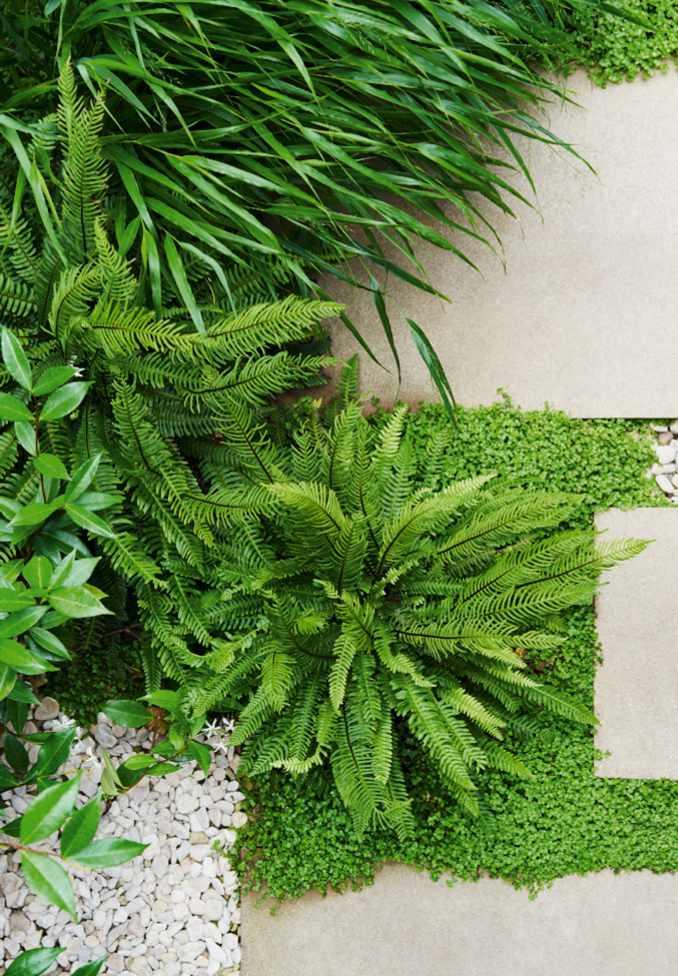
I like to use a restricted palette of natural materials linked to the surrounding architecture. In Lisa’s garden, we used simple but good materials including buff York stone, Cotswold gravel and a painted cedar trellis combined with a simple palette of plants suited to the conditions. Editing the planting to six to ten varieties in a tight space makes for a more successful scheme. Make use of neighbouring trees to extend views into and out of the garden. In this case, we used the tree canopy to enhance the woodland feel and sense of place. Painting boundaries dark colours will make them disappear. The dark grey used in Lisa's garden works wonderfully with the fresh green of the Hedera helix ‘Green Ripple’ and Trachelospermum jasminoides and helps to lose boundary in shadow. Layers of transparent planting or multistemmed trees with a light canopy, such as Amelanchier x lamarckii, will filter views into and out of a space. Don’t be afraid to bring the planting close to the house, and be generous with planting for maximum impact. Upright perennials, such as Cephalaria gigantea and Valeriana officinalis, and grasses such as Calamagrostis brachytricha and Deschampsia cespitosa work well.

Layers of evergreen
Declan Buckley focuses on year-round interest and thinks big in a small space, using tall and large-leaved plants to create a jungly feel.

When it comes to the plants in a small garden, I start by thinking about what the planting will look like in winter and always include a generous percentage of evergreen plants. It’s good to focus on foliage shapes and textures, sprinkling through with seasonal colour. Go for a single idea and run with it. For the Islington project, we took advantage of the London microclimate and used hardy and half-hardy exotic style planting, including Tetrapanax papyrifer, Trachycarpus wagnerianus, Schefflera taiwaniana and Schefflera alpina to create a space that transports the owners to warmer climes. We often use water in our projects, like we did here, as the sound of water will immediately create a sense of place in a small garden or courtyard. Don't be afraid of taller plants –remember the sky is your ceiling – and use perennial species in generous groups. For height in the Islington garden we used Pseudopanax crassifolius and Trochodendron aralioides (specifically the variety from Taiwan available from Crûg Farm Plants, which is glossier, airier and lighter – and faster growing – than the other form from Japan).

SMALL GARDENS AUGUST 2022 GARDENSILLUSTRATED.COM 73
ALISTER THORPE; RACHEL WARNE; RICHARD BLOOM; LISA LINDER; RACHEL WARNE.
Colouring in the city
In recent years the city of Sheffield has been given a green makeover thanks to a groundbreaking environmental strategy
WORDS
IN BRIEF
What City development scheme opening up areas of planting and new public green spaces.
Where Sheffield city centre. Size 1.3km of new footpaths and cycleways.
Soil A mix of local recycled material to create low-fertility and be free draining.
Climate Prone to flooding.
Hardiness zone USDA 8.
City roads were rerouted to allow for new areas of planting, footpaths and cycleways. The planting beds have been constructed to cope with water runoff from the streets with plants that capture pollutants, including plastic particles from car tyres.

74 GARDENSILLUSTRATED.COM AUGUST 2022
JODIE JONES PHOTOGRAPHS RICHARD BLOOM
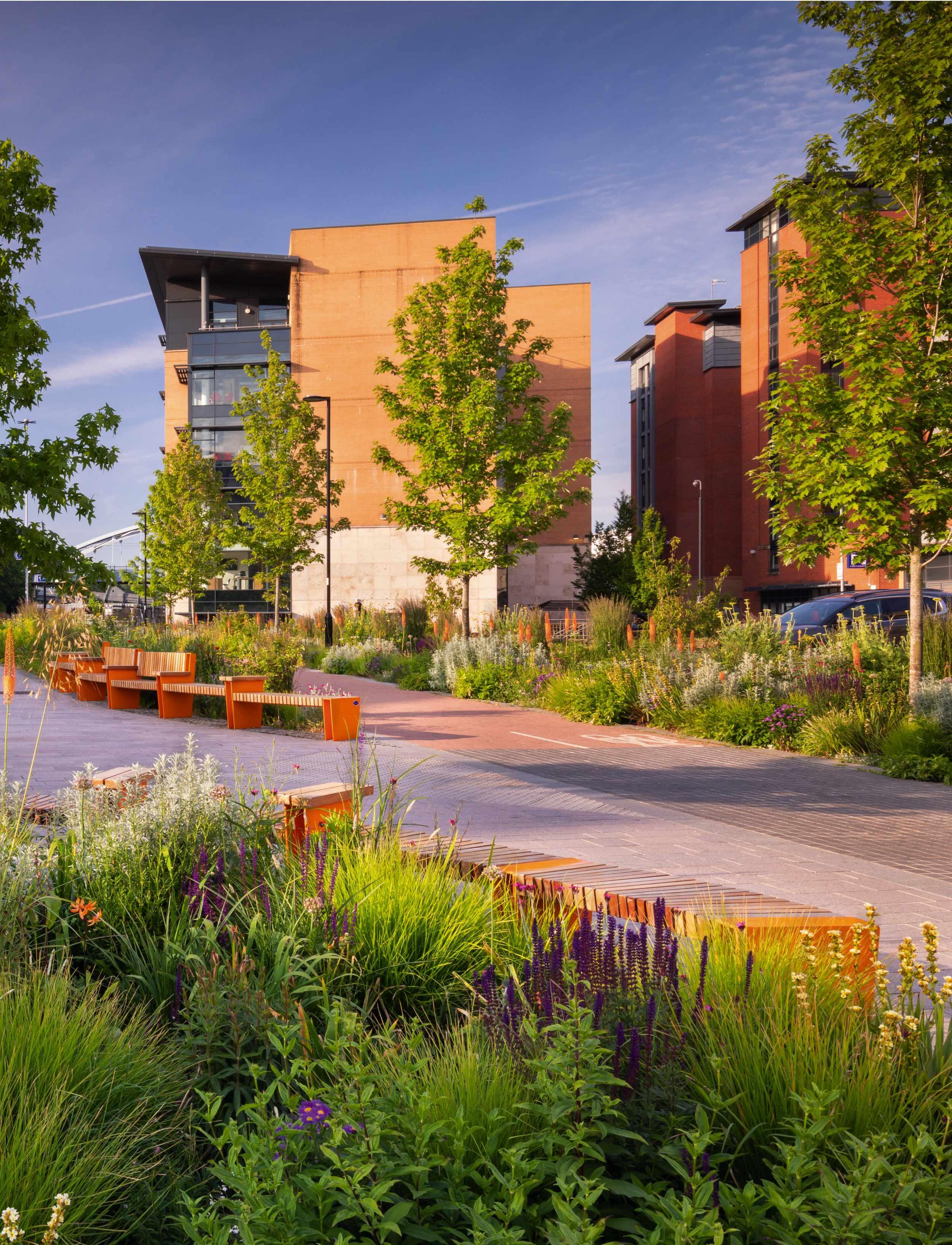
The urban planting in Sheffield city centre is astonishing. Everywhere you look there are beautiful examples of just how much can be achieved with a robust palette of well-chosen plants, and nowhere is this more apparent than in the Castlegate area of the city where the succinctly named Grey to Green project is helping to transform rundown streets into a flower-filled haven for humans and wildlife.
Until 2008 this area was filled with four lanes of traffic, but following the building of a new outer ring road, a new scheme with just two lanes and much reduced vehicle use (with associated dedicated cycle ways and pedestrian routes) was possible. The liberated space is now filled with a connected sequence of planted beds, rain gardens and bioswales, creating the UK’s longest ‘green street’, and largest retrofit urban sustainable drainage scheme.
The project was the brainchild of visionary Simon Ogden, who was then head of city centre regeneration. He developed the idea that a revolutionary landscape scheme could be part of the city’s response to the catastrophic Sheffield floods of 2007, when
the River Don, which runs through the city, burst its banks, causing two deaths and an estimated £1 billion worth of damage.
Simon approached Nigel Dunnett, evangelical exponent of naturalistic urban planting schemes and professor of planting design at the University of Sheffield, for help in developing the project. “Simon had seen the planting we did for the Queen Elizabeth Olympic Park in 2012, and thought that something similar should be tried in Sheffield,” says Nigel. “I worked very closely with Zac Tudor, then principal landscape architect for Sheffield City Council, to help develop feasibility ideas for the scheme, using two of my studio design modules with students to develop ideas and visuals that were subsequently used for consultation and fund-raising.”

Zac was responsible for the design and co-ordination of the whole complex multidisciplinary project, and Nigel collaborated on the planting design, contributing plant lists and planting suggestions.
In fact, the real genius of this scheme is that it works on so many different levels. Primarily, it is a sustainable drainage system (SUDS) that captures occasional extreme rainfall in free-draining temporary holding areas until it can naturally percolate back
Clumps of Calamagrostis x acutiflora ‘Karl Foerster’ create upright punctuation for a diverse multi-layered planting. Even though Nigel has included non natives, such as Sisyrinchium striatum and Eremurus x isabellinus ‘Cleopatra’, this provides a long flowering that generates incredible value for pollinators and other invertebrates.
into the surrounding ground. This relieves pressure on the urban network of drains and significantly reduces the risk of localised flooding. The tree layer contributes to urban cooling, and the linear nature of the scheme creates a continuous green wildlife corridor.
“But in addition to the environmental and visual benefits, this was a genuinely visionary move by Sheffield City Council to establish a very high-quality landscape scheme to create an attractive environment that would encourage businesses to move back into the area,” says Nigel.
And, of course, it is extremely beautiful. These planting schemes are positively gardenesque in their richness, diversity and impact. Small multi-stemmed trees and large shrubs provide a permanent structure that anchors a seasonally shifting mixture of surprisingly interesting perennials, ranging from the spring-flowering native Pulsatilla vulgaris and Primula veris, through spring and summer bulbs such as the spires of orange Eremurus x isabellinus ‘Cleopatra’, alliums and lilies, to an abundance of robust late daisies. A matrix of ornamental grasses contributes to the late-season display.
“People really respond to colourful naturalistic planting, and having dramatic
To continue turn to page 81
76 GARDENSILLUSTRATED.COM AUGUST 2022
�ese planting schemes are positively gardenesque in their richness, diversity and impact
16 KEY PLANTS
1 Erigeron ‘Dunkelste Aller’ An upright fleabane that has unusual deep violet-purple, ray-like flowers and eye-catching yellow centres.
1m x 50cm. RHS H6, USDA 2a-8b †
2 Phlomoides tuberosa Whorls of lilac-purple, hooded flowers are held on tall, dark-purple stems. The flowers fade well to provide interest and structure in winter. 1.5m x 50cm. RHS H5, USDA 6a-9b.
3 Achillea ‘Paprika’ Opening an orange-red, the flowers of ‘Paprika’ fade as they age to a more dusty orange. A good self-seeder in free-draining soil and important pollinator attractor.
1m x 50cm. AGM*. RHS H7, USDA 3a-8b.
4 Stipa gigantea Robust grass providing a long season of interest, particularly for its tall, arching, oat-like panicles that mature to a tawny gold. 2.5m x 1m. AGM. RHS H4, USDA 6a-9b.
5 Sisyrinchium striatum Good structural plant with strongly upright, lance-shaped leaves that give rise to tall stems carrying clusters of creamy-yellow flowers. Will self-seed.
1m x 50cm. RHS H4, USDA 5a-9b.
6 Salvia nemorosa ‘Caradonna’ Clump-forming member of the sage family with long-lasting display of deep-purple flower spikes. 50cm x 50cm. AGM. RHS H7, USDA 4a-8b.
7 Origanum ‘Rosenkuppel’ Low-growing perennial forming clumps with rounded leaves and clusters of deep-rose-coloured flowers, loved by insects. 60cm x 60cm. AGM. RHS H7.
8 Artemisia ludoviciana ‘Silver Queen’ Striking, slender, silver-grey leaves that act well as a foil to purples and pinks. Good as a groundcover plant and usefully drought tolerant. 1m x 1m. RHS H6.
16 key plants continues on page 78

1 2 4 5 6 7 8 3
16 KEY PLANTS
9 Gypsophila ‘Rosenschleier’ Low-mounded perennial with a starry veil of small, pale-pink double flowers. 50cm x 50cm. AGM. RHS H6.
10 Eremurus x isabellinus ‘Cleopatra’ Gorgeous foxtail lily bringing height and colour to a planting scheme. The densely flowered spikes start as tight buds in deep orange and open to give star-shaped flowers in a vibrant peach. 2.5m x 1m. RHS H6.
11 Kalimeris incisa ‘Charlotte’ Flowering over a long period from summer and into autumn, this Japanese aster produces a spray of daisy-like flowers with pale petals and bright-yellow centre.
1m x 50cm. RHS H7, USDA 5a-9b.
12 Calamagrostis x acutiflora ‘Karl Foerster’ A tall ornamental grass with clumps of arching leaves and upright stems of narrow panicles, fading to tawny brown in autumn and winter.
1.5m x 1m. AGM. RHS H6, USDA 5a-9b.
13 Kniphofia ‘Sunningdale Yellow’ A smaller red-hot poker with slender flowers in a rich yellow, flowering early from July through to October. 90cm x 50cm. AGM. RHS H5.

14 Lychnis chalcedonica Small, cross-shaped flowers in bright scarlet are held in a flat head on upright stems. A great flash of colour and good for pollinators. 1m x 50cm. AGM. RHS H7.
15 Acer tataricum subsp. ginnala Can be grown as a bushy shrub or small tree. Its distinctive three-lobed leaves turn deep red in autumn along with colourful seed keys. 8m x 8m. RHS H7, USDA 2a-8b.
16 Sesleria autumnalis Neat clumps of evergreen grass with narrow leaves in a yellowish green. 60m x 60m. AGM. RHS H7, USDA 5a-8b.
*Holds an Award of Garden Merit from the Royal Horticultural Society. †Hardiness ratings given where available.
9 10 12 13 14 15 16 11
Included among the planting are wooden totemlike structures, designed to create habitats for pollinators and other wildlife. The street furniture picks up on the striking burntorange spires of Eremurus x isabellinus ‘Cleopatra’.

AUGUST 2022 GARDENSILLUSTRATED.COM 79
In cities there seems to be an almost magnetic attraction to colourful, �ower-rich, yet natural planting
Cycleways allow riders to weave through the planting where the bright flowers of golden-yellow Achillea ‘Coronation Gold’ and stand-out red Lychnis chalcedonica help brighten the daily commute, and are particularly good inclusions for pollinators.
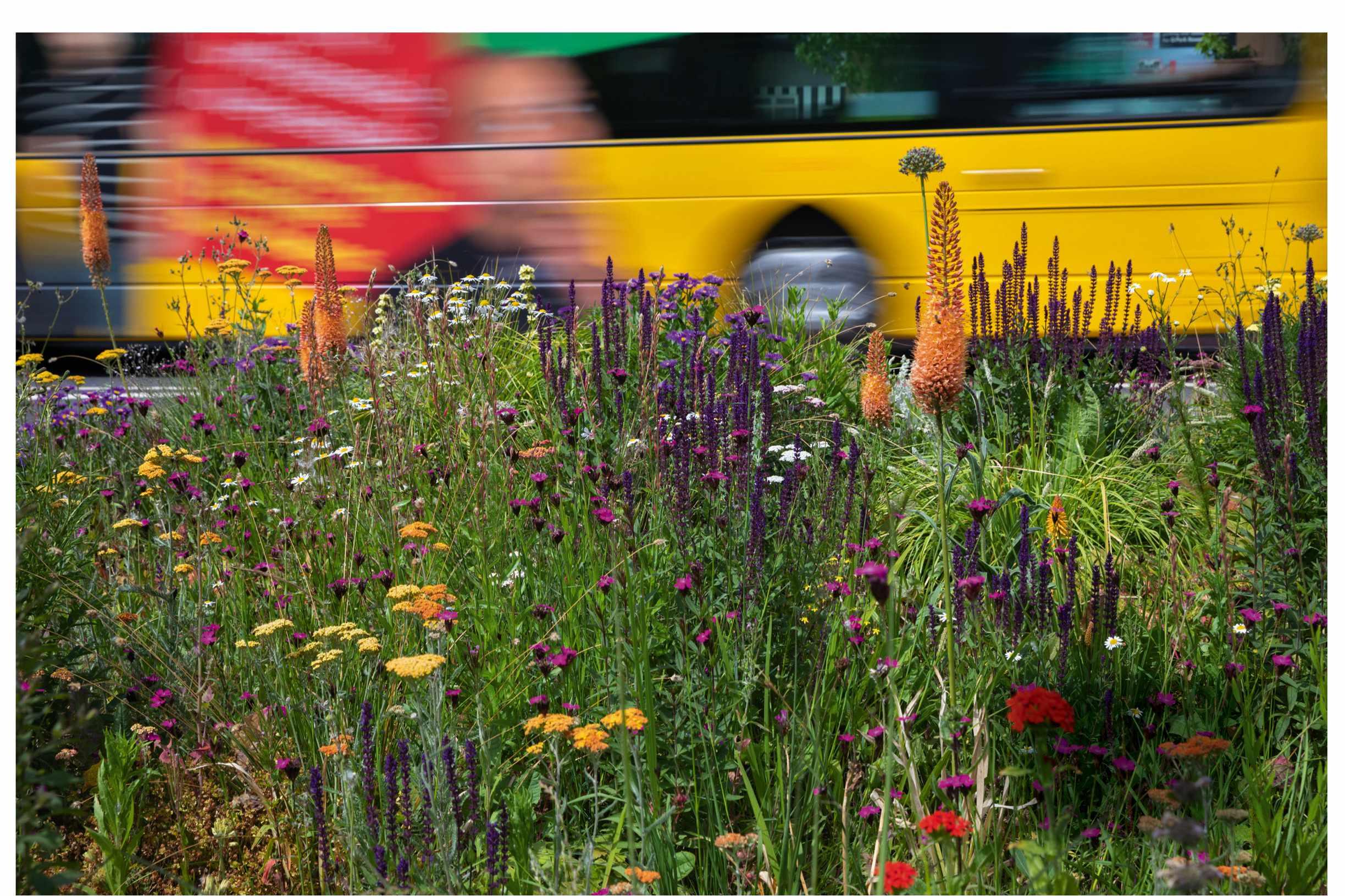
The plant mixtures include plants with a wide range of ecological tolerances from those that prefer wetter conditions to those that are happy when it’s very dry. This ensures that the schemes are resilient from season to season.

winter-green plants such as the New Zealand sedge, Carex secta, contributes to year-round appeal,” says Nigel. “In cities, where people can easily lose contact with the natural world, there seems to be an almost magnetic attraction to colourful, flower-rich, yet natural planting.”
It all looks rather expensive, but that is another surprising aspect of the project. “Replacing the conventional network of road drains and gulleys with beautiful ‘green infrastructure’ can be very cost-effective,” says Nigel. “The actual amount of maintenance required is relatively low, but it does need a different set of skills and knowledge to that needed for the usual type of urban planting.”
Nigel believes the plantings probably have ten years before they will need a wholesale revamp, but Sheffield City Council is now fully on board. The ethos is embedded, the concept is being rolled out around the city and that can only be good for the economy, good for people and good for the planet. n
USEFUL INFORMATION
Find out more about Sheffield’s Grey to Green project at greytogreen.org.uk
• Nigel’s Gardens Illustrated Masterclass: How to create long-season planting schemes is available at gardensillustrated.com
Long-season planting
“It is useful to think about the functional characteristics of the plants, and how they contribute to the visual impression through the year,” explains Nigel. “I start with ‘Anchor Plants’ – plants that give a strong structural or architectural character for much of the year. In the Grey to Green scheme, Carex secta, Stipa gigantea and Eupatorium cannabinum ‘Flore Pleno’ have this role, as well as multi-stem shrubs. Typically these are scattered at low density. ‘Satellite’ plants are those that don’t necessarily have a strong architectural character but which contribute the main visual character of the planting. Seasonal perennials, such as asters, irises, and many others come into this category and provide a long succession of flowering. A really important component are ‘filler plants’ –short-lived, self-seeding perennials that fill gaps early on, before the longer-term plants fill the space – Agastache, Lychnis coronaria, and Verbena bonariensis, for example. Finally, bulbs create intense, yet ephemeral, seasonal interest. Summer-flowering bulbs, such as alliums, lilies and eremurus, are a real feature of the Grey to Green plantings.”
Climate aware
At the time of construction, the Grey to Green scheme was the UK’s largest urban water-sensitive design project. Key to the project are bioswales – shallow depressions that act in the same way as rain gardens; collecting, slowing-down and cleaning surface water-runo�. They can fill up temporarily with water during heavy rainfall, but are not bog gardens because the water can drain away, either into the soil beneath, or into subsurface drains. In the Grey to Green scheme, the bioswales slope gently on each side to the central low point. Water flows into them from the road surface along their entire edge. In a garden setting, a good way to think of a bioswale is as a glorified ditch. “It’s important that the soil is free-draining and that the sides are not steep, so that there is ample space for planting and the slopes are not prone to erosion,” Nigel notes.

AUGUST 2022 GARDENSILLUSTRATED.COM 81
People really respond to colourful naturalistic planting, and having dramatic winter-green plants
One of the outstanding benefits of introducing the planting beds is the fact that 24,000 bathtubs’ worth of water is prevented from entering Sheffield’s sewage treatment works each year. The project has shown a 561 per cent increase in biodiversity.
TIJANA BLANUSA
The head of the RHS Ecosystem Services Research Programme, on identifying the plant traits that
wider environment
a hawthorn hedge
Have you ever wondered which species might make the most superior hedge or what the best street tree is? Not just look good but mitigate against flash flooding or incept the most particulate pollution?
Dr Tijana Blanusa has. She leads the Royal Horticultural Society’s Ecosystem Services Research Programme, which looks into the environmental benefits of gardens and green infrastructure. Her work is enabling us to understand the contribution plants make to our living environments. “It’s not just a tree in a city, it’s a cooling system,” she says. “It’s storing carbon, it’s reducing noise, improving air quality, increasing biodiversity. I am just fascinated by that, by how much a plant can do.”
Tijana grew up in Belgrade, Serbia, and spent a lot of time in her grandfather’s garden. “When he retired he bought a plot of land, and took up bee keeping and tending an orchard,” she says. “One day he said: ‘Look I pruned this tree and there’s a half-kilo apple.’ It was really the biggest apple I’d ever seen and then he said, ‘And here is a tree I haven’t pruned,’ and pointed to one with much smaller apples. That really fascinated me as a kid, how you can manipulate a tree.”
Her fascination prompted her to study agronomy and crops science at university followed by a master’s degree in plant physiology, before moving to the UK to begin a PhD on how much a cherry tree can sustain in fruit. Then in 2003 she saw that the RHS was looking for a horticultural scientist. “I knew straight way that it was my job.”
The role, which has occupied her ever since, was conceived as a way to further links between the RHS and the University of Reading, where she’s based. There she teaches green infrastructure and supervises numerous students from undergraduates to PhD students, but also works closely with the RHS advice team, and with architects, planners and builders to help inform better planting choices.
“I like very practical science and I’m a stickler for a simple, cheap solution,” she says. For example, climbers such as ivy are good as a green wall in terms of their insulation properties, but can damage the building, which is why one of her students has looked into using anti-graffiti paint as a cheap solution to prevent ivy from attaching to a building. But the projects she’s worked on span everything from optimising water use in container-grown bedding plants to houseplants and their effect on our wellbeing and how we incorporate green infrastructure into our living environment.
“When I did my first project on a green façade, I really had to justify why I was doing it, there were so few references. But the understanding has grown exponentially from then. There’s a real understanding that we need to incorporate plants into our urban planning and architecture,” she says. “Of course, gardeners understand this, but we need to expand that out into policy work. I mean people are putting in plastic lawns and plastic hedges!”
She knows there is much more to do and many more areas to look into. She’s curious about urban food production and wants to investigate the genuine impact of growing your own. “What’s the nutritional value, how much do you really have to grow to make an impact?” she asks. “Plus, there’s more work to do on green infrastructure, we understand a lot about what does and doesn’t work on a species level, but we need to look into planting mixes rather than monocultures; can we enhance the overall potential of a garden with the right mix? It’s so important to understand the details.”
Even so her research is already making a difference. “I’m humbled that the science I do has a practical impact. When someone comes up to me at a conference and says: ‘I saw one of your papers and we tried it out in our garden,’ then I’m very happy that I get to push our science forward.”
And if you’re still wondering what is the best hedge for reducing flooding, that would be hawthorn. It takes up a lot of water while in growth, and then transpires it, increasing the soil’s capacity to receive subsequent rainfall that could otherwise end up in drains. “When it’s physiologically active that plant just pumps up water. But it’s deciduous, so in the winter it’s not providing as much of a service, which is why we’re experimenting with the very best mix,” says Tijana. “Also Thuja plicata; it has the most amazing canopy storage, it holds on to the rain and funnels it down into the soil over a long period, so it’s really good for sandy soils. Canopy storage of water in constant drizzle can make a real difference.”
Her own garden, she admits, is an unplanned jumble of left-over plants from experiments – “I’m a plant scientist not a gardener” – but she does at least have a hedge. “It’s the only one left in the street. It looks lovely, I do very little other than cut it once a year.” Thanks to Tijana’s research we know that hedge is doing an awful lot of work. n
USEFUL INFORMATION
Find out more about the RHS’s science research at rhs.org.uk/science
THERE’S A REAL UNDERSTANDING THAT WE NEED TO INCORPORATE PLANTS INTO OUR URBAN PLANNING AND ARCHITECTURE
HORTICULTURAL WHO’S WHO
can benefit the
and why you really need to plant
WORDS ALYS FOWLER PORTRAIT JASON INGRAM
82 GARDENSILLUSTRATED.COM AUGUST 2022

IN BRIEF
What A coastal garden almost exclusively comprising ornamental grasses. Where West Sussex.
Size A little over an acre. Soil Chalky loam.
Climate Coastal; sunny and windy. Hardiness zone USDA 9.
Motion picture
Sophie Walker’s assured design for a coastal garden in the south of England is a skilfully choreographed blend of ornamental grasses that form a fluid and soothing patchwork of colour and movement
 WORDS MATT COLLINS PHOTOGRAPHS BENNET SMITH
WORDS MATT COLLINS PHOTOGRAPHS BENNET SMITH
Visiting this sanctuary of a garden on the Sussex coast, designer Sophie Walker’s bold yet self-restrained design comes as something of a surprise. After crossing a short lawn, you round the house, expecting to find perhaps some robust perennials, maybe a few escapee hollyhocks and a gentle sweep towards the shoreline. Instead you are met by a broad succession of contrasting grasses and a gravel pathway that beckons you in.
Lifting from the acre-deep grassland scheme are architectural specimen trees: gingko, cherry, Acer davidii and the arrow-leafed Acer capillipes; a lush, green Parrotia persica and what appears to be a large and wild willow towards the back. The path leads you there; you are compelled to follow it for there is no other way forward. “The garden is not automatically revealing, like a lawn with borders,” says Sophie. “This is much more like pushing you through a passage. You actually have to make your way through it, and by doing that you find different vistas and viewpoints.” Indeed, as you walk, you sense a narrative unfolding.
Sophie describes this garden as intentionally restful on the eye – a space where the clear lines of a pathway are the only hard lines of the garden. However, greatly


Above left Grasses are brought alive by sunlight. In the foreground the reddened florets of Calamagrostis brachytricha bring colour to the scheme while creating a soft foil for a multi-stemmed snake bark maple (Acer capillipes). Besides the grasses, differing height levels are achieved through stout shrubs, such as cornus and hazel, and taller trees including a prominent Ginkgo biloba beside the house.
Above Silver-grey granite gravel has been used for the paths, contrasting brightly with the muted tones of the grasses while retaining the natural feel. “I love how smart it looks,” says Sophie. “In cloudy weather it seems lighter and in bright weather it doesn’t seem too white.”
AUGUST 2022 GARDENSILLUSTRATED.COM 85
Above Contrast is an essential feature of a garden dedicated to grasses. While putting plants together in this scheme, Sophie aimed to create a patchwork, whereby 1m x 1.5m “groupings” were interspersed and repeated without ever becoming repetitive. In this way, opposing colours – from blue-green and yellow to heavier ochres – bring a liveliness to the overall garden.

influenced by Japanese garden design, there is also an element of control to her scheme; the journey you are taken on provokes a bodily response. “The way the Japanese make gardens is almost as a piece of choreography,” says Sophie. “You have to move through the garden in a particular way because of how the paving has been orchestrated, or because you have to pass through an arch or gateway. Because of that you’re constantly having to address the way your body presents to the garden space and how you then experience the garden.”
Choreography is a good word to describe a garden conceived to reflect motion. “The client has a strong interest in ballet,” says Sophie. “The first thing they said to me was that they wanted something that moved.” A garden of grasses came directly to mind. “It was actually one of the more obvious, more radical, just instantly clear things to do. The idea immediately went down well, which was great from my perspective – being trusted with doing something quite so bold.”
Implementing a scheme almost exclusively comprising ornamental grasses was for Sophie something tried and tested. Her first project after studying garden design was a garden in west London – a “field-like” space attached to an old cottage, with an emphasis on seedheads and autumn colour. In that garden, a raised,
86 GARDENSILLUSTRATED.COM AUGUST 2022
How to design with grasses
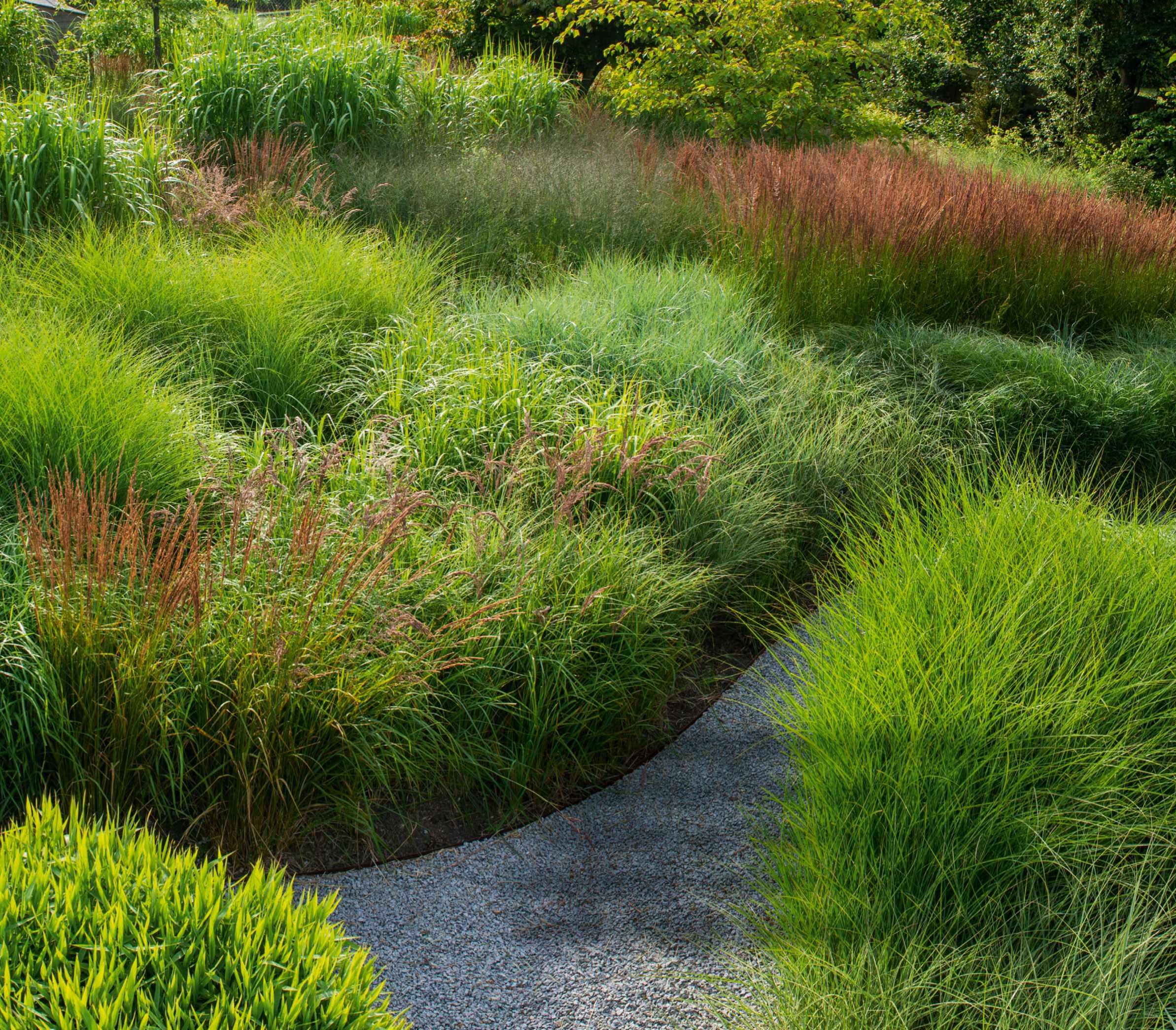
Grasses planted en masse lend well to a naturalistic style of garden. Achieving a sense of structural dynamism within such a scheme, however, requires skill. Using a palette of more than 30 di�erent cultivars sourced from the Netherlands and from Knoll Gardens in Dorset, Sophie began by dividing the grasses into categories of height and colour, before approaching the overall layout. “I did everything in clusters – individual plants grouped to form what would appear as single volumes,” she explains. “I made sure that no ‘blob’ was too large or overwhelming, and that the scheme was really as layered and complex as it could be without losing emphasis of a particular group.”
Another key element in the process was ensuring a steady progression of height. “Because you see everything from the paths, or from above when you’re in the house,” says Sophie. “I always worked to the centre of the bed, building up the planting from both sides, and ensuring that the height escalates towards the middle.” The lofty plumes of Miscanthus and Calamagrostis, for example, o�er a higher central tier.
In addition, Sophie underlines the importance of avoiding too much repetition of colour. Ideally, she says the aim should be to create “a sense of a patchwork, almost”.
�ere is a freedom in not having too many hard lines and in creating a landscape that feels almost completely restful; it’s peaceful to watch things constantly moving
Plant details
1
1.5m
2 Calamagrostis x acutiflora ‘Karl Foerster’
Yellow-ochre is an essential of the ornamental grass palette, amply provided by this hardy reed grass. 1.8m x 50cm. AGM. RHS H6, USDA 5a-9b.
3 Miscanthus sinensis ‘Morning Light’ Erect yet compact, with pinkish autumn flowers. The fine leaves are delicately arched and streaked with white. 1.5m x 1m. AGM. RHS H6, USDA 6b-7a.
4 Deschampsia cespitosa ‘Goldtau’ Bears long-lasting, voluminous yet airy flower plumes that rise above deep-green leaves.
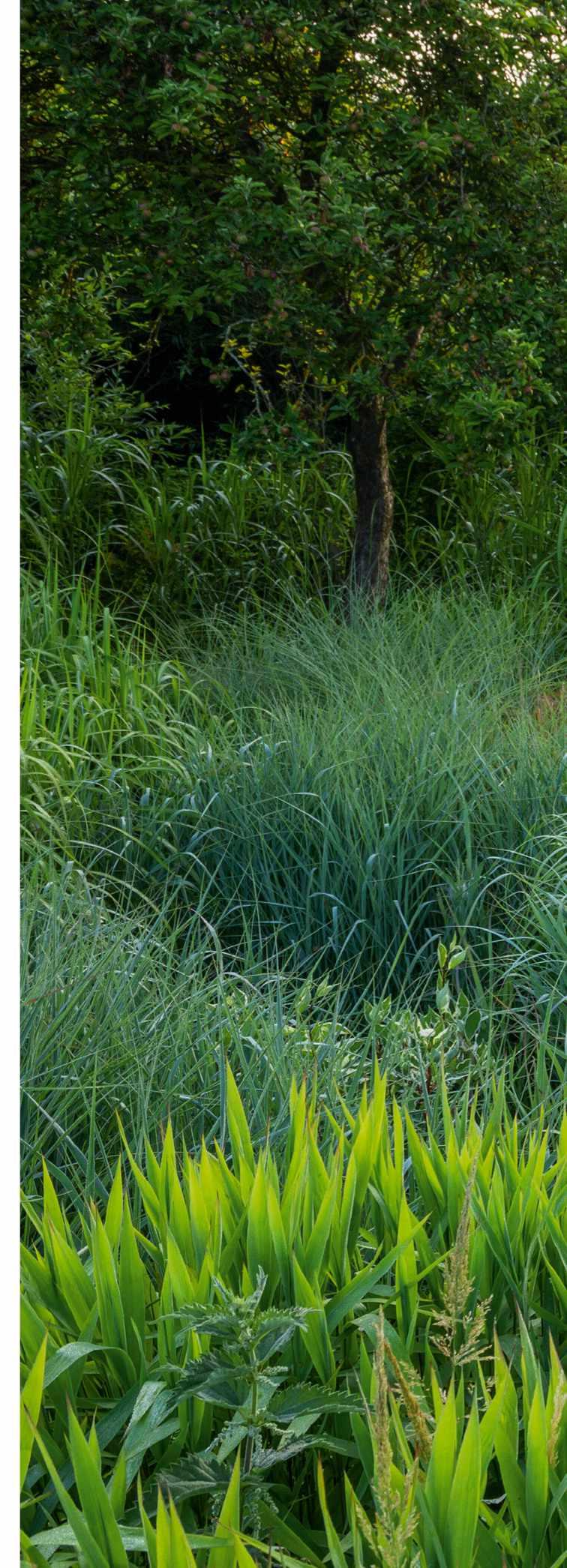
75cm x 75cm. AGM. RHS H5, USDA 4a-9b.
aluminium-edged path navigated geometric blocks of differing grasses, from featherflowered pennisetums to tall, architectural reed grasses (Calamagrostis).
For this coastal commission, Sophie drew on the success of this scheme. “It was just the freedom of not having too many hard lines anywhere, and of creating a landscape that felt somehow almost completely restful; if things are constantly moving, which they are in both gardens, it’s just so peaceful to watch it blowing in the wind. Being near the coast, where migratory birdlife is common, you’d also hope to be able to provide for birds, and grasses just feel like a great choice.” Birdsong was palpably and pleasantly abundant as I navigated through the richly textured planting.
To make such a concentrated planting palette like this feel impactful, the range of grasses needed to be both dynamic and contrasting. Sophie’s plant list therefore includes a great variety of genera, from airy Sesleria and Deschampsia cultivars to fountain-like clumps of Panicum and Stipa. Colour, too, was of course crucial –the maroon-tinged gold of Briza media ‘Limouzi’, for example, and the pinkpurple effect of Miscanthus sinensis ‘Kleine Fontäne’.
As such, to follow the footpath – a slim, neatly presented ribbon of silvergrey granite-based gravel – is to be reminded of the great diversity of grasses in
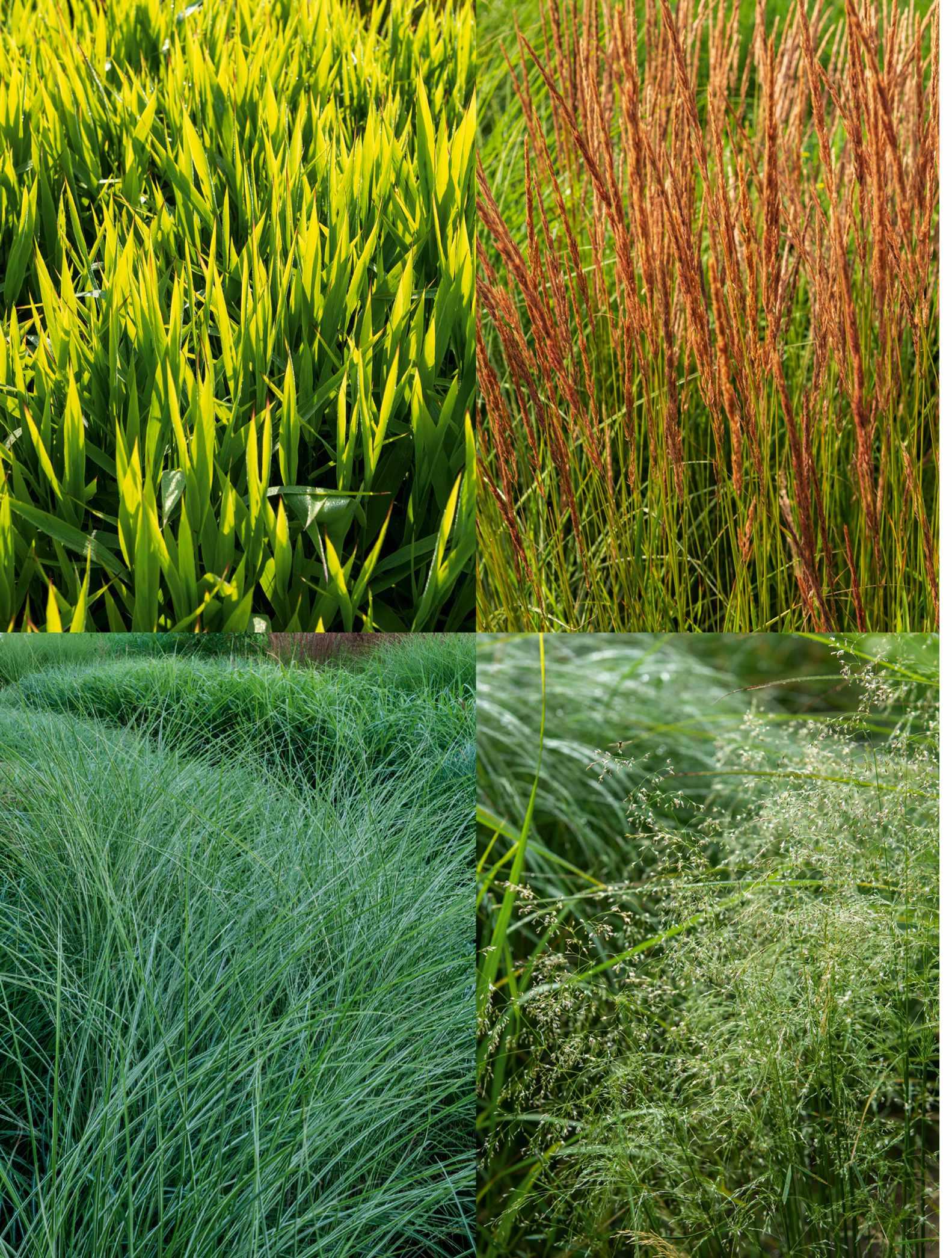
*Holds an
† Hardiness
where available. 1 2 4 3
Award of Garden Merit from the Royal Horticultural Society.
ratings given
Panicum virgatum ‘Northwind’ In full sun, gives great seasonal interest, its initial glaucous-green sheen becoming a rich orange-yellow by autumn.
x 1m. AGM*. RHS H5, USDA 5a-9b†
horticultural cultivation and their surprising individuality of form. As sunlight falls upon certain spots it reveals the tufted, ochre florets of Deschampsia cespitosa ‘Schottland’, the glaucous sheen of Miscanthus sinensis ‘Morning Light’, or the delicate, almost sparkling sprays of Briza media seedheads.
And while new vistas are revealed around each corner, so too, rather cleverly, are practical break-out spots: an area of secluded seating; a trampoline for the children; and towards the back, in the shade of a retained mature white poplar, a tennis court, its sides festooned with a screen of Virginia creeper.
Close to the house, meanwhile, weather-softened boards and cement-rendered walls provide a calming and open terrace area from which to take in this spectacular grassland oasis, which will remain standing throughout winter for the seedheads, offering year-round interest. And then there’s the ease of it all: “Grasses are super low key,” says Sophie. “They’re just strimmed off in February, clippings are left on the ground as mulch, and that’s it.” n
USEFUL INFORMATION
Find out more about Sophie’s work at sophiewalkerstudio.com
Above Close to the sea, the garden is exposed to a good deal of wind, which is captured beautifully in the movement of lighter varieties of grasses such as Miscanthus sinensis ‘Kleine Fontäne’ and Panicum virgatum ‘Prairie Sky’. Mature trees meanwhile ensure a level of protection and enclosure for the space as a whole.

AUGUST 2022 GARDENSILLUSTRATED.COM 89
�e garden is not automatically revealing, like a lawn with borders. You actually have to make your way through it to �nd di�erent vistas and viewpoints
Nature and nurture
The inspirational garden of landscape designer Kathleen Murphy is a test bed for planting ideas, and a lesson in creating a sustainable family space that is lived in and loved
 WORDS ALI HEATH PHOTOGRAPHS MARNIE HAWSON
WORDS ALI HEATH PHOTOGRAPHS MARNIE HAWSON
IN BRIEF
What Sustainable family garden that acts as a testbed for its designer owner. Where Victoria, Australia.

Size Just under two acres.
Soil Heavy volcanic black clay.
Climate From 40ºC in summer, to -5ºC with frosts in winter.
Hardiness zone USDA 10.
With more than 14 years of honing her craft in landscape garden design, Australian-born expert Kathleen Murphy understands how both the surrounding vernacular and a client’s individual interior style play a vital role in shaping the creative process behind each of her garden designs. Clients are drawn to her personal touch and magical ability to transform a space into something special, as if it has always belonged.
“For me it is important to integrate the prevailing landscape into the look and feel of any outdoor space I create. I take time to get to know my clients – to understand how they use their homes and what is important to them. Gardens should be lived in and enjoyed; it is never just about the aesthetic.”

Having moved to their family home 14 years ago, Kathleen and her husband had been busy juggling work and raising their three children, while Kathleen organically established her landscape design business, working temporarily from the children’s playroom. The property, a 1980s’ country ranch-style house, is set in just under two acres, and at the front Kathleen inherited an established, English-inspired garden from the previous owners. At the rear, the backyard was a blank canvas, and in 2017 Kathleen gave herself the space to
Facing page Agave americana underplanted with seascape (Lomandra confertifolia). Below The striking, northeast-facing timber and glass studio space is clad in fire-resistant Australian hardwood, silvertop ash. Commercial-scale, floor-to-ceiling glazing brings the outside in, creating a motivating space from which to design. Plants in the foreground include satin flower (Sisyrinchium striatum) and seascape (Lomandra confertifolia). Trees include the common olive (Olea europaea) and Acer platanoides ‘Crimson Sentry’.
AUGUST 2022 GARDENSILLUSTRATED.COM 91
Below In the foreground, plants native to Madeira include the very hardy and frost-tolerant Teucrium betonicum which enjoys a crop of light-purple flower spikes. To complement, groundcover with similar colour tones includes Verbena rigida Planted around the bridge is a variety of Lomandra and Dianella species.
Far right The deck is made from sustainably sourced Merbau timber, and is framed with the large, strappy Carex appressa. The trees in the background are multi-stemmed Eucalyptus forresterae ‘Little Star’.
rethink it – creating a dedicated studio for her business and three-person design team, and an inspirational family garden.
In winter, the north-facing garden is shrouded in early-morning mists, and low cloud conceals distant mountain peaks; but by late morning the frosty starts break into crisp, bright days. Kathleen’s approach to the design of her own garden followed the same principles she applies with clients. Her husband, Rob, and three children, aged from 13 to 16, were encouraged to share ideas, to ensure the garden matched their individual needs and wants: space for the kids to kick a ball around and ride bikes, and defined zones for a billabong, grotto and firepit. “It’s a place for me to experiment with new ideas for work, and a space for us as a family to unwind, relax, explore, and feel connected to nature. This has been life-changing in terms of its effect on my creativity.”

The design frames the amazing view of the surrounding Macedon Ranges, and mirrors the contours of the landscape, with raised earth mounds facilitating drainage in the nutritious, but heavy, clay soil. “I always consider the view from every window in the house, and like to draw the eye out to something special in the garden.” It’s no surprise, then, that a growing group of architects involve Kathleen early in the design phase of projects, as her ability to connect the exterior and interior is so intuitive.
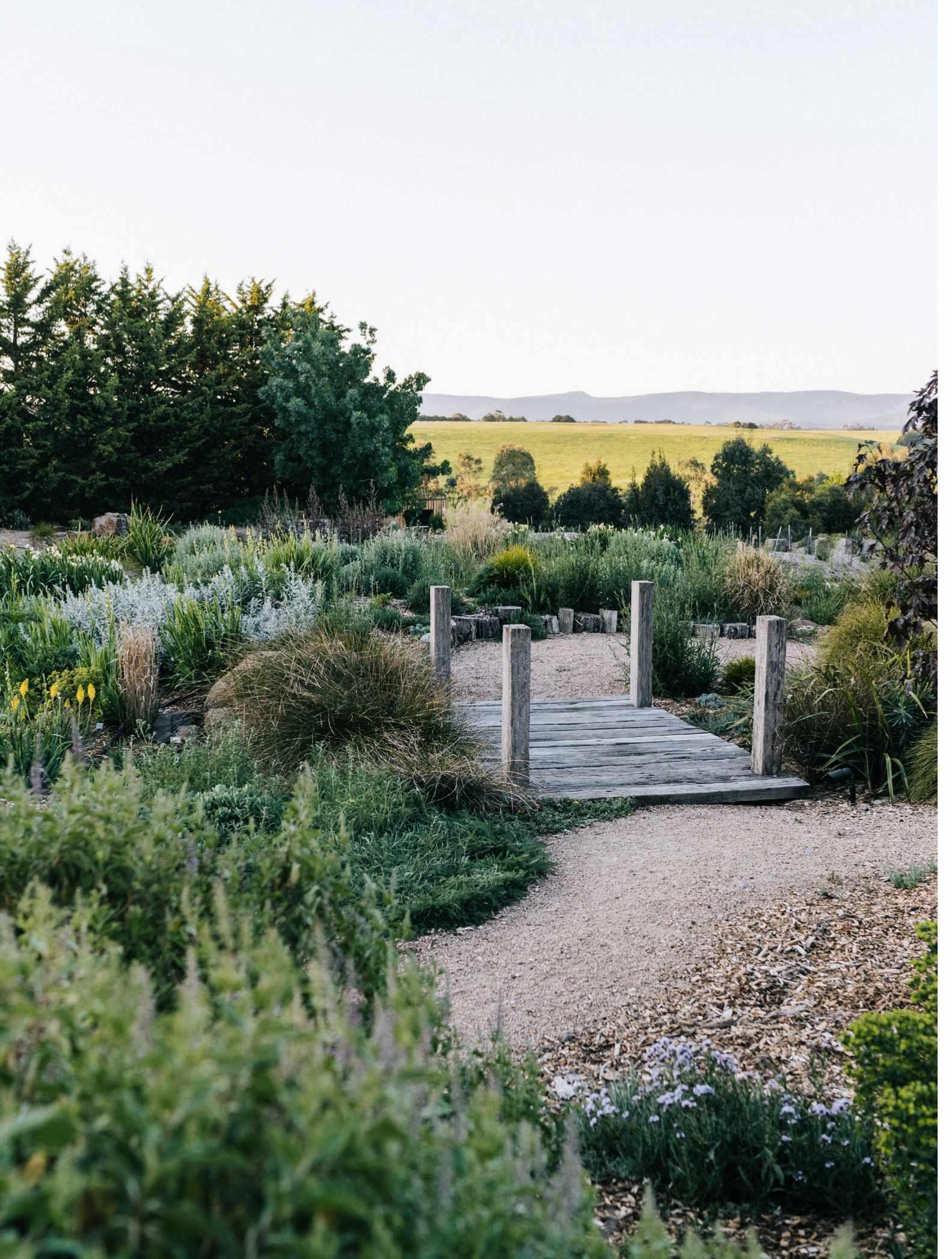
1 3
Water in a garden
Australia is experiencing a change in its weather and enduring longer, drier periods throughout the year. Rather than simply gathering water in bulky water butts, in her garden Kathleen makes use of new techniques for collecting, using and saving water in a more aesthetically pleasing way. As part of the garden redesign, she installed an underground wastewatertreatment system that links to the house and studio. In Australia, all new residential housing developments with more than an acre of land are required to have a watertreatment system that involves taking the wastewater from toilets and household use into an at-home, mini-treatment plant where the water is recycled for garden purposes. With water a scarce commodity, the garden also benefits from an irrigation system that feeds the garden in part from the billabong. Water is also collected from rooftops, which is standard practice in Australia, with the government even giving homeowners a rebate on the cost of installing a water tank. A similar system could be used in the UK, where, instead of using a water butt, collected water could be fed discreetly into a more attractive, open, ornamental pond or small water feature using a pump system connected to a tap. Plant choices in Kathleen’s garden are also drought tolerant, as it would be impossible to irrigate the full garden area.

PLANT DETAILS

1 Sisyrinchium striatum The yellow satin flower has sti�, upright stems carrying clusters of starry, pale-yellow flowers along their length. 80cm x 25cm. RHS H4, USDA 5a-9b†
2 Enchylaena tomentosa Low-growing native Australian sub-shrub known as ruby saltbush. Very drought-tolerant with small, edible, red berries. 1m x 1.5m.
3 Cotula lineariloba Mat-forming groundcover with mounds of silvery foliage and solitary, yellow, button-like flowerheads on long, wiry stems. 30cm x 15cm. USDA 9a-10b.
4 Beschorneria yuccoides Arching racemes of yellow-green tubular flowers with showy, pinkish-red bracts above fleshy, grey-green leaves. A favourite of Kathleen’s. 1.5m x 1.8m. AGM*. RHS H3.
AUGUST 2022 GARDENSILLUSTRATED.COM 93 2 4
*Holds an Award of Garden Merit from the Royal Horticultural Society. † Hardiness ratings given where available.
Below Kathleen has created a billabong that runs through the garden and is a favourite spot for all the family to relax. Billabong is an Aboriginal term for a pool of water left behind from a river after it has altered its course. This one has been artificially created and is lined with clay. Large basalt boulders have been sawn to create stepping stones across the billabong. These were sourced nearby, left over from farmers clearing paddocks to grow crops. Aquatic plants include Australian natives, such as milfoil (Myriophyllum cripatum) nardoo (Marsilea drummondii), which oxygenate the water for the three eastern long-necked tortoises and native fish.
Kathleen grew up in Australia, but after finishing university she moved to Dublin to work for Enterprise Ireland, which was next door to the National Botanic Gardens of Ireland. Her many visits to the gardens inspired a gardening hobby, which turned into a passion and before she moved back to Australia with Rob she had retrained for a career horticulture.
“Throughout our garden, planting is intentionally hardy as we have extremes of weather, ranging from 40-degree heat to harsh frosts. I like to layer structural Australian natives, such as long, grass-like Lomandra, with succulents and Westringia, along with more exotic Mediterranean and textural Californian foliage. Pathways are lined with olive and gum trees and medicinal herbs, and tall masses of sticky boobialla (Myoporum viscosum) screen boundaries. Seasonal colour is important to me, and I use the garden as a test bed for client projects – if plants don’t survive, they are not replanted. I love pops of seasonal colour – sedum for burnt-orange autumn accents, and Verbena bonariensis, Salvia nemorosa for their purple tones, which work well with our yearround palette of soft muted greys, greens and blues.”
As part of Kathleen’s inherent focus on sustainability, discarded soil, basalt rocks and materials from client projects and local building sites have been repurposed in her own garden – and form the basis of the earth mounds that create sculptural interest throughout. “I grew up on a dairy farm so a desire to keep costs down, repurpose and

nurture the environment is part of who I am.” Preferred suppliers are locally based, and Kathleen actively supports her local guild of skilled craftspeople, who make limitededition bird baths and Corten steel firepits to her designs.
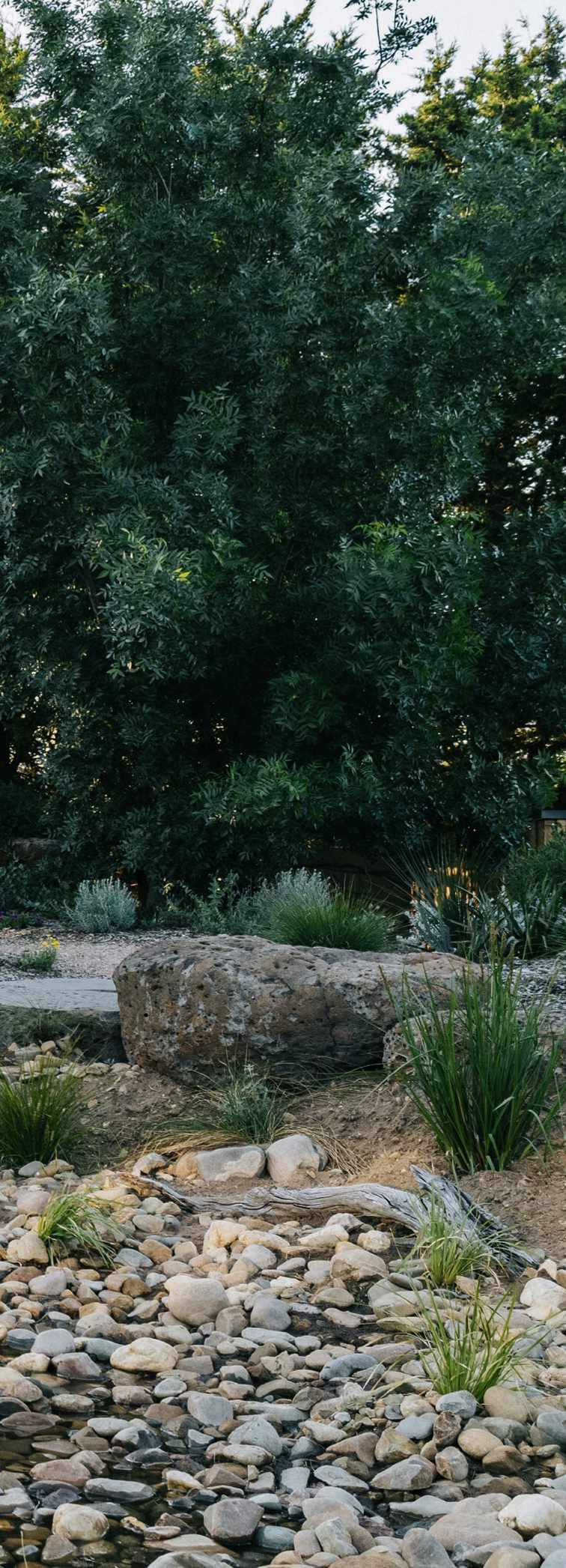
The billabong, Kathleen’s favourite part of the garden, was also the most challenging part of the design, as it involved heavy machinery having to come through the land. Lined with a clay liner and aquatic plants, it is a wonderful self-cleaning feature that provides water for irrigation, and a cool, natural pool for the family to swim in. It has also encouraged an abundance of wildlife into the garden – providing a home for fish, reptiles, dragonflies, butterflies, birds (rosellas, blue wrens, and a family of Australian magpies), insects and bees. “We have three beehives and I’ve noticed the dramatic increase in pollination. I love sitting here observing all the activity, it feeds my creativity,” says Kathleen.
Going forward Kathleen is planning to take garden tours and run workshops as an extension to her design business. “Connecting with nature keeps me grounded and there is a strong spiritual and meditative side to our garden. As a family it helps us all unwind and feel rejuvenated, and being able to share this with others feels very rewarding.” n
USEFUL INFORMATION
Find out more about Kathleen’s work at kmldesign.com.au
Below A forged steel frame creates the entrance to this rock enclosure – a contemporary take on a traditional European grotto. It creates a sense of place and provides an opportunity to remember former family members who have passed, with photographs, candles and a Celtic cross honouring their memory. The native groundcover Carpobrotus glaucescens creeps over the rocks, with the branches of the desert ash (Fraxinus angustifolia subsp. oxycarpa) providing a shady nook in the garden.

AUGUST 2022 GARDENSILLUSTRATED.COM 95

�
ROMAN GARDENS
Landscape designers Urquhart & Hunt, winners of Best in Show for their rewilding garden at this year’s RHS Chelsea Flower Show, have created the gardens around a reimagined fourth-century Roman villa at The Newt in Somerset. Using plants and trees found in contemporaneous British Roman sites, or documented in paintings and writings, the designers have incorporated a pergola moon garden dedicated to the goddess Luna, a fishpond, a flower meadow, an orchard, medicinal and kitchen gardens and a topiary garden. urquharthunt.com; thenewtinsomerset.com

Design
AUGUST 2022 GARDENSILLUSTRATED.COM 97 News and sourcebook
DAVE WATTS
News
COMPILED BY ANNIE GATTI
HEALING POWERS
As part of the RHS Healing Gardens programme, award-winning designer Adam Frost has designed a flowing space for staff and patients at London’s University Hospital Lewisham. The garden, which opened earlier this summer, features a winding walkway along the River Ravensbourne leading into a woodland patch where wildflowers have been planted under the trees. Benches encourage visitors to stop and reflect. An area of raised beds provides opportunities for staff and the local community to grow plants, and training will be given so that staff and volunteers can look after the garden in the future. rhs.org.uk
STRIVING FOR PERFECTION
The 2022 International Garden Festival at Domaine de Chaumontsur-Loire, France, features 24 show gardens on the theme of the Ideal Garden. The Garden of Reciprocity by US landscape architects RIOS won the prize for design for its reflection on the essential relationship between humans and nature, using mirrors and water to underline this symbiosis. French entry Ma Maison est un Jardin, designed by garden landscape company Passion Jardin as a romantic, planted house open to the elements (pictured above), won the prize for planting. Until 6 November; domaine-chaumont.fr
URBAN FOREST IN MADRID
Design studio West 8 has won an international competition to create a new Central Park for Madrid Nuevo Norte. The design, which is centred on sustainability and innovation, incorporates rain gardens, a meadow and a large lawn, with spaces for kiosks, terraces, pavilions and sport. The middle of the 35-acre urban forest will be a vegetation-clad spiral that will capture high breezes and create a cool space that will become the main meeting point. A series of flowing lines through the park will mirror the train tracks that crossed the original site. west8.com
GREENING UP CANARY WHARF
Eden Project and Canary Wharf
Group are working with Glenn Howells Architects to make London’s Canary Wharf a greener, more biodiverse space. The plan will bring people closer to the water through interventions such as floating pontoons, bridges and boardwalks and will introduce new planting areas, parks and gardens. There will also be new spaces for arts and culture, and opportunities for water sports. The aim is to create a global example of best practice and innovation in biodiversity in an urban environment. group.canarywharf.com; glennhowells.co.uk

98 GARDENSILLUSTRATED.COM AUGUST 2022
1 2 3 4 4 1 2 3




www.btrddesign.com | info@btrddesign.com | 074 54 711 057 01270 753826 info@whitecottage.co.uk www.whitecottage.co.uk Designed to optimise your growing space and built to last a generation. Our combination of painted Accoya, the timber industry leader in sustainability and performance, with a maintenance-free aluminium roof, gives peace of mind on all fronts. Minimise your impact on the environment Approved manufacturer

O Visit buysubscriptions.com/HSH22 O Or call 0330 135 8961† and quote HSH22 SIMPLE WAYS TO ORDER INSPIRING IDEAS AMAZING PRICES when you subscribe to today OFFER ENDS 31st December 2022 *3 issues for £5 o�er only is only available to UK residents paying by Direct Debit. After your �rst 3 issues your subscription will continue at £10.75 every 6 issues. If you cancel within 2 weeks of receiving your second issue you will pay no more than £5. Your subscription will start with the next available issue. †UK calls will cost the same as other standard fixed line numbers (starting 01 or 02) and are included as part of any inclusive or free minutes allowances (if offered by your phone tariff. Outside of free call packages call charges from mobile phones will cost between 3p and 55p per minute. Lines are open Mon to Fri 8am – 6pm and Sat 9am – 1pm. FIRST 3 ISSUES FOR ONLY £5 * Inside every issue of HomeStyle... O Stunning real homes with ideas to steal O Top decorating trends, tips and tricks O Best buys for luxe looks on a budget O Stylish makes and easy upcycles O Delicious recipes to make in minutes O Fantastic prizes, discounts and more! SPECIAL INTRODUCTORY OFFER
5 MANCHESTER’S NEW EDEN
Europe’s largest green wall, consisting of some 350,000 individual plants, will cover the façade of Eden, a 12-storey office building, which is being constructed on Passivhaus principles at New Bailey, Manchester. Thirty-two plant species grown by ANS Global, including geraniums, heucheras, rosemary, thyme and sarcococcas, have been selected for biodiversity, support of pollinators, reduction of air pollution and year-round interest. Rainwater harvesting will be used for the green wall. A mini version of the wall is on display at the construction site. Eden is expected to be completed in May 2023. new-bailey.com

TO PUBLIC PARK
Charlotte Harris and Hugo Bugg’s 2021 RHS Chelsea Gold medal-winning pocket park garden is to be relocated and reconfigured in the area between Blackfriars Road and Tate Modern in Southwark, south London. The Roots in the Sky Garden, which will create a green spine down the pedestrianised Price’s Street, will include a sculpture of more than 100 linear metres of metal pipes and will reassemble, in a series of raised beds, all the plants from the original garden. Subject to planning permission, the park should be open in spring 2023. harrisbugg.com
DESIGN
6 FROM CHELSEA SHOW GARDEN
AUGUST 2022 GARDENSILLUSTRATED.COM 101
SOURCEBOOK
Raised planters
Bring your growing to the next level with a selection of planters
COMPILED BY MOLLY BLAIR
VEG PATCH
Harrod Superior Metal Raised Beds, anthracite grey, from £135, Harrod Horticultural, 0333 400 1500, harrodhorticultural.com


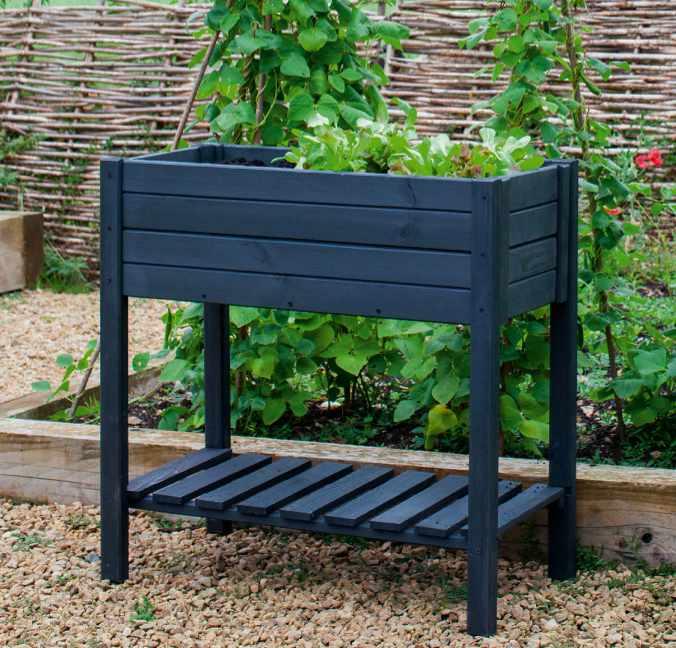

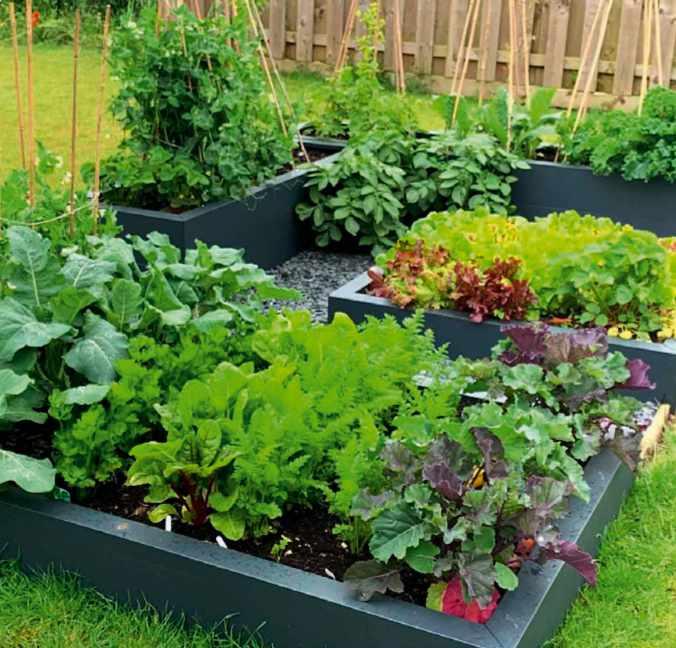
VINTAGE LOOK
Original Veggie Bed, from £99.99, Thompson & Morgan, 0844 573 1818, thompson-morgan.com
RAISE YOU ONE
Latchmere Raised Planter, £130, Garden Trading, 01993 845559, gardentrading.co.uk
SPACE TO GROW
Deep Root Planter, 1.8m, £169.99, Zest 4 Leisure, 01352 752555, zestoutdoorliving.co.uk
LEVELLING UP
Forest Garden Caledonian Tiered Raised Beds, £185, Wilko, 0800 032 9329, wilko.com

RUSTIC ROUNDS
Corten Steel Round Planter, from £495, Parker & Coop, 01932 850140, parkerandcoop.com


TOP TIER
Vigoroot Balcony Garden, £115, Agriframes, 0117 934 1790, agriframes.co.uk
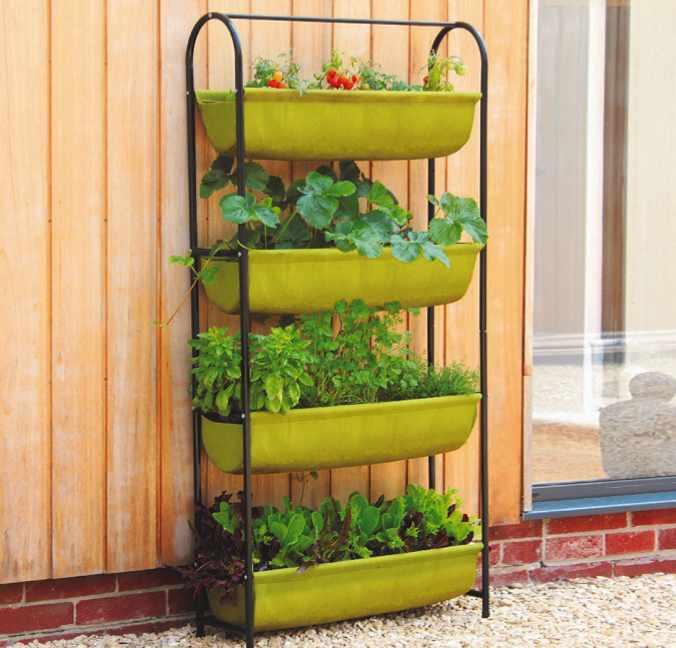
SCANDI
Combine Planter, rectangular with base, £585, Cane-line, +45 (0)6615 4560, cane-line.co.uk
USER-FRIENDLY
Classic VegTrug, £159.99, Vegtrug, 01206 230025, vegtrug.com
102 GARDENSILLUSTRATED.COM AUGUST 2022
DESIGN
EDUCATION GUIDE
Are you looking to change career, gain accreditation or simply learn more about your passion? Find the right course for you from this selection of full-time, part-time and short courses.
POP GARDENS
THERAPEUTIC HORTICULTURE. Spend a day with Lynne Evans who will take you on a journey into the fascinating world of horticulture and its related artistic activities, based on her experience working in hospitals as a health professional. This workshop will help you to connect with nature through plants and flowers, to give you the confidence to start using gardening activities for your well-being or for someone in your care. Suitable for beginners. Venue: Waterperry Gardens, Wheatley, Oxford OX33 1LA. Date 17 and 24 September.
@popgardens_uk @POPGardensUK popgardens.co.uk
BEST IN HORTICULTURE
A leading independent provider of flexible horticultural training


■ Home study with online or correspondence courses for the new RHS quali�cations, the Certi�cate in Organic Horticulture and NEW B.E.S.T. Bytes, online short courses on topics including planting skills, garden surveying, lawns and alternatives…
■ Tuition at our three centres (Ryton Organic Gardens near Coventry, and Bampton and North Moreton in Oxfordshire) for RHS

practical and theory quali�cations, City & Guilds Horticultural Skills, and industry certi�cation training for professionals.
■ New Design options for 2022 at Bampton and Ryton: study the RHS Level 2 Certi�cate in the Principles of Garden Planning in the morning; in the a�ernoon the City & Guilds Level 2 Certi�cate in Practical Horticultural Skills takes you

through practical surveying, drawing up a site plan, and developing a planting scheme. Two separate quali�cations, or together a more rounded Diploma in Garden Planning and Practical Garden Design.
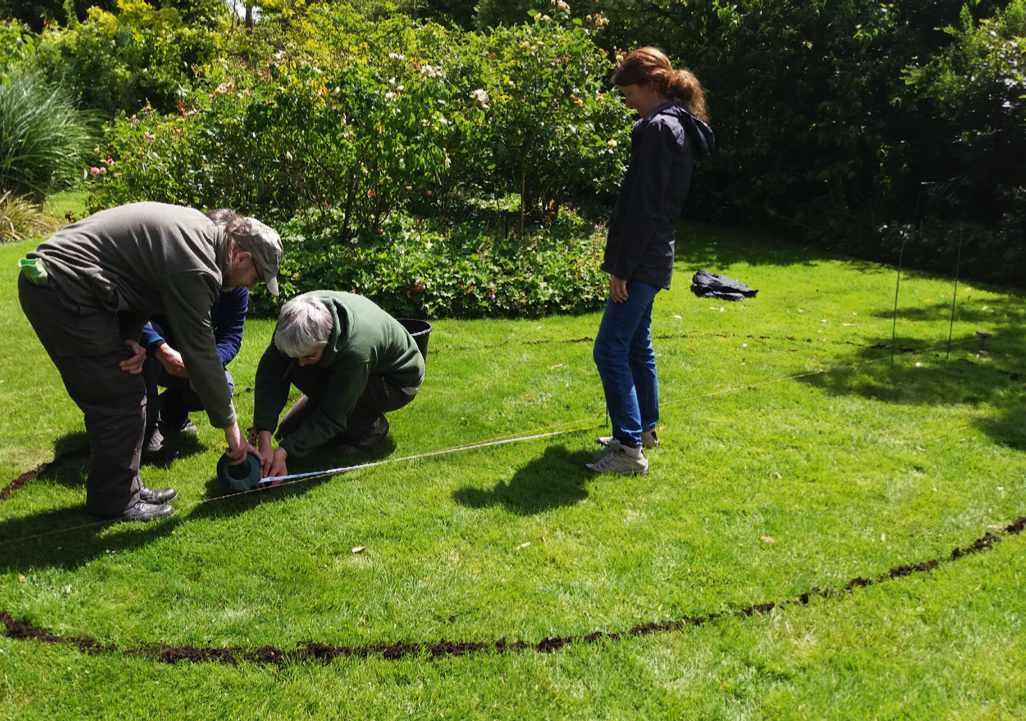
07498 918588
bestinhorticulture.co.uk
Enquiries@bestinhorticulture.co.uk
EDUCATION GUIDE
KLC SCHOOL OF DESIGN Part of West Dean College of Arts & Conservation
KLC is the only progressive garden design course in the UK to follow the growing year of January to December.
�e KLC Garden Design Diploma is a uniquely tailored course designed to prepare students for a career in the garden design industry. Because the learning path follows the growing year, initial study and �nal project work takes place in the colder winter months either side of the practical horticulture and live projects in the spring and summer. �e resulting one-year course combines practical hard landscaping and gardening skills, plant science and creative design principles in a parttime format with additional study required outside of class each week.
�e course includes an exclusive �ve-day work experience placement at Hampton Court Palace
Gardens with the Historic Royal Palaces Garden and Estates team with a special illustrated talk by the head of Gardens & Estates.
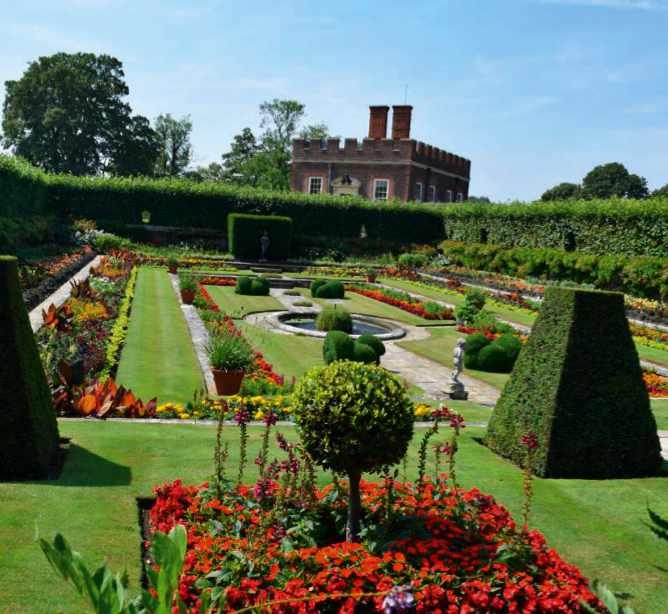
Since our successful merger with likeminded West Dean College of Arts & Conservation in 2021, the course also includes sessions at its restored historic gardens in the 6,350-acre West Dean Estate with its head Gardener, Tom Brown.
�e KLC Garden Design Diploma’s method of providing close support from an industryconnected teaching faculty of practising designers o�ers a powerful learning journey. As a result, our graduates are in demand to work with prestigious designers.
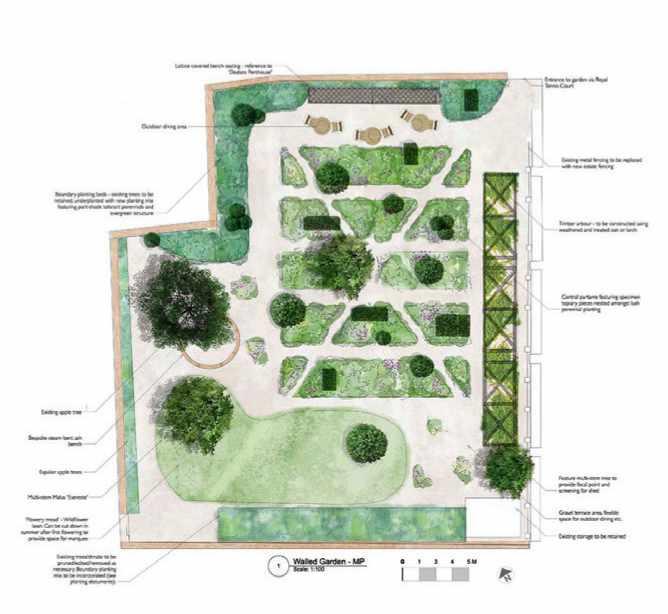
Over the years, KLC has produced many RHS Flower Show winners. �e most recent success has been at the RHS Hampton Court
Palace Garden Festival 2022, which resulted in Best in Show, a Gold Medal, a Silver Gilt Medal and two construction awards from both new and past KLC alumni.
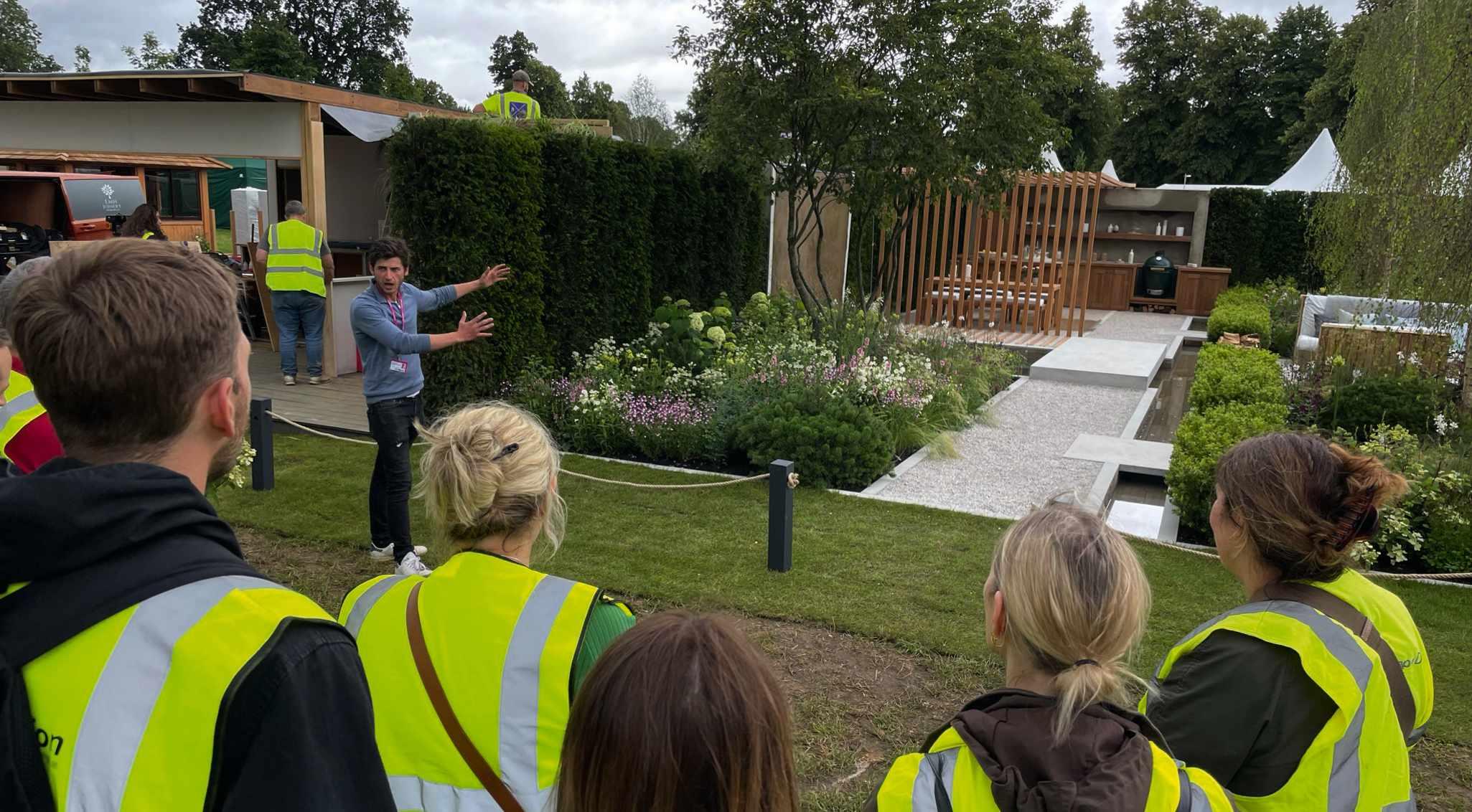

Come join us at our Open Day on Saturday, 8 October in central London to discover more about applying to start with us in January 2023, or contact us now to �nd out more and maybe book an interview.
KLC School of Design part of West Dean College of Arts and Conservation. Design Centre East, Chelsea Harbour, London SW10 0XF.
ADVERTISEMENT FEATURE EDUCATION GUIDE
klc.co.uk | 020 7376 3377
THE LONDON COLLEGE OF GARDEN DESIGN
Inspiring courses for the garden professional

Widely regarded as one of the world’s leading garden design colleges, the London College of Garden Design has a wide range of courses for those aiming to start a career in garden design and continuing professional development for experienced designers.



THE LEADING GARDEN DESIGN DIPLOMA
Our one-year Garden Design Diploma led by Andrew Wilson welcomes students both in-person at the Royal Botanic Gardens, Kew, and in real-time online classrooms. We o�er an exciting and o�en demanding environment that teaches not just the fundamentals of design but also develops skills in planting and construction design and running your own successful garden design studio.
Every class is taught by expert tutors who are all practicing professionals and we ensure that our students get the opportunity to take part in inspirational visits and free graduate seminars. And if you are in Australia or New Zealand you can join this course with our partner college in Melbourne.
AWARD-WINNING GRADUATES
Our students have won the majority of Society of Garden Designers Student Awards since they began and regularly graduate to work for some of the world’s leading designers and win major awards for themselves. Our free graduate programme gives you extra training
opportunities and the chance to design gardens in prestigious locations.
CONTINUING PROFESSIONAL DEVELOPMENT
�ere are a wide range of opportunities to develop your career through our other extended courses. Our six-month intensive Planting Design Diploma is led by Andrew Fisher Tomlin with the involvement of some of the world’s leading planting specialists. We also o�er certi�cate programmes in Sustainable Design and Construction Design to help you enhance your career prospects. �ese are also available online in real-time classrooms or in blended learning formats. To �nd out more download a prospectus from our website.
ONLINE AND CLASSROOM BASED COURSES
For 15 years our Info Burst courses have led the way on new ideas and approaches to design and you can now join them online at times to suit the busy professional. �ese courses raise funds for a number of garden charities. We also o�er courses in conjunction with the Royal Horticultural Society at RHS Garden Wisley and, new for 2022, with Denmans Garden in Sussex. All these courses aim to be suitable for both professionals and the garden enthusiast.
For more information please visit our website or contact our administration o�ce on 01483 762955.
EDUCATION GUIDE
01483 762955 lcgd.org.uk info@lcgd.org.uk
The Viking Cruises Lagom Garden at the 2019 RHS Hampton Court Garden Festival, designed by 2016 graduate Will Williams.
2019 graduate Helen Saunders’ awardwinning design for an educational landscape and wildlife habitat.
Planting Design Diploma students on a field trip.
Students have the option to study in-class and online.
SCOTLAND’S RURAL COLLEGE
Scotland’s Rural College offers a range of courses from NC level to postgraduate in subjects ranging from Horticulture to Garden and Greenspace Design. Students learn at the Edinburgh campus in conjunction with the illustrious Royal Botanical Gardens as well as the stunning Queen’s Park Victorian glasshouse in the south side of Glasgow. With degrees awarded by the University of Glasgow, the institution sees many of its students go on to flourishing careers, with alumni including the BBC Gardeners’ World presenter Frances Tophill.

The institute also offers a variety of programmes related to the land-based industries with Wildlife and Conservation Management being a popular choice with mature students or those returning to learning and looking to give something back and

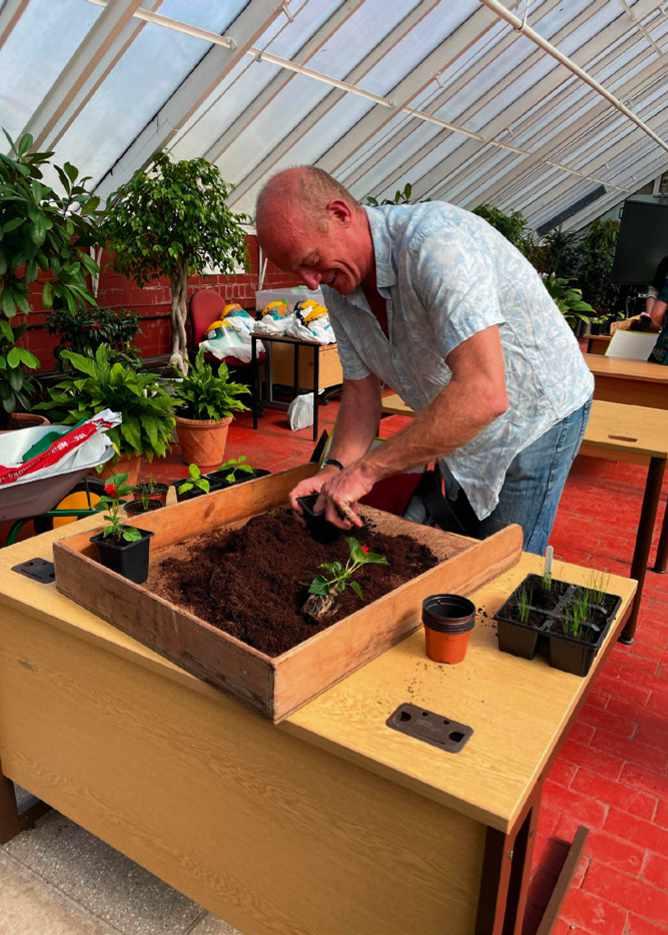
engage with nature. Returners aged 25 and over can take advantage of the Change Your Path bursary of £1,000 to help with the cost of becoming a new student.
One recipient of the bursary, Kristyna Andrlova, changed from a career in the hospitality industry, to study Garden Design in Edinburgh her reasons for the change are “Simple yet complex. In my eyes, garden design means creating a piece of art, that consists of pieces of life. Life process fascinates me and I always wanted to create and help protect the environment. I think garden design encompasses all of these and so much more.” Her plans after graduating are ambitious also, “I would like to get some work experience while studying and after graduation get a job in a GD/landscaping firm. Eventually,

I would like to start my own business once I feel competent enough to do so.”


Ana Basto, another recipient, switched from working in a warehouse to the HND Wildlife and Conservation Management Programme at the Oatridge Campus. “I’ve found each aspect of the course has increased my knowledge and understanding and given me a realistic overview of the field of conservation. The Change Your Path bursary has given me the opportunity to focus on my studies for the last academic year, by supporting me with my finances and reducing some of the added pressures of studying full time while working part-time.”

sruc.ac.uk/horticulture sruc.ac.uk/gardendesign sruc.ac.uk/conservation

ADVERTISEMENT FEATURE
LEARNING WITH EXPERTS
LEARN FROM YOUR HORTICULTURAL HEROES
Learning with Experts’ students love being able to learn directly from world-class horticulturists and garden designers on-demand and from wherever they are in the world. With more than 40 gardening courses to choose from, there’s a gardening course for every gardener from beginners to professionals.
Here’s just a few of the Learning with Experts tutors you could learn new gardening skills from:
PIET OUDOLF
World-famous garden designer and plantsman, Piet Oudolf is famous for his planting design for New York’s High Line and leading the New Perennial design movement. Piet’s courses cover his planting philosophy and how to design a garden to work in all seasons – look out for the Piet Oudolf Gardens collection of courses.
DR NOEL KINGSBURY
Expert horticulturist and frequent
collaborator with Piet Oudolf, Noel has written over 25 books on horticulture and planting design. Noel teaches RHS Level 2: Principles of Plant Growth and Development, as well as co-tutoring Piet Oudolf courses, and teaches Propagation and Perennial Planting Design.


CHRIS BEARDSHAW
Chris Beardshaw won Gold at RHS Chelsea in 2022 and teaches the Container Gardening course – perfect for gardeners just getting started or with smaller spaces, with projects ranging from choosing the right container to designing complex container gardens.
SALLY NEX
Sally is gardener and writer and has a focus on sustainable gardening. She started growing “just a few beans”, before becoming completely self-su�cient for vegetables, fruit and herbs as well as gardening professionally. Sally teaches the Self-Su�cient Veg Gardening course.

ANDY McINDOE
With more than 30 years experience in the horticultural world, over 70 RHS Chelsea Gold medals and many appearances on BBC Gardeners’ Question Time, Andy has seen most horticultural challenges in his career! Andy teaches �ve courses including Gardening for Wildlife, Trees, and Shrubs.


GROW YOUR GARDENING SKILLS
Sign up for a Learning with Experts course and use code GARDENSEP22 at the checkout for 20% o� your next online gardening course.*
*Terms apply, cannot be used in conjunction with other o�ers and promotional codes. Not valid for use on the RHS Level 2 courses Use by 31 October 2022.
learningwithexperts.com

EDUCATION GUIDE
GARDEN MASTERCLASS
Garden Masterclass is Annie Guilfoyle and Noel Kingsbury and we offer a unique education portal for garden and landscape people.
■ We seek out experts and innovators, whether well-known or waiting to be discovered. We organise live one-day workshops in gardens up and down the British Isles.
■ Many are recorded, allowing others to share in the experience.
■ We produce educational webinars, recordings are available from our website.
■ We commission �lms about exceptional gardens and their creators.
■ Our membership scheme gives access to exclusive live and web-based events, discounts on webinars and recordings and access to an extensive online library.
■ Some of what we do is free! �ursday Garden Chat is our weekly public service broadcast at 18.00 London time. All are recorded for YouTube and website viewing.
■ We have over 50 hours of recorded webinars, 70 hours of free public viewing along
THE PLANT SCHOOL

Combining people who love their plants with knowledgeable professional enthusiasts who are keen to share their interest in plants. We aim to develop a deeper understanding of how plants prefer to grow and recognise how they interact with their surroundings.
The Plant School is the leading independent provider of education for students wanting a grounding in plant knowledge – all the courses are focused on learning about plants and trees with lectures by leading plantsmen. Courses

have been running for many years and cover the theory and practise of plants and their origins, from how to identify them to choosing the best species and cultivars for our gardens. This is covered by expert lecturers topped up with visits to plant collections.
■ All courses run through the Academic Year. Ten days across ten months (September - June)

■ Carefully chosen coursework
■ Predominately London based
with 70 hours viewing exclusively for our members.
gardenmasterclass@gmail.com
gardenmasterclass.org
10-DAY COURSES
The Plant Course, The Tree Course, The Specialist Plant Course, Trees for Dendrologists Dependent on course, timetable includes visits to Kew, The Savill Garden, The Chelsea Physic and The Garden Museum. Note: The Plant Course is now fully subscribed for 2022-2023.

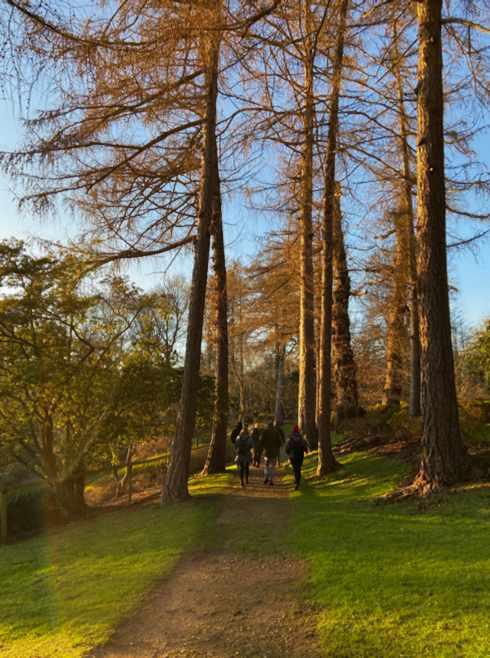

hayley@theplantschool.org
@theplantschool
theplantschool.com
ADVERTISEMENT FEATURE
CAPEL MANOR COLLEGE
Make nature your classroom at London’s environmental college

Capel Manor College o�ers a varied range of full- and part-time courses in horticulture, landscaping and garden design. While studying with us, we will immerse you in a hands-on, creative and practical outdoor learning environment, with exceptional, industry-experienced tutors.
During your course, you will be introduced
to our unique array of plant collections across our six campuses, and you will get the opportunity to work within some of London’s most prestigious parks and gardens.


You will be encouraged to showcase your skills by entering your work into nationally and internationally renowned design shows, exhibitions and competitions. Our students
regularly win awards in RHS shows such as Chelsea, Hampton Court and Chatsworth.
JIMI BLAKE’S NEW MEMBERSHIP PROGRAMME
Jimi Blake has launched his new membership programme – online gardening classes from Hunting Brook Gardens. Join renowned plantsman Jimi for his amazing series of online gardening courses. All courses were �lmed at his spectacular Hunting Brook Gardens in Ireland throughout a full year in the garden. Jimi will guide you through all the practical work that he does in Hunting Brook for each season and you will learn the philosophy, techniques, and skills that make Hunting Brook one of the most magical gardens in Ireland. �e courses take a detailed look at the plants that Jimi uses in his planting
designs, plant combinations, and succession planting. He will introduce you to hundreds of di�erent plants which will take your plant passion to the next level. Each course includes beautiful instructional videos for each module and detailed notes that you can download and keep. �ese courses are suitable for the enthusiastic amateur and/or the professional horticulturist.
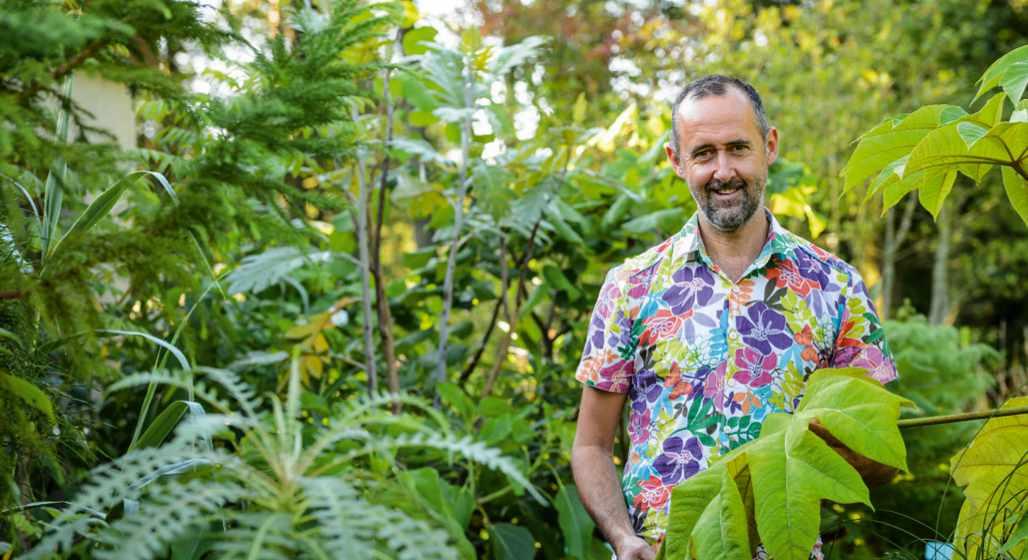
INCLUDED IN THE MEMBERSHIP PROGRAMME
�e Four Seasons Courses – in-depth recording of a year in Hunting Brook with Jimi.
1. Spring
2. Summer
3. Autumn
4. Winter
A year of propagation with Jimi Live Monthly
Masterclass with Q&A. Closed Facebook group with direct access to Jimi for all your gardening questions. Special 14 days for free then �89 per month or �449 for the year.
hello@huntingbrookgardens.com huntingbrookgardens.com/ gardensillustrated

EDUCATION GUIDE
Find out more about our courses at capel.ac.uk

DOWNTOOLS
Book reviews, the crossword and Alice Vincent

AUGUST 2022 GARDENSILLUSTRATED.COM 111
SCIENCE HISTORY IMAGES
/ ALAMY STOCK PHOTO
Various stinkhorn mushrooms by Ernst Haeckel, from The Magic of Mushrooms by Sandra Lawrence, reviewed on page 112.
BOOK REVIEWS
THE MAGIC OF MUSHROOMS: FUNGI IN FOLKLORE, SUPERSTITION AND TRADITIONAL MEDICINE
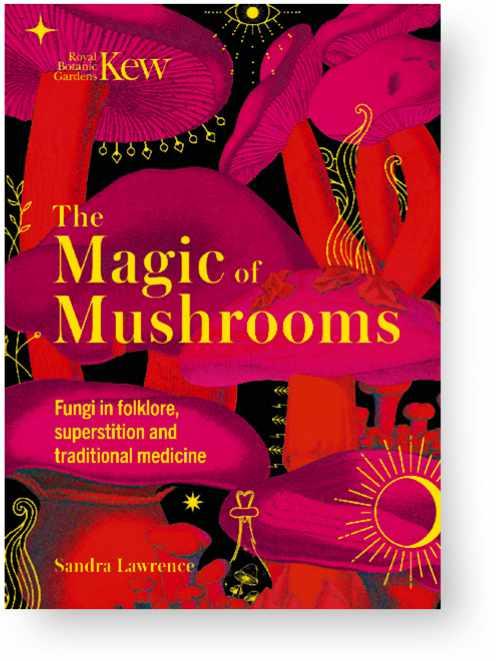 by Sandra Lawrence
by Sandra Lawrence
Welbeck, £14.99
ISBN 978-1787399068
Reviewer Lia Leendertz is the author of The Almanac: a Seasonal Guide.
This is such a fun book about a fascinating topic. Author Sandra Lawrence has set about this obviously meaty subject with glee, and approaches every new chapter as a storyteller addressing a rapt audience. You can almost sense her rubbing her hands together.
This is no mean feat, as most of the entries are just a few pages long, and yet she delves into the fascinating histories behind such varying stories as the origins of Tokaji wine, or ‘noble rot’; delicious Amanita caesarea, so beloved of Claudius Caesar that it was named after him, and is still found growing along Roman roads where centurions discarded mushroom remains; and the ‘Mummy’s Curse’ that killed 11 of the people who first entered Tutankhamun’s tomb, but now suspected to be connected to spores of Aspergillus stirred up on breaking the tomb’s seal.
The majority of the book is historical but it concludes with a quick jaunt through the potential future fantastical
uses of fungi, from accompanying astronauts to Mars to soak up radiation, to self-healing buildings built from fungus-baked bricks.
The vast amount of research that must have gone into the writing of this book is apparent on every page, but it never feels dense or inaccessible and would make a wonderful gift book for anyone with even a passing interest in folklore or fungi.
It is also a real feast for the eyes, crammed full of examples of the way mushrooms have been depicted in art, from Russian postage stamps and Japanese wood blocks to 12th-century frescoes and much, much more. These images are generously used, often across whole spreads, and are printed on thick, matt paper; the whole thing satisfyingly chunky, colourful and tactile.
But it is the writing that really makes this book shine. Fungi are fascinating, and Sandra Lawrence really enjoys reminding us of that fact.
THE
SCIENCE OF COMPOST: LIFE, DEATH + DECAY IN THE GARDEN
by Julian Doberski
Pimpernell Press, £9.99
ISBN 978-1914902932
This book is truly for the compost geek and I, for one, have been waiting a long time for it. It takes a very serious, rigorous and thoroughly referenced deep dive into your compost heap. Not that this makes this book heavy in any way; it’s a breeze to read, but as it has science at its heart, it’s not going to forgo the fine detail.

First, there is a thorough discussion of the whats, whys and wherefores of the compost heap, which can roughly be broken down into living and chemical components. Everything gets a look-in, from the largest (earthworms) to the smallest: the microscopic organisms that live on leaf surfaces, a habitat known as the phylloplane (there’s a good Scrabble word); those found within plant tissues (endophytes); and those associated with plant roots (the root microbiome).
Thus, you learn that some invertebrates directly chew organic material – thank you
slugs, woodlice and millipedes – and that some graze on the microbial flora found on, in and around the surface of dead plant material. And because this is a web, rather than a chain, sometimes the big guys eat the small guys and a whole load of microbes dine on their faeces.
The book then delves further into matters of physicochemical and environmental decomposition – heat, moisture, nitrogen, oxygen, carbon, sugars, pH and secondary metabolites.
The last chapter is a hymn to the importance of leaves, as leaf litter carries large amounts of microorganisms that aid the breakdown of organic matter. This chapter also acts as a reminder about why we might want to compost in the first place. Interestingly, at no point in this book does the author tell you how to compost; there are already reams of literature on the topic, he says. This is primarily an analysis of the layers of the heap, and as such, an absolutely riveting read.
112 GARDENSILLUSTRATED.COM AUGUST 2022
What’s hiding in your compost bin? This is a thorough look at what makes up the habitat that is rotting garden material. A most educational read. Reviewer Alys Fowler is a horticulturist, presenter and garden writer.
A beautifully illustrated, easy and entertaining read about the abundance of folklore, stories and superstitions surrounding fungi.
EDEN’S KEEPERS: THE LIVES AND GARDENS OF HUMPHREY WATERFIELD AND NANCY TENNANT
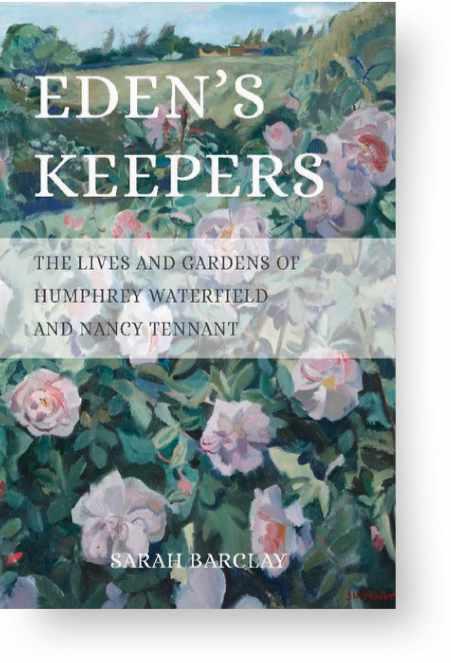 by Sarah Barclay
by Sarah Barclay
Clearview Books, £25
ISBN 978-1908337634
The page-turning love story of two exceptional 20th-century garden makers, written by one of Tennant’s granddaughters.
Reviewer Ambra Edwards is a writer and garden historian.
Other books
From indoor displays to plant-inspired self-help and the wild side of gardening, the best of the rest of this month’s books.
EDIBLE WILD PLANTS AND HERBS
 by Pamela Michael
by Pamela Michael
Grub Street, £25
ISBN 978-1911667346
Both a field guide and cookbook for budding foragers, with illustrations by one of the country’s leading botanical artists.
THE GARDENER’S YEARBOOK
 by Martyn Cox
by Martyn Cox
Mitchell Beazley, £18.99
ISBN 978-1784728151
This book is only tangentially about gardens. And yet gardens form the very core of the story, for it is above all through gardens that the love is expressed between the competent, clever, deeply musical painter and campaigner Nancy Tennant, and the much younger object of her affections, Humphrey Waterfield, who for decades remained what we might nowadays call her ‘gay best friend’. Yet the term hardly does justice to the deep and complex relationship between this generous-hearted woman and her charming, gifted, emotionally infantile and monstrously selfish, not-quite-lover.
Shortly before the Second World War, they began work on a garden together, Hill Pasture, near Nancy’s family home in Essex. News of the garden, with Nancy’s lyrical evocation of springtime in England, is what sustains Humphrey through the brutalities of war. On his return, it becomes his purpose, admired by the early 1970s as
‘the most beautiful small garden in England’.
However, for most gardeners, Waterfield is more closely associated with Le Clos du Peyronnet, the internationally famous garden in Menton, France. This was the home of his parents, hastily abandoned when the Nazis invaded France, and restored from ruin after the war to become one of the great glories of the Riviera. Save for a few blurry, black-and-white photos, there is frustratingly little about it.
Nor is there more than passing mention of Abbots Ripton Hall, the garden Waterfield designed in Cambridgeshire (not Yorkshire – an editorial oversight) or the work he did at Greys Court.
So those seeking to learn more about this still relatively little-known artist-gardener (the famous American designer Lanning Roper, for one, rated him, eulogising his talents in Country Life) will feel shortchanged, but all can enjoy a poignant love story, rich in historical detail.
An experienced horticulturist’s monthly guide to gardening, with wise, clear and helpful advice on tackling the essential tasks and dealing with problems.
HOW TO GROW by Marcus Bridgewater

HarperOne, £17.99
ISBN 978-0063141445
The social media star known as Garden Marcus shares tips on caring for oneself and one’s plants, with lessons for growth rooted in his gardening experiences.
HOW TO PLANT A ROOM AND GROW A HAPPY HOME
 by Morgan Doane and
by Morgan Doane and
Erin Harding
Laurence King Publishing, £12.99
ISBN 978-0857829061
By the authors of How to Raise a Plant and Make it Love You Back. Features step-by-step plant projects and styling ideas.
THE LITTLE BOOK OF WILD GARDENING
 by Holly Farrell
by Holly Farrell
Mitchell Beazley, £14.99
ISBN 978-1784728335
How to embrace a natural approach to gardening. Divided into sections for di�erent garden areas, from flowerbeds to water features.
AUGUST 2022 GARDENSILLUSTRATED.COM 113
Rewards PROGRAMME
�is month we’re highlighting some of the great new o � ers in the Gardens Illustrated Reader Rewards scheme. To see the full range, head online
HOW IT WORKS
1Browse
Take a look at some of our latest fantastic o�ers, covering gardening, lifestyle, travel, food and drink, and much more.
2 Redeem
Follow the link provided in each o�er and apply the o�er code when placing your order.
3 Find even more
Head to gardensillustrated. com/o�ers to find the full range of discounts, deals and competitions available to you.
SAVE 5%
5% DISCOUNT ON ALL SAGA BOUTIQUE CRUISES

Saga’s cruises are designed for those who want to enjoy some wellearned luxury, so now is the ideal time to book that cruise you’ve been promising yourself. Saga’s ocean cruises are designed exclusively with Saga customers in mind. Its new smaller ships will help you escape the crowds and discover lesser-known destinations. With Saga’s river cruises, you can explore Europe’s variety of celebrated rivers aboard luxurious river cruise ships. Enjoy the views, relax in your spacious cabin and experience high levels of service.
Visit saga.co.uk/gardens-2021 to request a brochure or call
To browse our full selection of o�ers, go to gardensillustrated.com/o�ers
114 GARDENSILLUSTRATED.COM AUGUST 2022
PRINT VERSION
You can buy printed issues of the magazine published up to six issues ago at buysubscriptions.com or see below for details.
DIGITAL VERSION
Gardens Illustrated is available as a digital edition – search for ‘Gardens Illustrated’ on the App Store, Google Play or Zinio.com

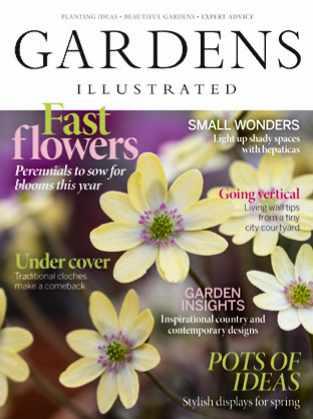

CLOTHBOUND SLIPCASES
Cost from £9.99 each (inc p&p). Subscriber discounts available – see below for details.
TO ORDER PRINTED COPIES OR SLIPCASES
ACROSS
1 Tie up an unruly… colourful annual with funnel-shaped flowers (7)
5 View in arboreta – spectacular! (6)
GARDENS ILLUSTRATED PRINTED ISSUES ORDER FORM

Complete this form and send to: Gardens Illustrated, Back Issues, PO Box 3320, 3 Queensbridge, Northampton NN4 7BF (You may photocopy this form).
I would like to order copy/copies of issue(s) SUBSCRIBERS
n UK – £5.29 per copy
n EU – £5.99 per copy
UK – £6.49 per copy
EU – £7.49 per copy
n Rest of world – £6.99 per copy n Rest of world – £8.49 per copy
I would like to order slipcase(s) SUBSCRIBERS
n UK – £8.49 each
n EU – £9.45 each
UK – £9.99 each
n EU – £10.50 each
n Rest of world – £10.80 each n Rest of world – £12 each
Postage & packaging is included in all prices.
n I enclose a cheque/international money order made payable to Our Media Ltd for £
n I would like to pay by credit/debit card, please debit my card
Visa n Mastercard n
n n n n n n n n n n n n n n n n
Expiry date n n n n Issue no. (if shown) n n
Signature Date / /
Title Forename
Surname Address
Post/Zip code Daytime tel no.
Email address Subscriber number (if applicable)
Please tick here if you would like to receive these n
We would also like to keep in touch by post and telephone about other relevant o�ers and promotions from our publisher Our Media Limited. If you’d rather not be contacted this way please tick here post n phone n For more information about how to change the way we contact you, and how we hold your personal information, please see our privacy policy, which can be viewed online at policies.immediate.co.uk/privacy
8 Underground bud of eg a snowdrop –it lights up! (4)
9 Pea-like flower, genus Vicia – etc in verandah’s extremes (5)
10 Point of a garden fork? (4)
11 Daisy eg ___ perennis (6)
12/18 A hebe with pink-edged, green/ cream leaves – ‘Aurora Borealis’? (8,6)
14 Sealed glass plant containers (8)
17 Tool that makes fence post holes –uninteresting sort? (5)
18 See 12 across
20 Family of Pinus and Picea genera – I confused with pea cane (8)
22 Patricia replaces carbon with nitrogen for genus of herbaceous plants with sprays of small flowers (8)
23 Plant crowns from which new shoots grow – simple seats (6)
25 Classic shape of a domed cloche (4)
26 One of Eden Project’s domed plant enclosures (5)
27 Container that might be recycled eg (most appropriately) for a kitchen garden (4)
28 Trachycarpus fortunei, ___ palm … anchusa endlessly spoilt (6)
29 Snowdrop with green markings at the tip named after an Irish county (7)
SOLUTIONS TO
DOWN
1 Cut back superfluous plant growth (5)
2 Shaped like the drooping flowers in Kniphofia spikes (7)
3 See 26 down
4 Trailing succulent with heart-shaped leaves and small magenta flowers … ruined a pineta (7)
5 Tree with winged fruit ‘keys’ (3)
6 Insectivorous perennial of eg genus Sarracenia, common name ___ plant (7)
7 Common name for daisy-like flower Senecio cruentus (9)
13 Bird which, if ragged, is a type of campion (5)
15 A David Austin pale-pink/apricot rose named for a Royal platinum celebration (9)
16 Exuded by eg Eucalyptus… from spores (infected) (5)
19 Hazel fences – problems to be overcome? (7)
20 A named series of colourful phlox –and a showy butterfly (7)
21 Genus of Mexican orange blossom –a coyish combination (7)
23 Wonderful, what water-retaining granules do when wet! (5)
24 Osier leaves are ___-shaped (5)
26/3 Frost-resistant blackcurrant and Britain’s highest mountain (3,5)
CROSSWORD

BUYING BACK ISSUES OF
NON-SUBSCRIBERS
n
n
NON-SUBSCRIBERS
n
SINGLE ISSUES CLOTHBOUND SLIPCASES PAYMENT DETAILS YOUR DETAILS "
IN TOUCH
KEEP
Gardens Illustrated (published by Our Media Limited) would like to send you updates, special o�ers and promotions by email. You can unsubscribe at any time.
U N I T E D K I N G D O M UNITED KINGDOM 0 3 3 3 0 1 6 2 1 14 03330 162114 O U TS I D E U K OUTSIDE UK + 4 4 1 6 0 4 97372 2 +44 1604 973722
JULY
ACROSS 7 Tepal 9 Rock cress 11 Campsis 12 Dierama 13/29 Sun Baby 14 Tasso 15 Clean 16 Violets 18/27 Lantern Tree 20 Roses 22 Rosea 24 Sag 26 Agretti 28 Robinia 30 Tumbelina 31 Bract. DOWN 1 Stocks 2 Elms 3 Irises 4 Acid soil 5 Acme 6 Sesame 8 Pimento 10 Shannon 14 Trees 15 Canna 16 Verdant 17 Surfinia 19 Elsanta 21 Shrimp 23 Spread 25 Grafts.
• Solutions to this issue’s crossword will be printed in the September issue
Crossword
Nursery guide
Get inspired for the summer season with the best plant and bulb suppliers
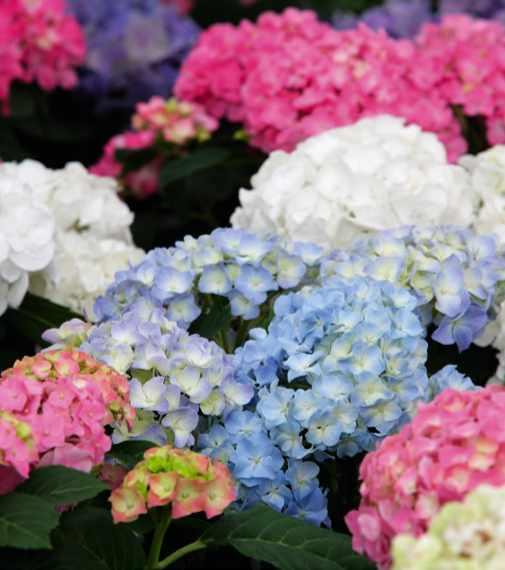


BUNKERS HILL PLANT NURSERY
A small family-run plant nursery near Woodstock, Oxfordshire, with an old-fashioned feel and traditional values. Our sta� have a wide range of horticultural knowledge and we o�er a huge selection of top-quality plants including rare and unusual varieties. bunkershillgardenshop.co.uk

01869 331492
THE PLANT SPECIALIST
Established in 2002 the nursery is located in the Chilterns and is dedicated to growing a wide range of new and unusual herbaceous perennials and ornamental grasses – many of which can be viewed in the display gardens.
theplantspecialist.co.uk
01494 866650
MEADOWGATE NURSERY
A family-run, independent nursery, specialising in ornamental grasses. Over ten years’ experience of growing a diverse range of grasses. We o�er tailored advice on the use and care of the grasses we sell.

meadowgatenursery.co.uk
07736 523262
LANGTHORNS PLANTERY
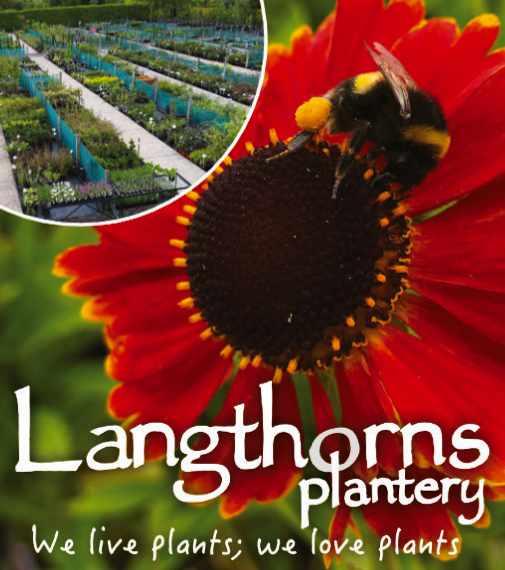
With an eye for the unusual and a vast range of plants of all sizes, the team at Langthorns are on hand to help you choose the right plants for your gardens. Don’t miss our OPEN WEEKEND on 10-11 September, tour tickets available on our website. langthorns.com
01371 872611
PELHAM PLANTS
Quality perennials lovingly propagated and grown in peat-free compost at our charming woodlandedge nursery in Sussex. Mail order and downloadable catalogue available. Visits by appointment only. pelhamplants.co.uk pelhamplants@gmail.com
BEETHAM NURSERIES
Award-winning, family-run plant nursery in Cumbria, specialising in herbaceous perennials and plants for over 30 years. We pride ourselves on our expert knowledge, friendly sta� and our passion for plants. beethamnurseries.co.uk
01539 563630
ASHWOOD NURSERIES
An independent nursery situated in the West Midlands o�ering many home-grown, beautiful plants. Open seven days a week. Mainland UK mail-order service available. ashwoodnurseries.com
01384 401996
BINNY PLANTS

2022 Peony catalogue online. More than 300 herbaceous, intersectional, and tree peonies, as well as thousands of perennials, grasses, shrubs and ferns are now available for delivery nationwide. binnyplants.com contact@binnyplants.com
OLD COURT NURSERIES
Specialist family-run nursery and garden open from April, Wednesday to Saturday, 11am–5pm. Catalogue available on request. Order now for delivery of Michaelmas daisies and more.


autumnasters.co.uk
01684 540416
ADVERTISEMENT FEATURE
Summer gardens to visit
Summer is a great time to visit this collection of stunning gardens


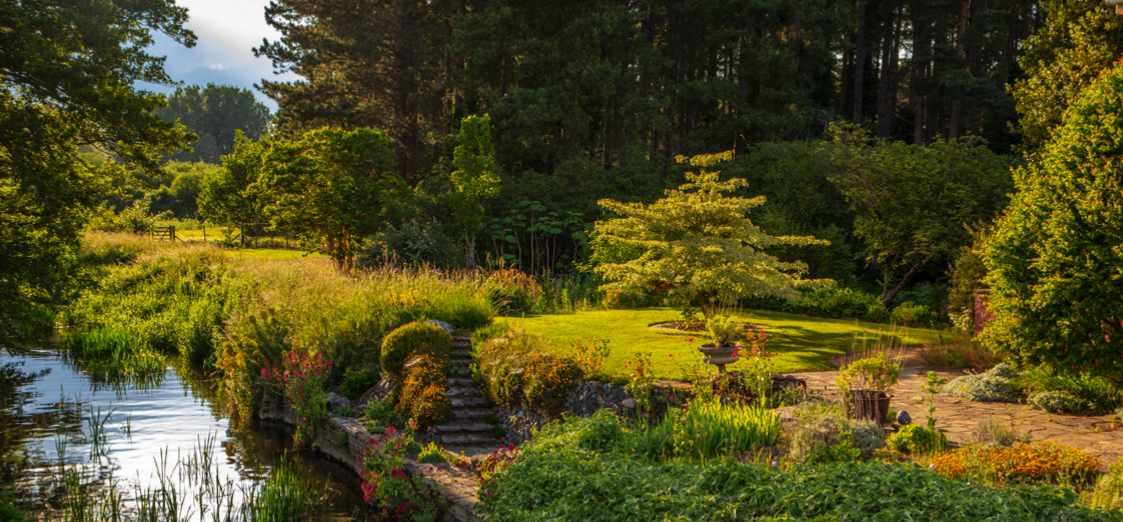

1THE LASKETT
Created from a bare four-acre field, this remarkable garden is a creative memorial by Sir Roy Strong CH. One of England’s most hidden and private gardens until earlier this century. Visitors come from all over the world to see this remarkable and inspirational creation.
Much Birch, Hereford HR2 8HZ | 01372 384045 | thelaskett.org.uk

2SISSINGHURST
CASTLE GARDEN NATIONAL TRUST
The Sissinghurst Series: our head gardener Troy Scott Smith hosts a variety of intimate lectures with guests James Basson, Dan Pearson, Charles Dowding and Juliet Sargeant. With topics including Mediterranean landscapes, organic farming and our connection with nature.
Nr Cranbrook, Kent TN17 2AB | nationaltrust.org.uk/sissinghurst-castle-garden
4BLUEBELL
ARBORETUM & NURSERY
Visit our tranquil, nine-acre, woodland garden full of unusual trees and shrubs, many of which have been planted for their superb summer colour. Many of the rarities on display are available for sale from our adjoining specialist plant nursery. RHS Partner Garden.
Smisby, South Derbyshire LE65 2TA | 01530 413700 | bluebellnursery.com
3FULLERS MILL
A tranquil, award-winning seven-acre garden on the banks of the River Lark. It combines a beautiful site of light dappled woodland with a plantsman’s collection of unusual shrubs, perennials, lilies and marginal plants. It is a garden of truly year-round interest.

West Stow, Bury Saint Edmunds IP28 6HD | 01284 728888 | fullersmill.org.uk
A one-acre magical masterpiece situated near Leeds. A Grade II national heritage garden, designed in a series of ‘rooms’ interlinked through a succession of vistas, York Gate is one of the finest small gardens in the country. Booking essential Adel, Leeds LS16 8DW | 0113 267 8240 | yorkgate.org.uk
ADVERTISEMENT FEATURE
1
3
Photo: Clive Nichols
Photo: Clive Nichols
2
4 5
5YORK GATE
6 7 8 9 10 11
Photo: Clive Nichols
6GREAT DIXTER HOUSE & GARDENS

Nestled in the Sussex countryside is a garden that inspires horticulturists across the world as it marries the natural with the gardened. Wander the swathes of wildflower meadows before stepping into this multi-layered garden, which provides interest throughout the year and mixes the exotic with the conventional. Northiam, East Sussex TN31 6PH | greatdixter.co.uk
8BELVOIR CASTLE
Belvoir Castle’s gardens and lakes are a wonderful place in which to unwind and lose yourself. Step back in time as you explore ‘Capability’ Brown’s lost landscape on exhilarating walks through formal planting and acres of beautifully restored woodland.
Grantham, Leicestershire NG32 1PE | belvoircastle.com
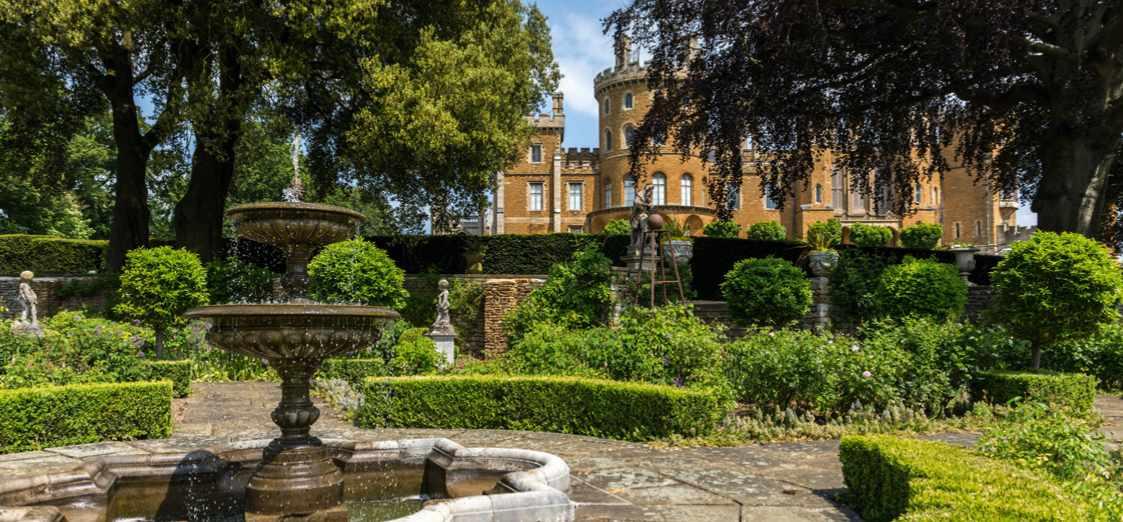
7THE SAVILL GARDEN
�is haven of beautiful gardens and woodland combines traditional and contemporary styles, with Royal connections throughout. �e height of summer sees the herbaceous borders alive with bold yellow, oranges and red, while colourful hydrangeas in Summer Wood carry the spectacle into September. Englefield Green, Surrey TW20 0UJ | windsorgreatpark.co.uk
9THE YORKSHIRE ARBORETUM
�e Yorkshire Arboretum o�ers 120 acres of peace and tranquillity in the heart of North Yorkshire. Experience exceptional natural beauty, a botanically diverse tree collection, sweeping vistas, lakes and meadows. Just 30 minutes from York, it’s yours to explore!
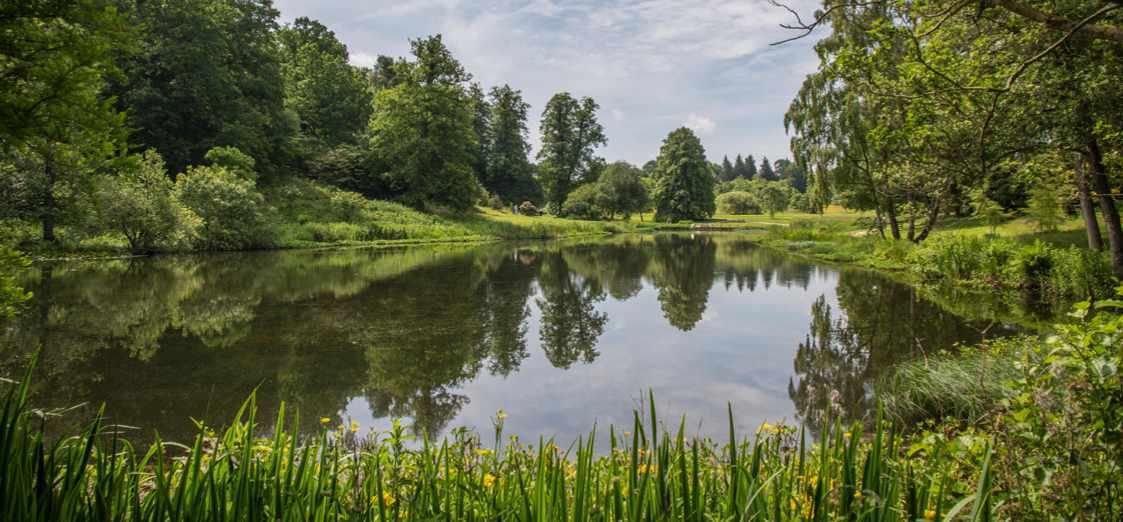
The Yorkshire Arboretum, Castle Howard, York YO60 7BY | yorkshirearboretum.org
10HOWICK HALL GARDENS
& ARBORETUM
Howick Hall Gardens & Arboretum have been owned by the Grey family since 1319. Discover the history of the 2nd Earl, after whom the famous tea is named, wander through the beautiful gardens or for the more energetic explore the arboretum.


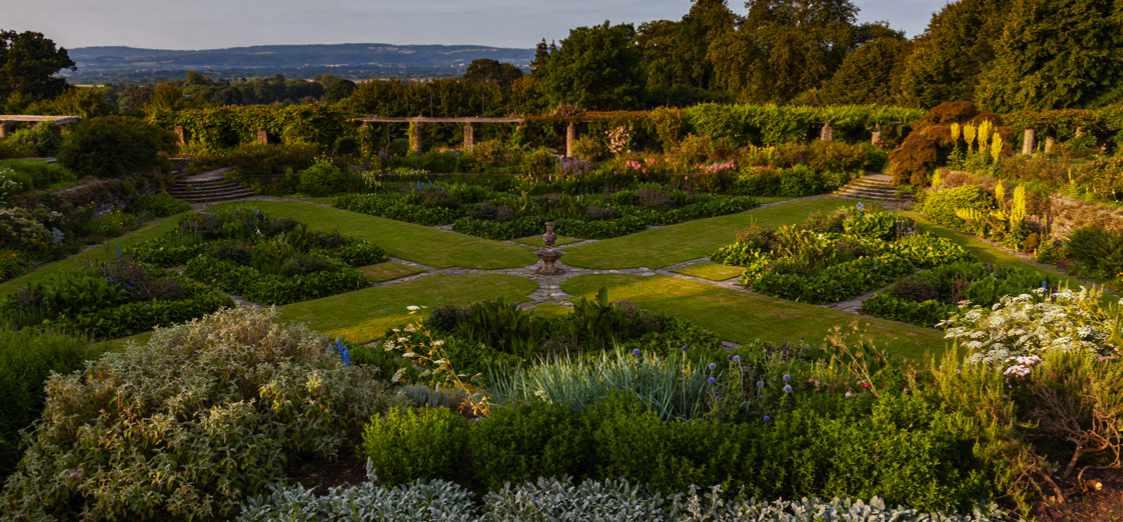
Howick, Northumberland NE66 3LB | 01665 577285 | howickhallgardens.com
11HESTERCOMBE GARDENS
Hestercombe encompasses 50 acres of quintessential Somerset gardens, spanning three centuries of garden design. The estate offers a unique combination and varied experience of the Georgian Landscape Garden (designed 1750s), the
Taunton, Somerset TA2 8LG | 01823 413923 | hestercombe.com
ADVERTISEMENT FEATURE
Victorian Shrubbery and the Edwardian Formal Gardens (early 1900s).
Summer inspiration
From beautiful garden inspiration to practical accessories and getaways, we can help make your summer special.
AQUAPLANCTON
Aquaplancton has been clearing ponds of blanket weed, duckweed, algae, green water, sludge, slime, odour and clogged �lters, for over 20 years. People re-order time and time again which says a lot for this safe, natural remedy.

01298 214003 aquaplancton.co.uk
ARCHITECTURAL HERITAGE
To complement our collection of hugely popular Verdigris patinated copper garden planters, we are delighted to introduce �e Rectangular Copper Water Container, available to order in three sizes or bespoke. Please contact us to discuss your requirements or request a copy of our latest catalogue.
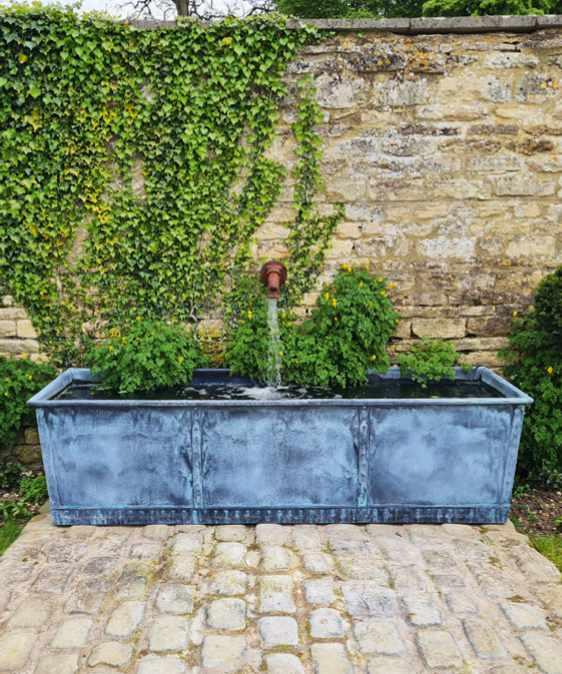
01386 584414 architectural-heritage.co.uk
POTTER & MOOCH
Explore our new Earth Collection of Ear Wings ear climbers. Handcra�ed by the sea in Sussex, using recycled silver and gold. Choose from a large range of precious gemstones and crystals. �e perfect gi�, or simply to enjoy yourself. Featured design is called ‘Maldives’. Hypoallergenic and nickel free. From £24 a pair.
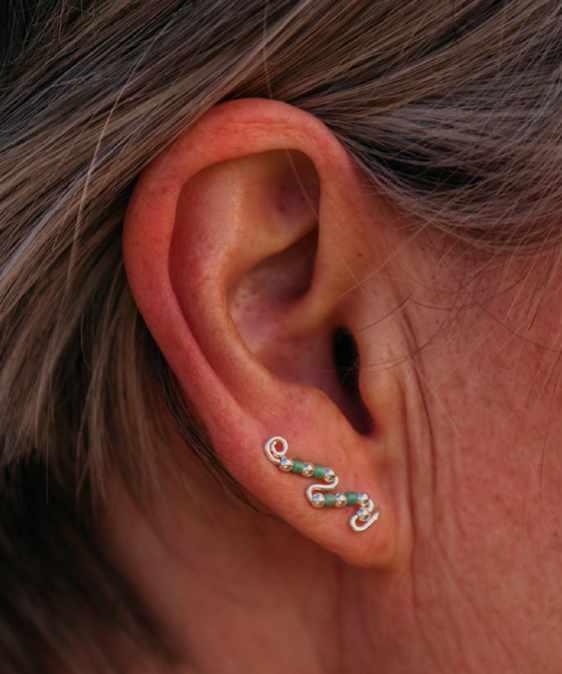
01903 331744
potterandmooch.co.uk
MALTING FARM
Stay in one of Malting Farm’s oak framed holiday cottages only three miles from Beth Chatto’s gardens. Within 20 minutes of the coast and Constable country’s Dedham Vale AONB. Fish or paddleboard on the farm lake next to the cottages or relax in your private hot tub.
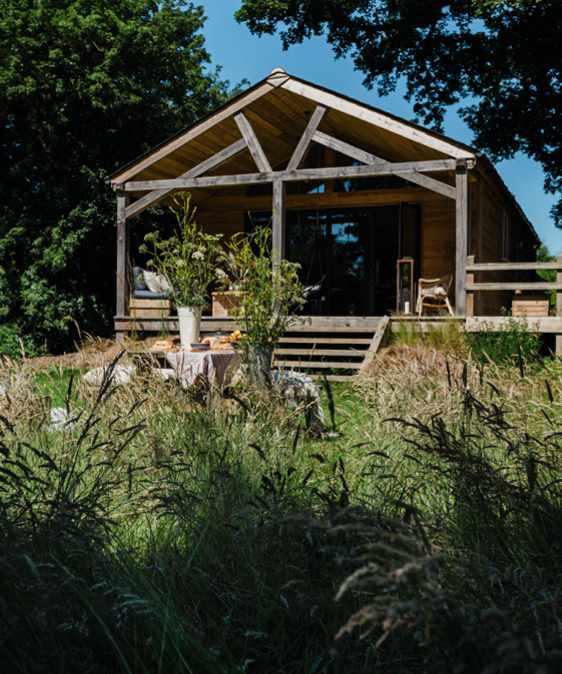
07908 401111 maltingfarm.co.uk
JANET MAVEC
Janet Mavec’s whimsical designs are impeccable in both cra�smanship and detail. Her collection of everyday, wearable jewellery is plucked directly from nature. Made of 18kt gold plated brass. Shipped worldwide. For a GI reader discount, use code GI2022 (expires 31/12/22). info@janetmavec.com janetmavec.com

DEVENICK DESIGNS
‘Hagrid’ the Royal Stag garden sculpture is part of our �inimals® collection. Standing at 1.7m tall, this contemporary design captures the bold stature of this solitary animal. Made in steel, the sculpture is suited to formal or informal styles of garden. Visit our website to view our beautiful designs or contact us for more information.

07720 841394 devenickdesigns.co.uk
GARDENS AFTER DARK
As the nights start to draw in, extend your days with our range of garden lights. Our free design service and low running costs will help you make the most of your summer evenings. Enjoy your garden a�er dark, not in the dark. Please see our website for more details.
@gardensafterdark gardensafterdark.co.uk

ADVERTISEMENT FEATURE
SEPTEMBER
• A garden full of rich planting and art in Connecticut that captures the essence of the landscape in which it sits
• Early autumn crescendo in the cottage garden of Pelham Plants nursery in East Sussex
• The evolving gardens of a country house in Warwickshire

• Marian Boswall designs a gravel garden on an old farmstead at Tillingham, now a winery and restaurant
• How to plant a bulb meadow
ON SALE 6 SEPTEMBER
Save money when you subscribe to the digital edition – see page 30. Also in selected Waitrose, Sainsbury’s and Tesco stores, as well as WHSmith, and all good magazine retailers.
AUGUST 2022 GARDENSILLUSTRATED.COM 121
CLAIRE TAKACS, ÉVA NÉMETH, JASON INGRAM
GARDENS IMMEMORIAL
by Alice Vincent
In the depths of January I stood in the corner of the garden – under the tree, against the old brick wall – and remembered what had been there six months earlier. Spires of dusky-pink ‘Summer King’ foxgloves, clouds of feathery fennel. A wayward branch, laden with Victoria plums. The winter beds were comparatively bare, dotted with the keen growth of this year’s echinops and hardy geraniums. A few adventitious allium shoots.
Afterwards, I went upstairs and scrolled through photographs of the garden in the summer on my iPhone. Honestly? I was surprised by how beautiful it looked, this happy tangle of ferocious growth. It held the same sharp, poignant realisation that comes with stumbling across a photograph taken of your younger self: that you were lovely, really, and wholly incapable of accepting it at the time.
Gardens are infamously difficult to document. How do you capture the smell of sweet peas in June, or the first hit of Sarcococca in January? Those who work in our cherished historic gardens are archaeologists, too, unearthing records of what hardy annual was sown decades before in an attempt to capture some of the magic originally grown there.
And yet, we persist. I take endless photos of the garden, but often wish I’d taken more. Months, seasons later, the unglamorous shots of certain aspects are far more useful than the flattering close-ups of a tulip in full swell. It is the context that offers the best comparison.
Despite being a person who writes about gardening, I am hopeless at keeping a record of it. I long to be the kind of grower who has a dedicated diary, filled in each day with the weather and rainfall, of what is growing and what is behind. I have started a couple over the years, but they are never quite particular enough about the details and only, in very boring or floriferous weeks, filled in daily.
I do, however, love reading other people’s. A couple of years ago, I saw Derek Jarman’s large, square sketchbooks open in glass cases at an exhibition, his elegantly sloping writing filling the creamy paper without a speck of dirt. I return to Jarman’s diaries often, usually in the form of a battered paperback of Modern Nature. He is a brilliant garden diarist: enthusiastic, opinionated, perfectly conscious of the world beyond his garden – which was, of course, boundaried by the horizon.
In Grounded, released this April, author Lulah Ellender finds her late mother’s garden diary. ‘I thought it had been lost,’

Ellender writes. ‘And I realised that, of course, she was physically tethered here… most vibrantly, in the plants still growing in the garden, six months after her death.’ It’s impossible to ignore the quiet intimacy of unfurling leaves and wet springs in her mother’s absence. Her diary entries gently guide us through Ellender’s year of grief and upheaval.
Ellender’s mother’s diary was among a pile of books in the corner of the kitchen. Thousands of others will stay unopened, lost in the flotsam of a life a person leaves behind. But for those that are read – are published, are revisited – there opens a strangely fertile gulf between the writing of a garden diary and the reading of it. It’s from this space that ideas and imaginary gardens grow.
Do we write diaries to record, or to be read? Do we take photographs of our gardens to admire or to remember? I think the act of fixing our gardens for the future –whether that’s for ourselves, trying to work out if the frost was as late last year, or for those new custodians of the land we used to tend – is as much an attempt to pause time. Some flowers open only for a day, summer can be so brief. We record it in the hope it can last forever. n
The ephemeral environment that constitutes the garden is notoriously tricky to capture in words and pictures. It doesn’t stop us trying, though
122 GARDENSILLUSTRATED.COM AUGUST 2022
ILLUSTRATION BY ALICE PATTULO
The only timber greenhouses endorsed by the RHS
From the smallest coldframe to the largest glasshouse, you can expect the same leading quality, value and attention to detail that we are famous for.
All our greenhouses are constructed using precision mortise and tenon joints, the highest quality Western Red Cedar and come with our renowned H\[VTH[PJ M\SS SLUN[O YPKNL ]LU[PSH[PVU Z`Z[LT��L]LU [OL Ä_PUNZ HYL ZVSPK stainless steel or brass.
For a Complimentary Brochure visit www.gabrielash.com, call us on 01242 662 926. You can also visit our Gloucestershire showroom.


See us at the Malvern Autumn Show (23rd - 25th September)
We look forward to seeing you there.
®The Royal Horticultural Society. The
Horticultural
and its
are
of
Horticultural
(Registered Charity No. 222879/SC038262) and used under licence from RHS Enterprises Limited.
Royal
Society,
logo,
trade marks
The Royal
Society.
The RHS Hyde Hall Planthouse
STRUCTURALLY SUPERIOR


Every Hartley Botanic Glasshouse is handmade in the North of England to your exact requirements. It is made of the finest materials with unparalleled durability, safety, and beauty. All of the aluminium sections have a structural purpose. Short cuts, such as ‘sticking’ aluminium to glass for aesthetic reasons, are never taken. Hartley Botanic are so confident of the structural integrity of their Greenhouses; a 30-year Lifetime Guarantee is offered.

Discover the secret of Hartley Botanic by calling UK - 0800 783 8083 or visit www.hartley-botanic.co.uk USA - 781 933 1993 or visit www.hartley-botanic.com The only aluminium Glasshouses and Greenhouses endorsed by the RHS ® The Royal Horticultural Society. The Royal Horticultural Society, and its logo, are trade marks of The Royal Horticultural Society (Registered Charity No 222879/SC038262) and used under licence from RHS Enterprises Limited. NOTHING ELSE IS A HARTLEY BESPOKE VICTORIAN GRAND MANOR Wisconsin, USA WHY HARTLEY
































































 COMPILED BY NIKI GOSS
COMPILED BY NIKI GOSS








 1. Metal Watering Can, French green, 0.9L, £16, toa.st 2. Conique Outdoor Planters, Corten steel, Ø 80cm x H 27cm, £1,138, Ø 80cm x H 62cm, £1,190, Ø 80cm x H 102cm, £1,241, 020 3908 5605, houseofdome.com 3. Indoor Outdoor Bean Bag Lounger, palm pumice, £290, 01580 753903, armadillosun.com
4. Woody Wall Tank Space-saving Water Butt, 350L, tap included, W 124cm x D 40cm x H 100cm, £399.99, 01608 661500, garantiauk.co.uk
1. Metal Watering Can, French green, 0.9L, £16, toa.st 2. Conique Outdoor Planters, Corten steel, Ø 80cm x H 27cm, £1,138, Ø 80cm x H 62cm, £1,190, Ø 80cm x H 102cm, £1,241, 020 3908 5605, houseofdome.com 3. Indoor Outdoor Bean Bag Lounger, palm pumice, £290, 01580 753903, armadillosun.com
4. Woody Wall Tank Space-saving Water Butt, 350L, tap included, W 124cm x D 40cm x H 100cm, £399.99, 01608 661500, garantiauk.co.uk




















 PORTRAIT ANDREW MONTGOMERY
PORTRAIT ANDREW MONTGOMERY



















 Abutilon ‘Citron’
Abutilon ‘Citron’



















 WORDS
SONYA PATEL ELLIS PHOTOGRAPHS RACHEL WARNE
WORDS
SONYA PATEL ELLIS PHOTOGRAPHS RACHEL WARNE






 WORDS CLARE COULSON PHOTOGRAPHS RICHARD BLOOM
WORDS CLARE COULSON PHOTOGRAPHS RICHARD BLOOM











































 WORDS MATT COLLINS PHOTOGRAPHS BENNET SMITH
WORDS MATT COLLINS PHOTOGRAPHS BENNET SMITH







 WORDS ALI HEATH PHOTOGRAPHS MARNIE HAWSON
WORDS ALI HEATH PHOTOGRAPHS MARNIE HAWSON



































































 by Sandra Lawrence
by Sandra Lawrence

 by Sarah Barclay
by Sarah Barclay
 by Pamela Michael
by Pamela Michael
 by Martyn Cox
by Martyn Cox

 by Morgan Doane and
by Morgan Doane and
 by Holly Farrell
by Holly Farrell








































